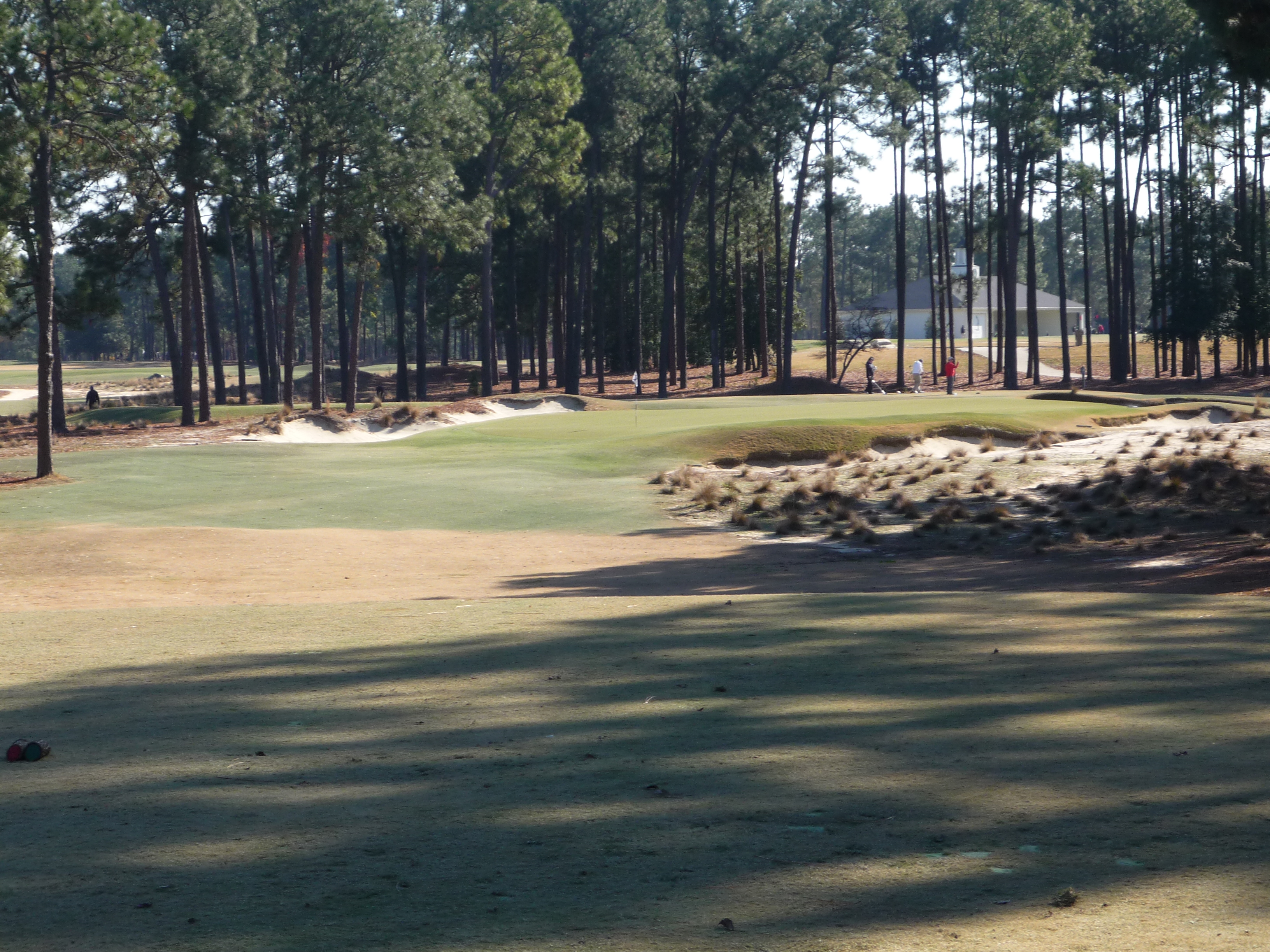
Pinehurst Resort & Country Club (No. 2) – Played November 2014
- Rankings: Golf Digest #40, Golf Digest Public #7, Golf Magazine #10, Golf Magazine Public #3
- Location: 1 Carolina Vista Drive, Pinehurst, North Carolina
- Year: 1907
- Original Architect: Donald Ross
- Additional Work By: Robert Trent Jones, Rees Jones, Bill Coore, Ben Crenshaw, & George Waters
- Course Access: Resort
- Walking Rules: Carts & Caddies Available
Score Card Information:
- U.S. Open: 7,588 yards, Par 70, 76.5 Rating/138 Slope
- Blue: 6,961 yards, Par 72, 73.7 Rating/133 Slope
- White: 6,307 yards, Par 72, 70.7 Rating/126 Slope
- Green: 5,801 yards, Par 72, 68.2 Rating/123 Slope
- Red: 5,257 yards, Par 72, 70.0 Rating/117 Slope
The Pinehurst Resort is one of the most famous resorts in the United States. It is a massive property with five golf courses on the main site. An additional four courses (No. 6 – No. 9) are each located on their own sites close by. In addition there are three hotels associated with the resort and a spa.
The main property is dripping with history. Just look at a list of the tournaments that have been hosted on the famed Pinehurst No. 2 course.
- 1999, 2005, and 2014 US Open
- 2014 US Women’s Open
- 1994 US Senior Open
- 1962 & 2008 US Amateur
- 1989 US Women’s Amateur
- 1951 Ryder Cup
- 1936 PGA Championship
- 1991-1992 Tour Championship
- 1973-1982 Hall of Fame Classic/World Open
- 1901-Present North & South Men’s Amateur
- 1903-Present North & South Women’s Amateur
- 1902-1951 North & South Open Championship
There is plenty of memorabilia in the clubhouse signifying the momentous moments. I have included an assortment below.
They start with the poignant images of the 1999 US Open won by the late Payne Stewart.
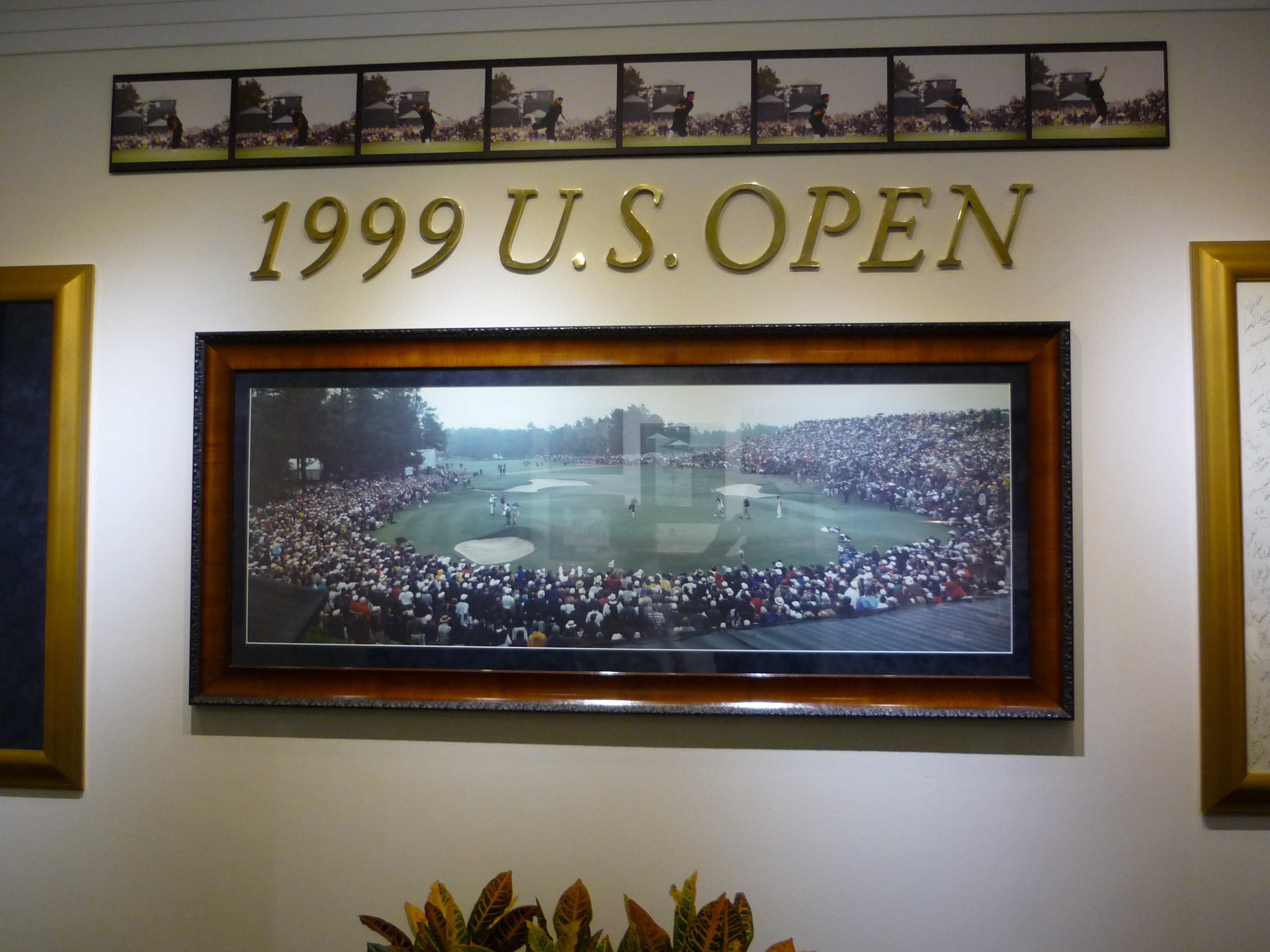
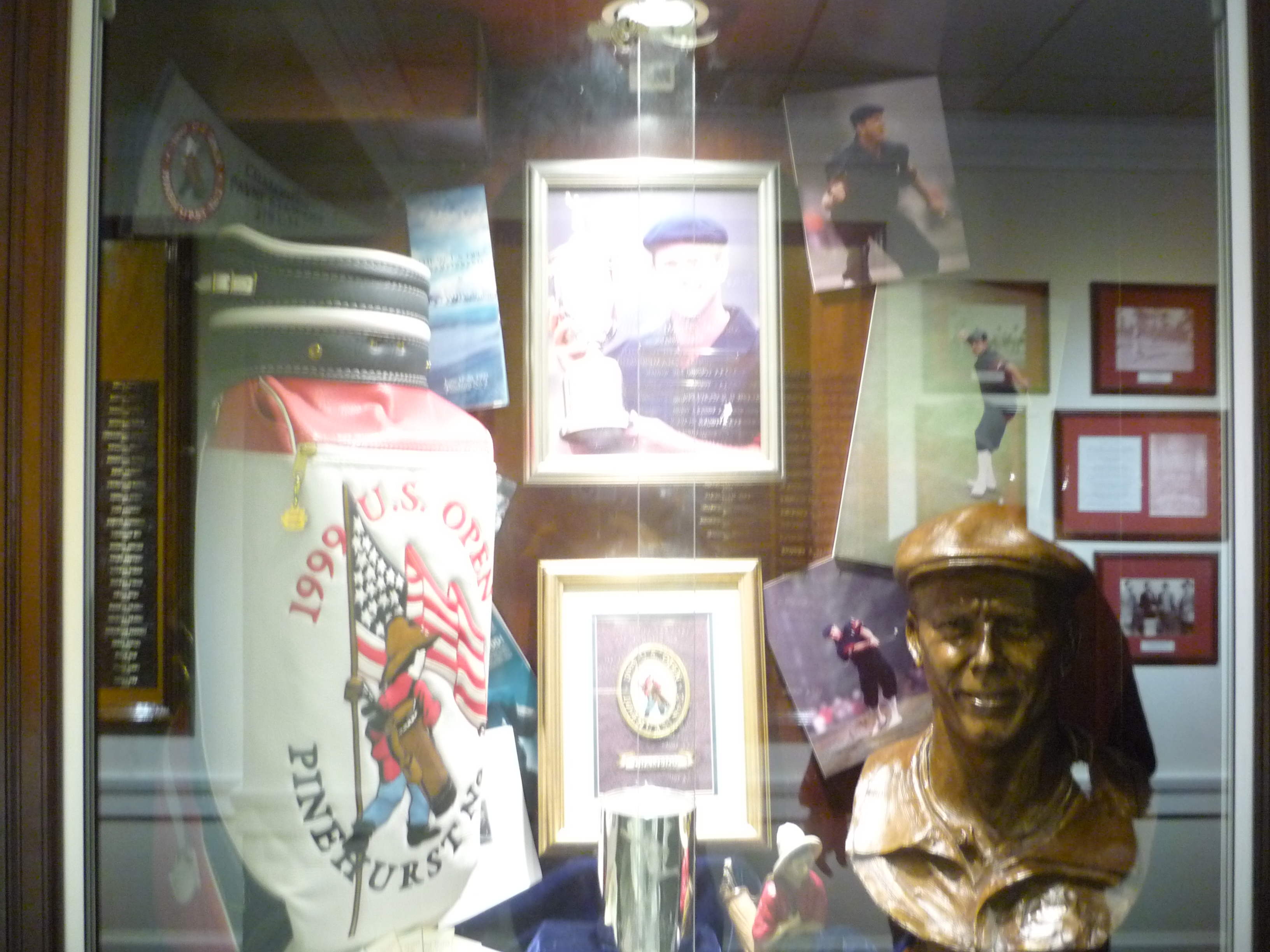
And continues with the 2014 Opens won by Martin Kaymer and Michelle Wie.
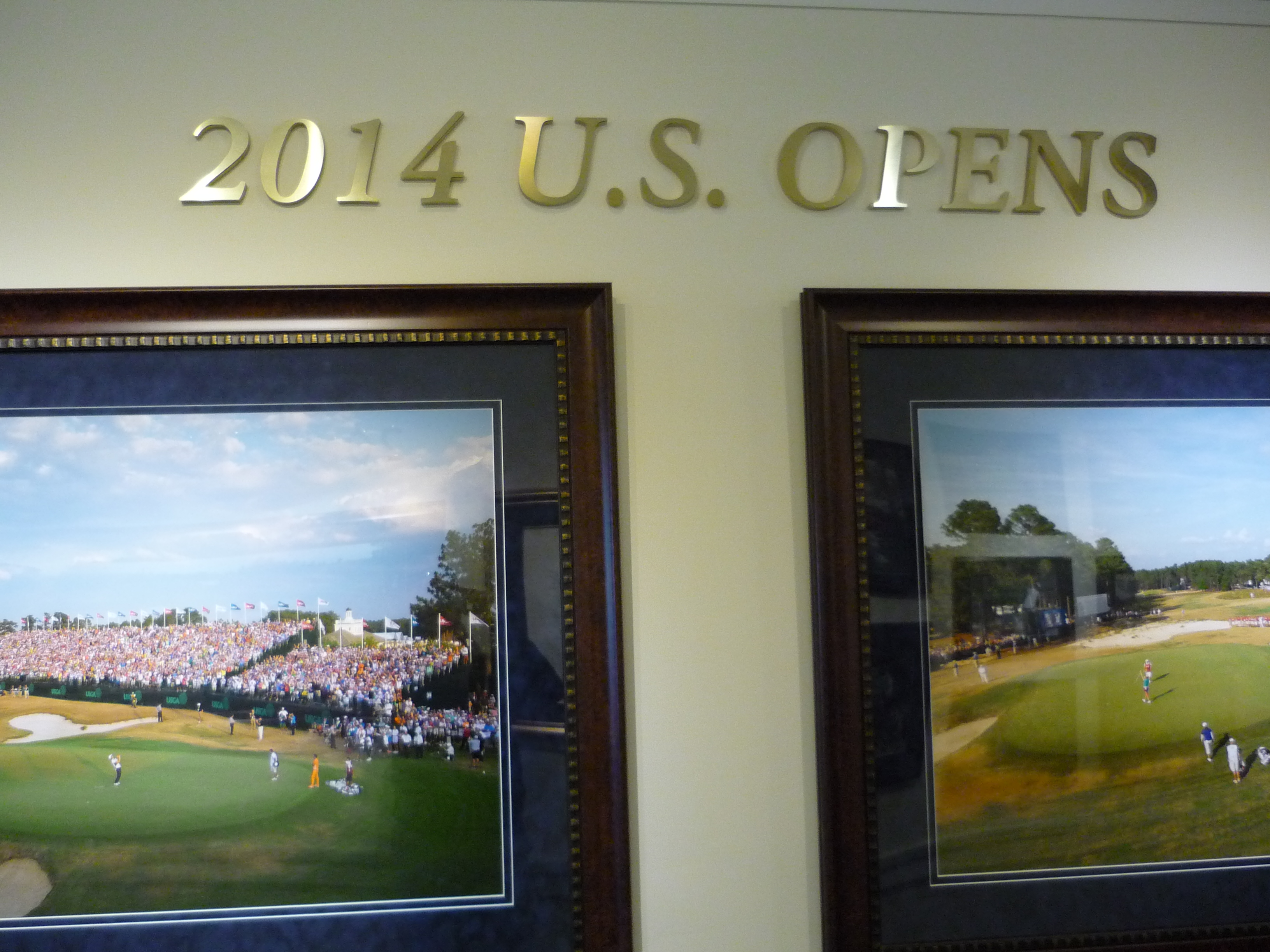
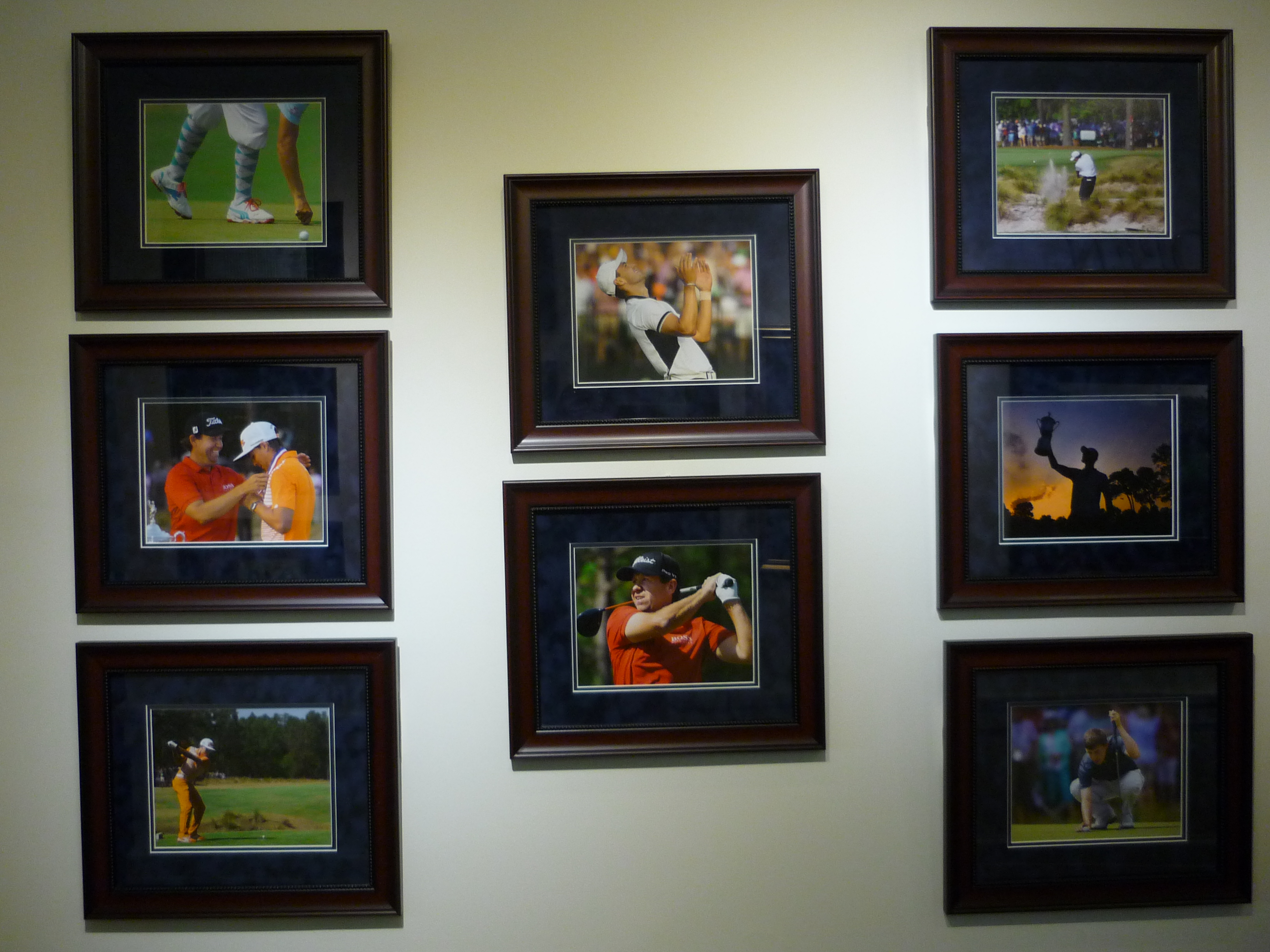
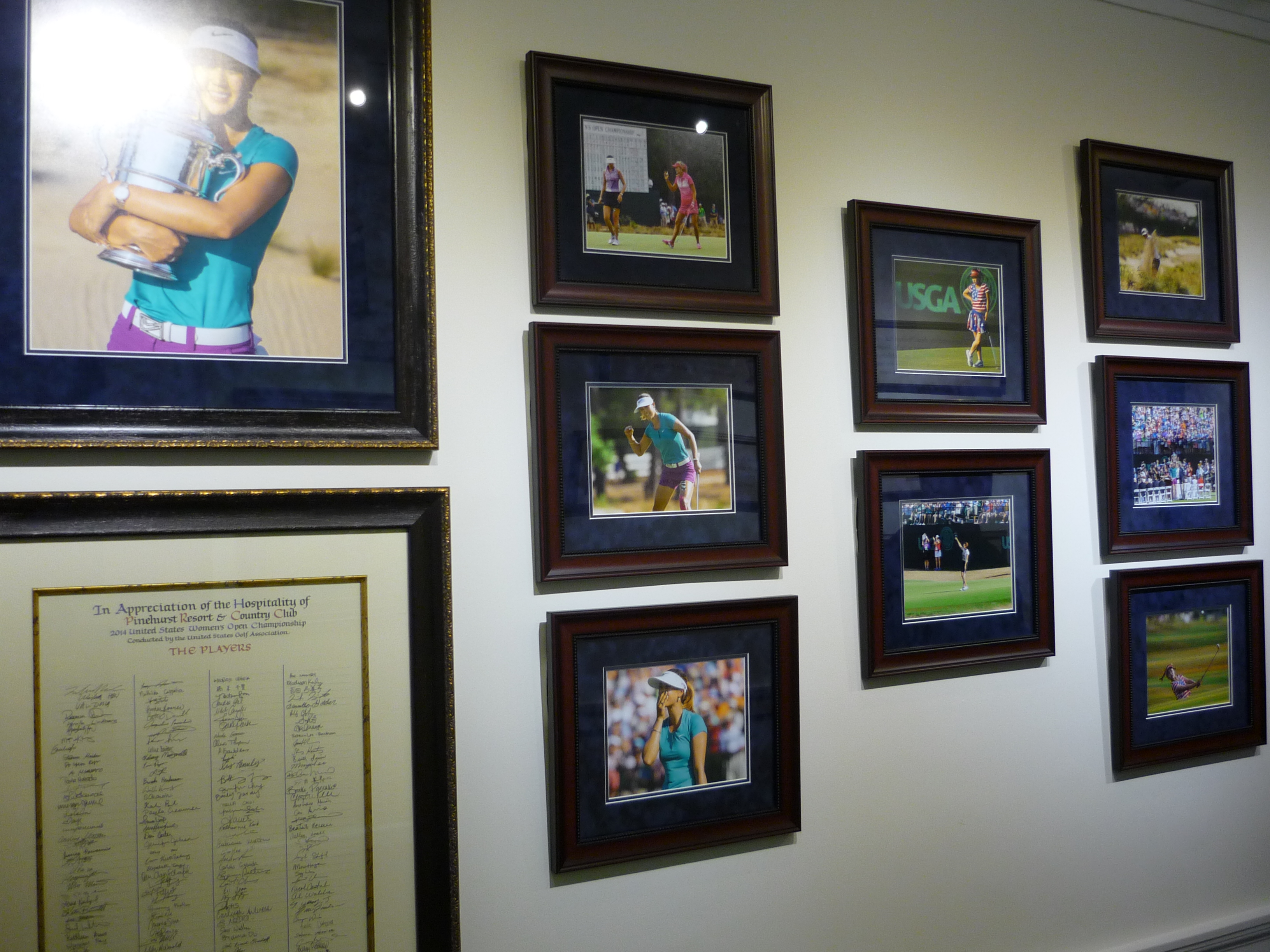
I couldn’t include all the pictures that extend down the long hallway that extends the length of the building. Don’t miss it if you are in the area.
The history does not end with the tournaments played. The resort was founded by the soda fountain wonder James Walker Tufts in 1895. It was owned by the Tufts family until 1970. It changed hands a few more times until landing with the Dedman family. The resort was designated as a National Historic Landmark in 1996.
An interesting tidbit about the resort is that it is the home of three championship croquet courts and a lawn bowling court. You see these right when you walk into the clubhouse.
Let’s get down to the crown jewel of Pinehurst. That is Pinehurst No. 2. It was designed by Donald Ross and opened in 1907. A redesign by Robert Trent Jones in 1974 followed. Later in 2010 the team of Bill Coore & Ben Crenshaw did a full-scale restoration. Coore & Crenshaw removed 35 acres of turf in their project and removed a bunch of irrigation. They also reintroduced hardpan, natural bunker edges, and native wire grasses to the site. The grasses on the course consist of Tifway Bermuda on the fairways and tees, the rough is native sandscape, and the greens are Champion Ultradwarf. All in all there are 111 bunkers on 196 acres of property with 61 of those acres being turf.
I had played the course many times during my two summers working here. Unfortunately those had all been before the restoration. Luckily, a fundraising event came up last November and I got to go around the venerable track again.
We played the white tees and all yardages reflect that.
Hole 1 – 376 yards – Par 4
Ross eases you into Pinehurst No. 2 with a shorter hole. Driver is not needed due to the fact that the fairway runs out on the right side. A well-struck shot will run on the firm fairways.
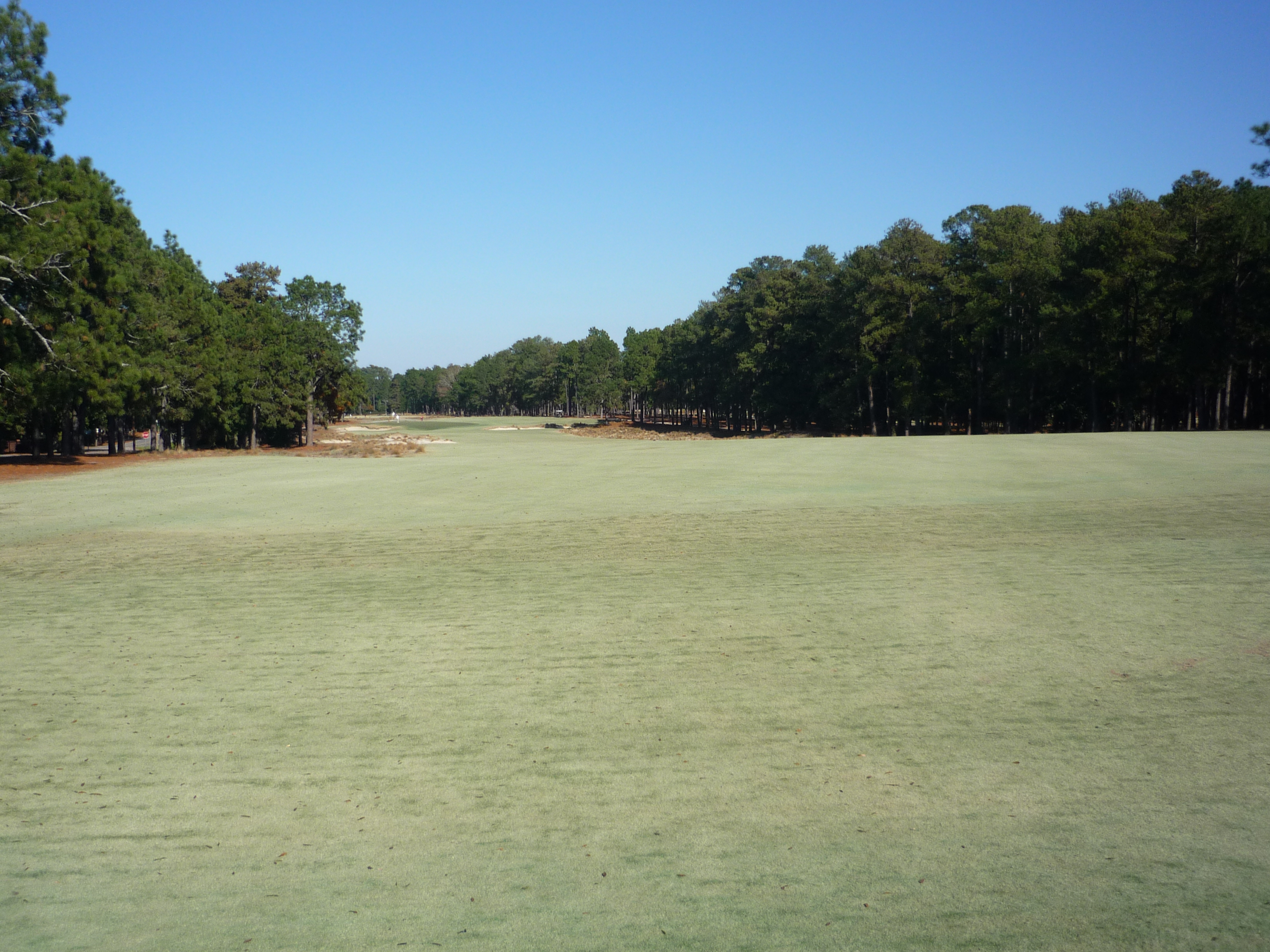
The approach quickly introduces you to the turtleback greens that are the hallmark of No. 2. I am only going to say this once, you need to be on the right level of these greens.
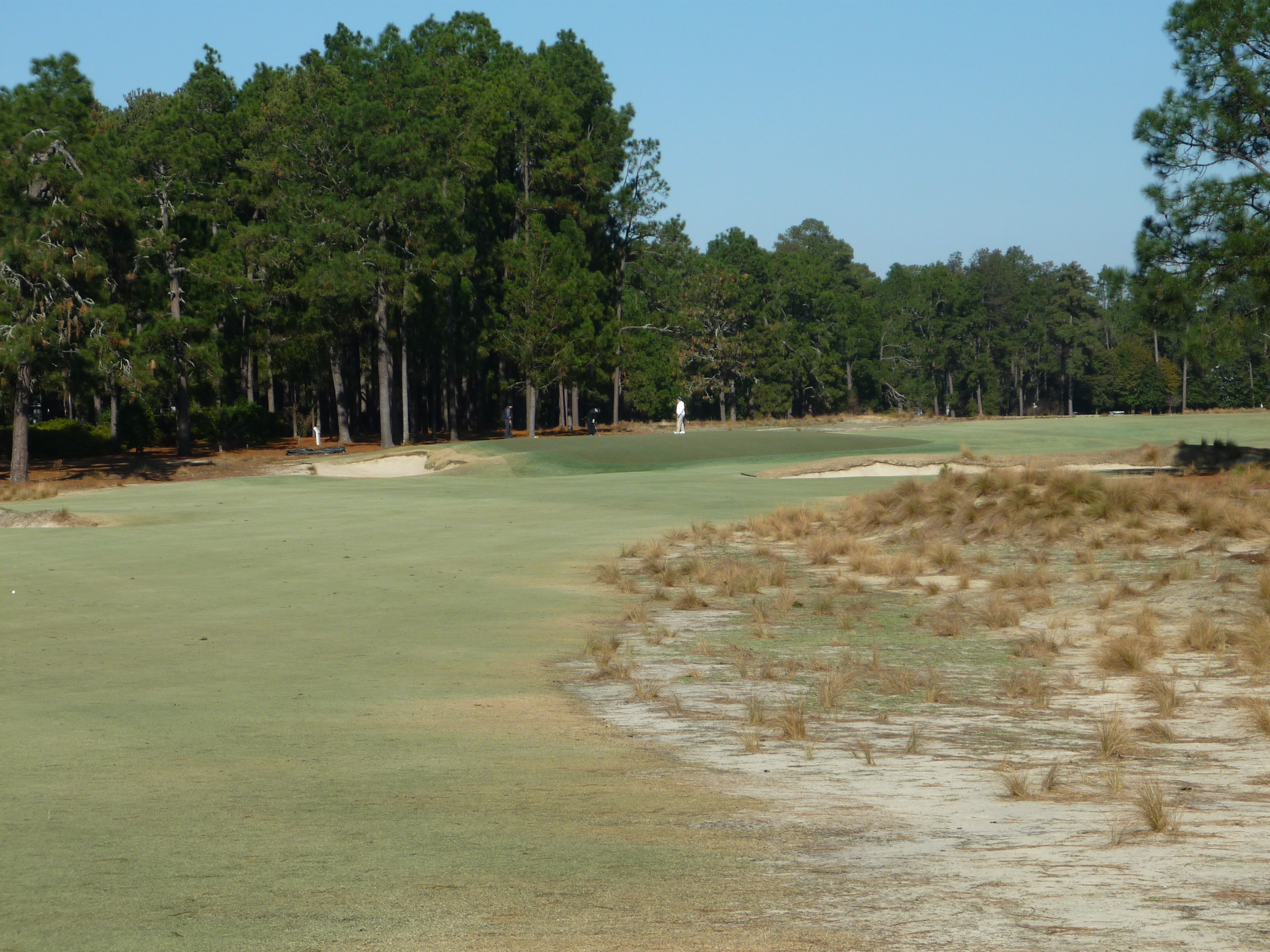
Shots played in the wrong direction will roll off the big slopes and leave you tough chips up the shaved slopes.
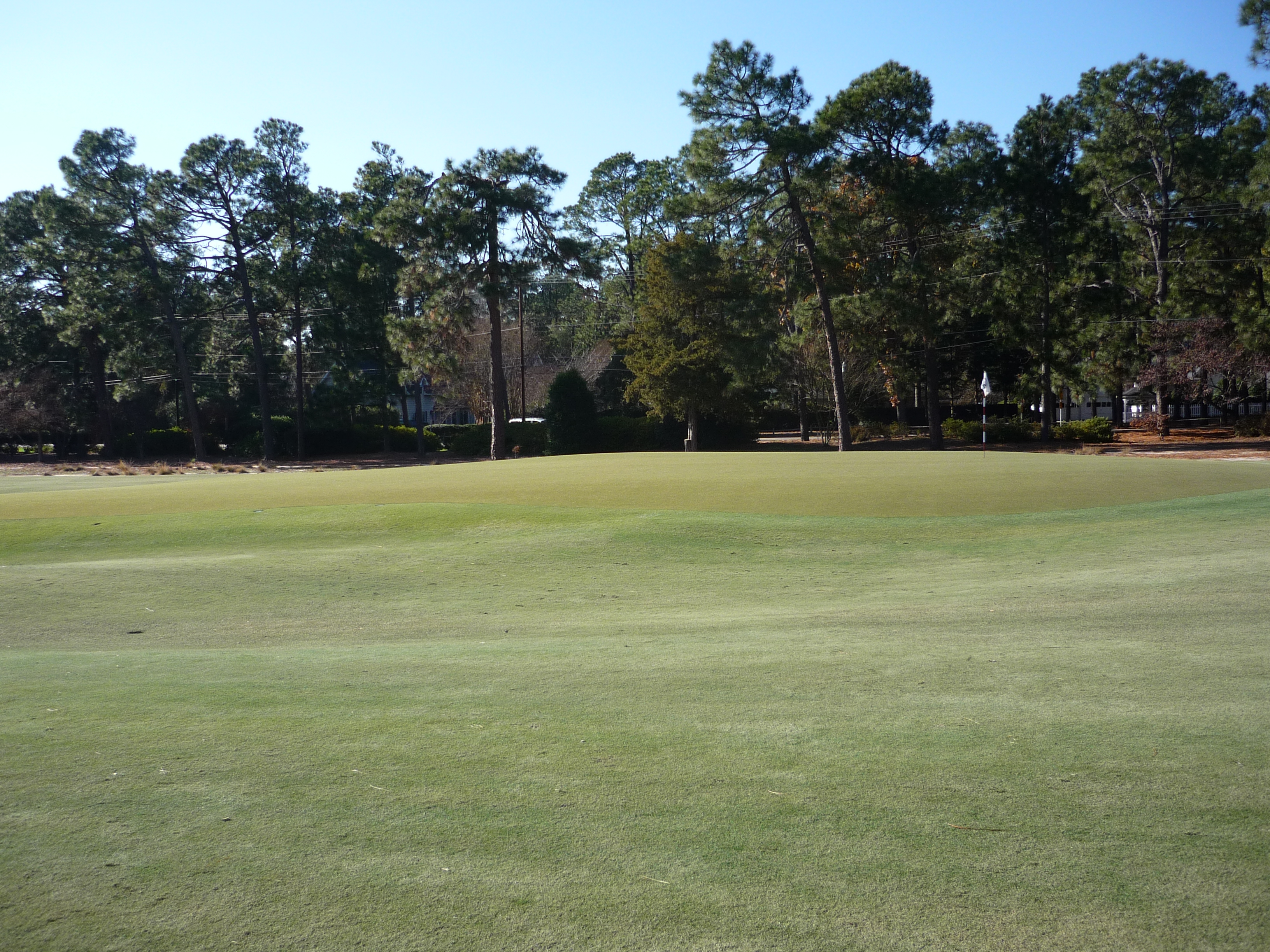
Hole 2 – 411 yards – Par 4
The second plays a little downhill and to the right. You will notice that the course is not intimidating off the tee. It is truly defended by its greens. You just need a long one out there.
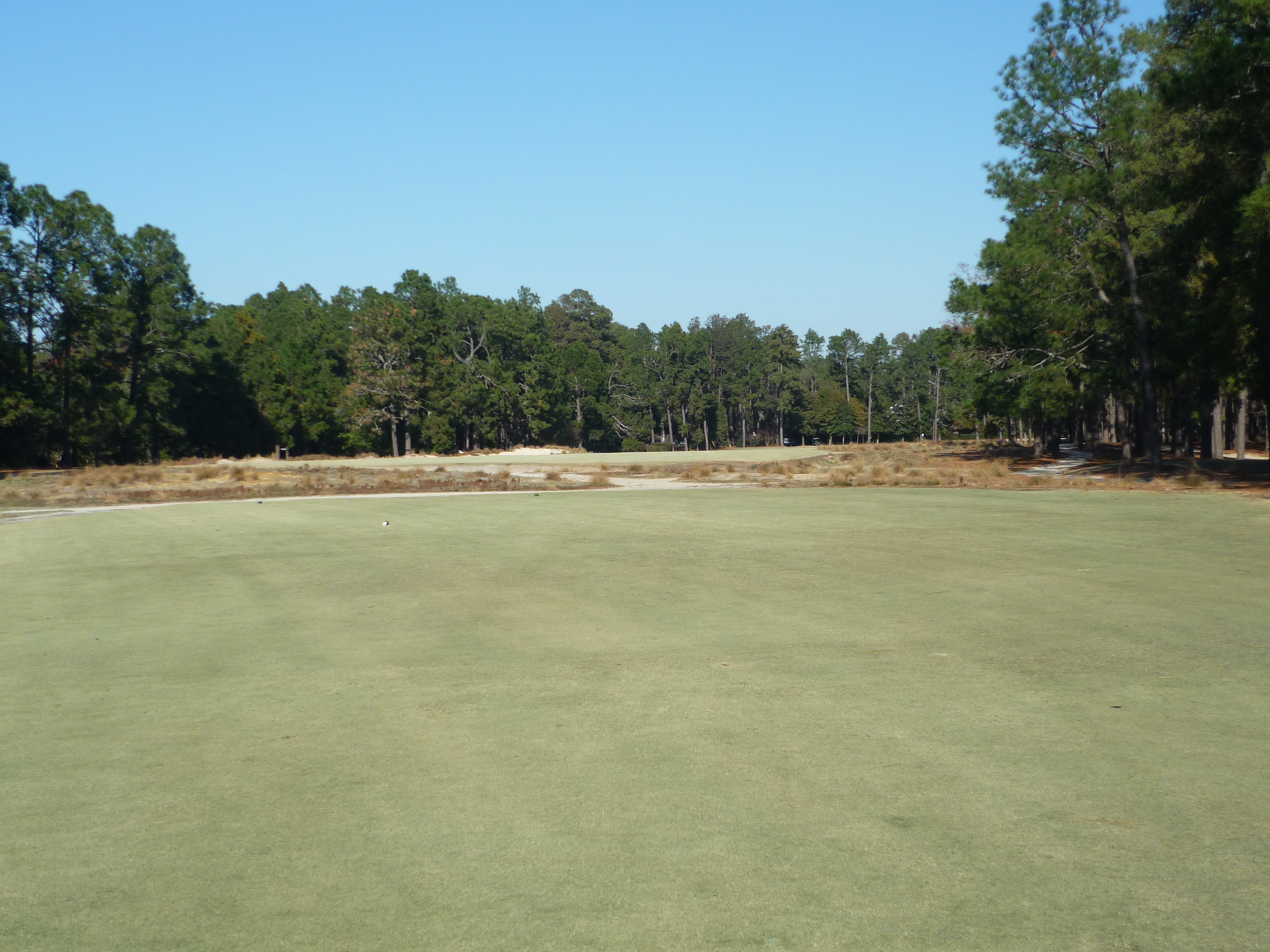
The approach shot is played to a green guarded by a front bunker. You do not want to miss long here.
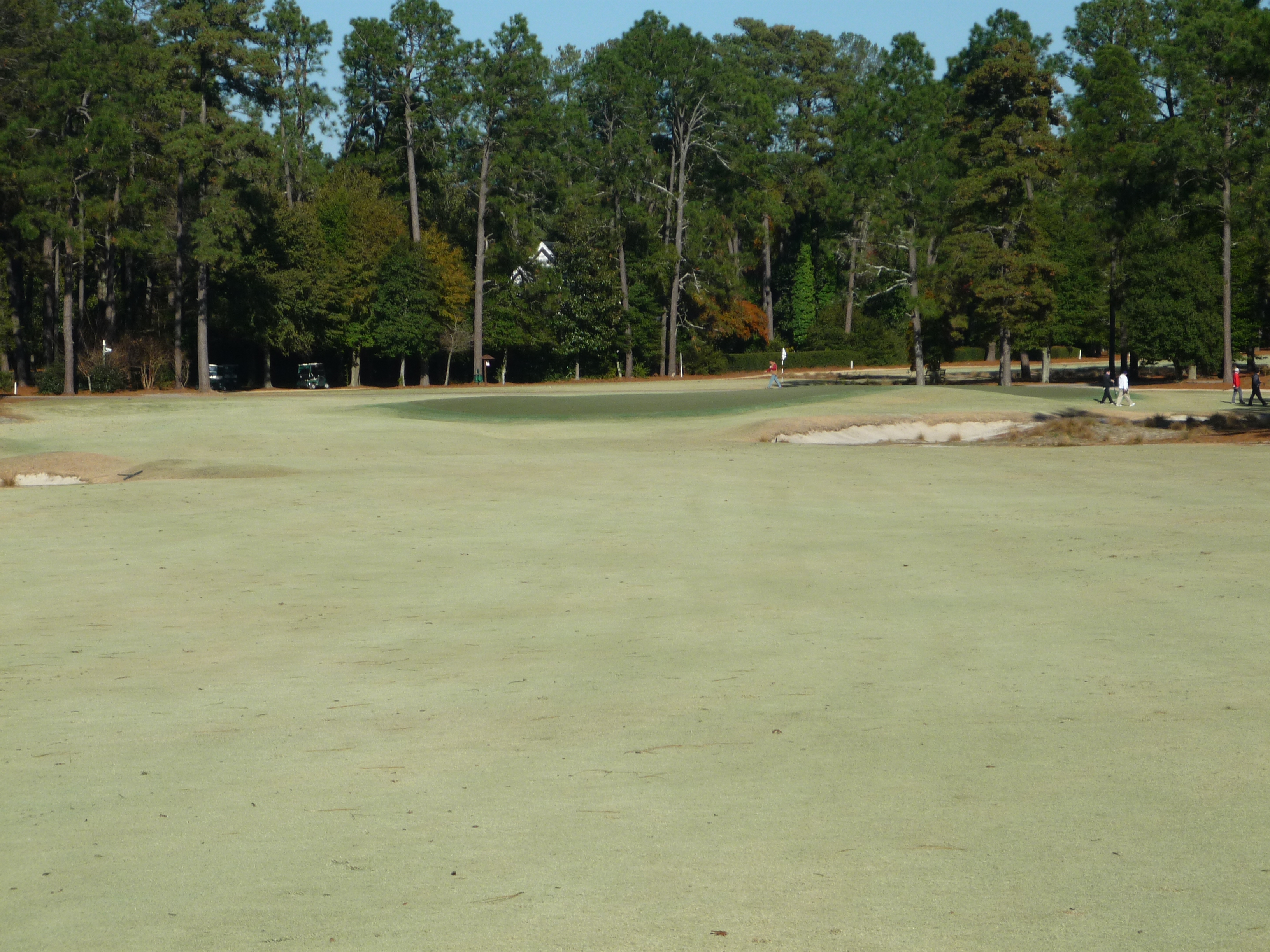
Here is the green from behind. You can see the slope. It is much easier to get up and down from the front.
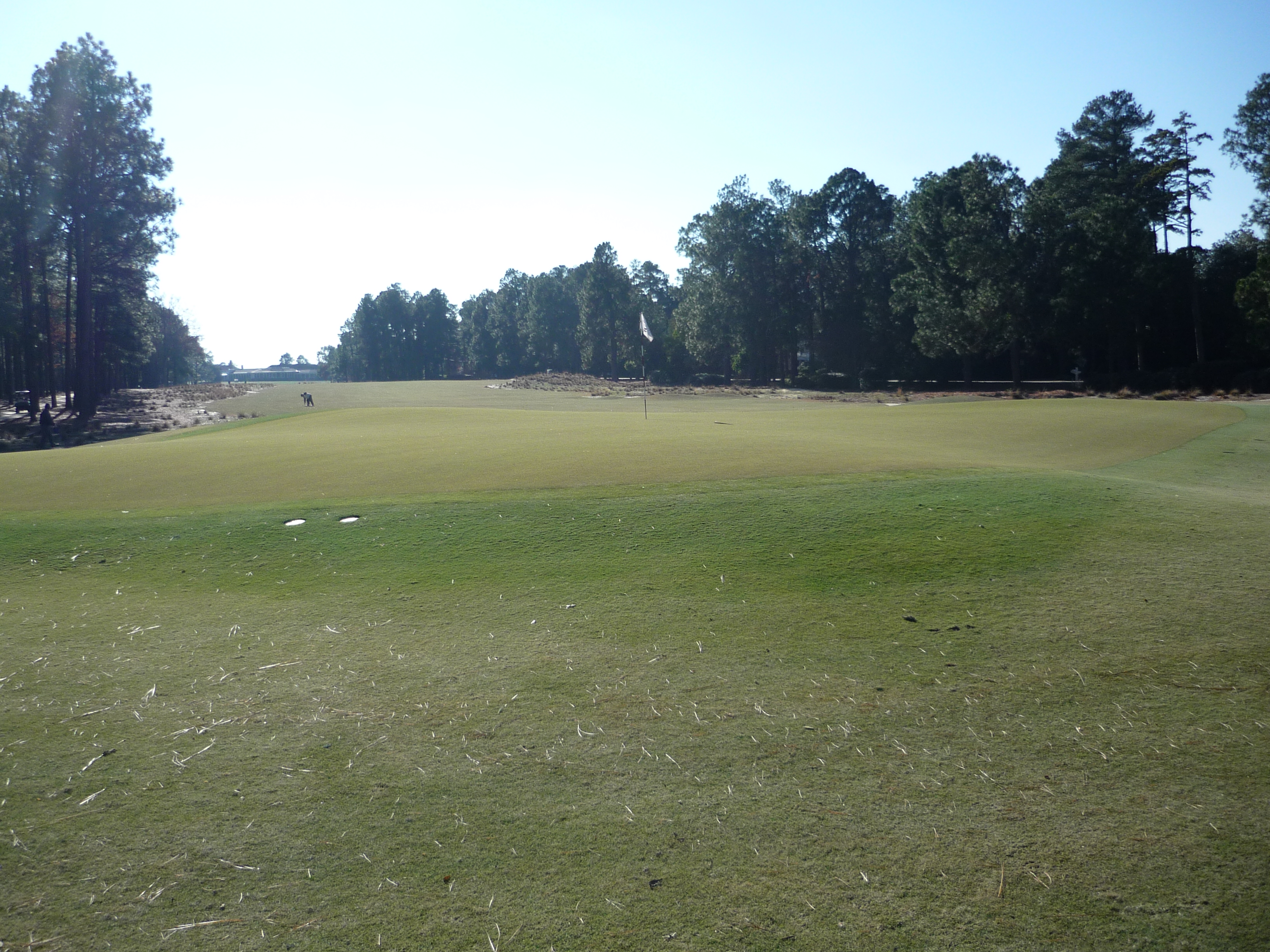
Here is a side view of the green.
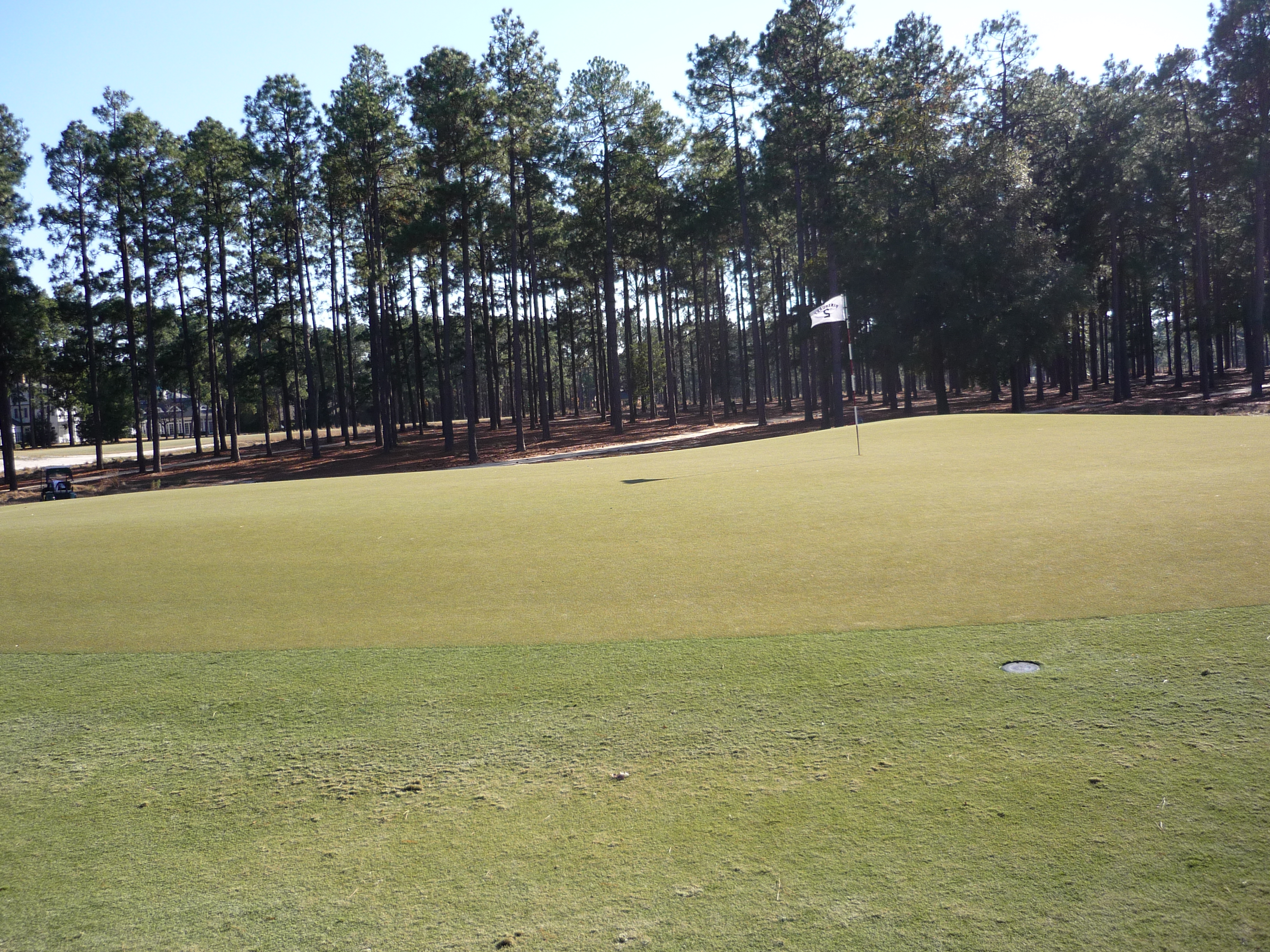
Hole 3 – 330 yards – Par 4
This is probably the tightest tee shot on the course. You really don’t need driver here as there is out of bounds left and wiregrass right.
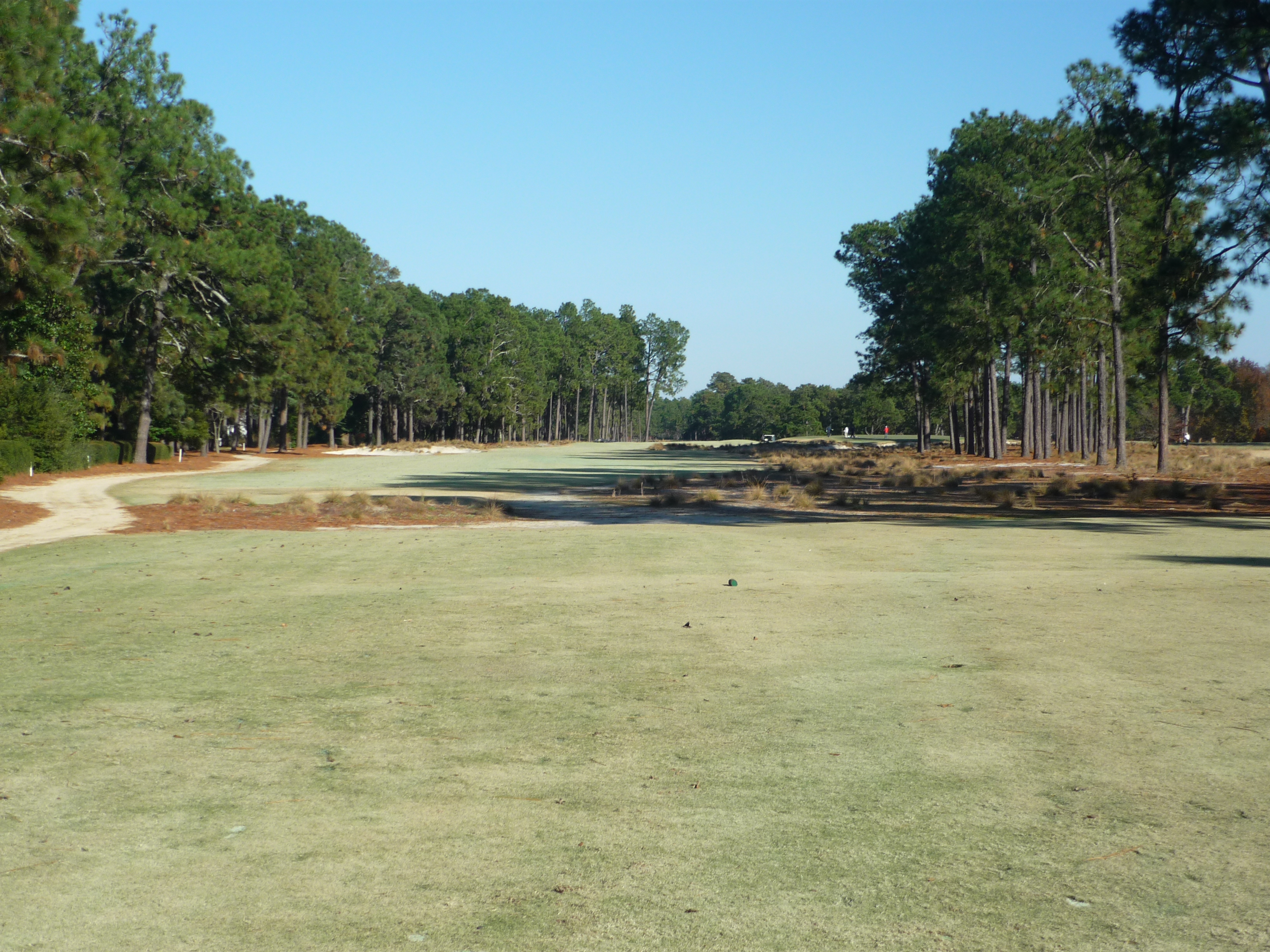
The second shot plays uphill to a heavily guarded green that again should not be missed long.
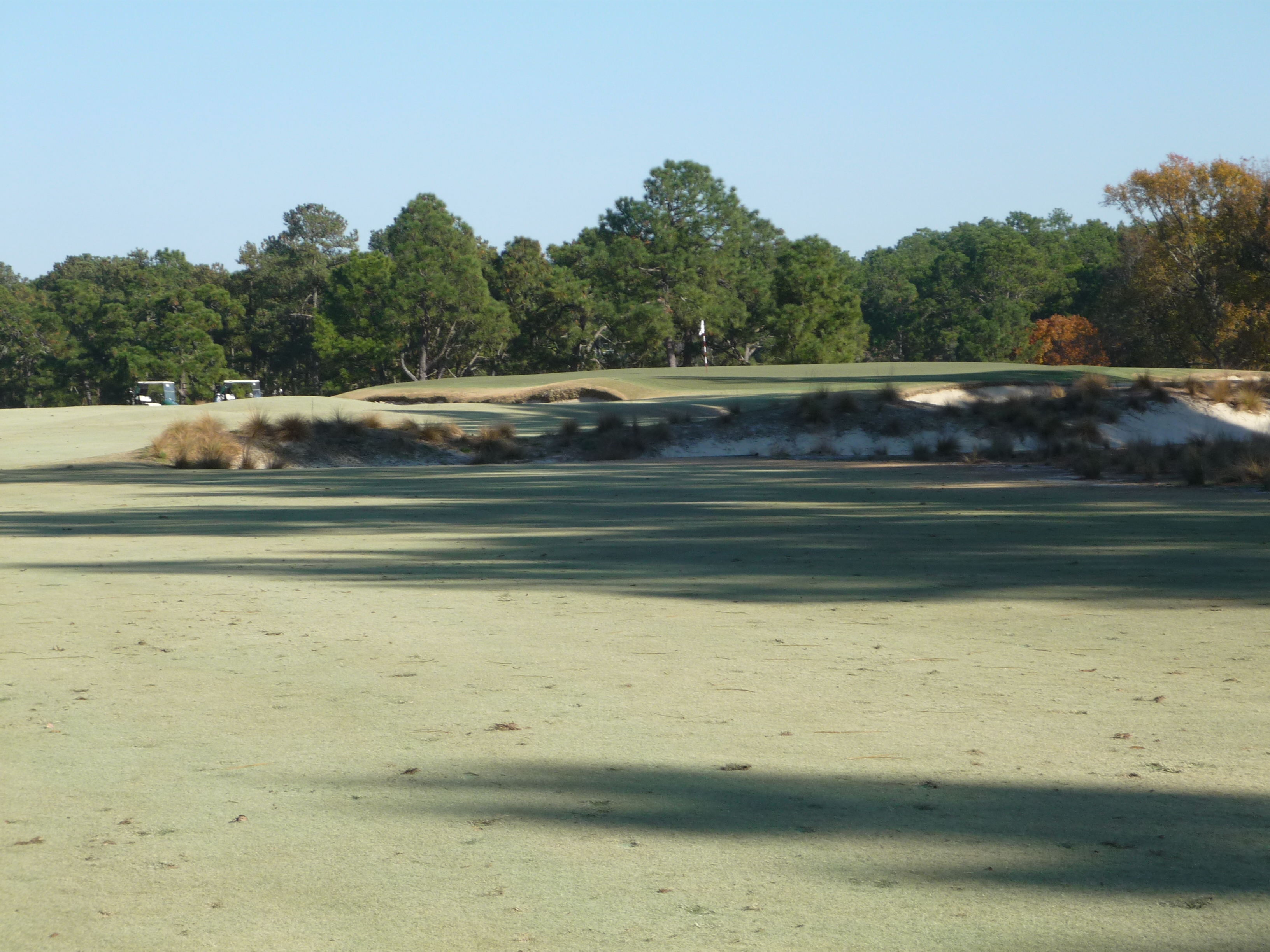
Here is the home of Donald Ross just off the fairway. This reminded me of MacKenzie’s house on Pasatiempo.
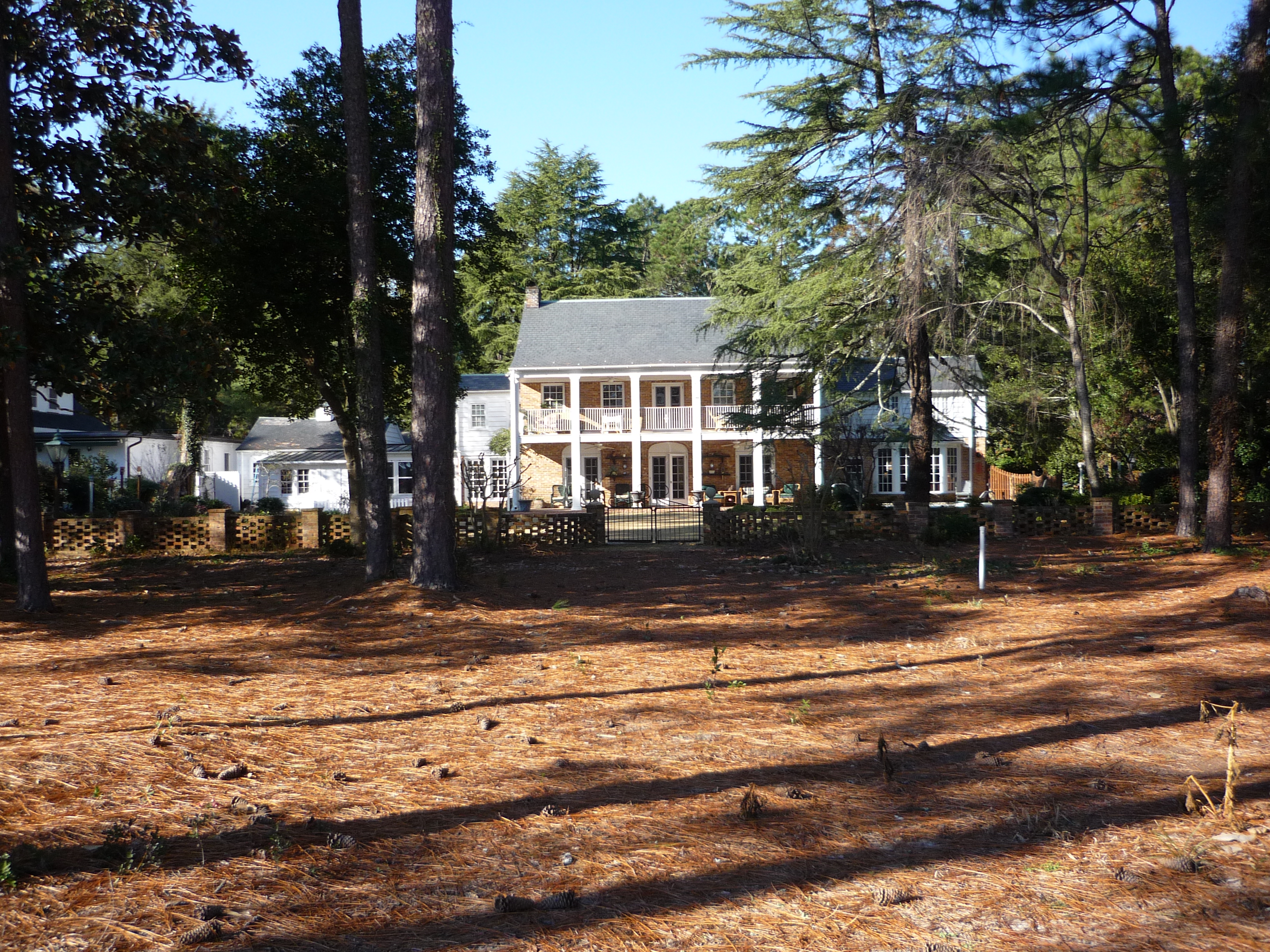
The green slopes back to front and is quite inviting for a short approach. This is from just short of the left greenside bunker.
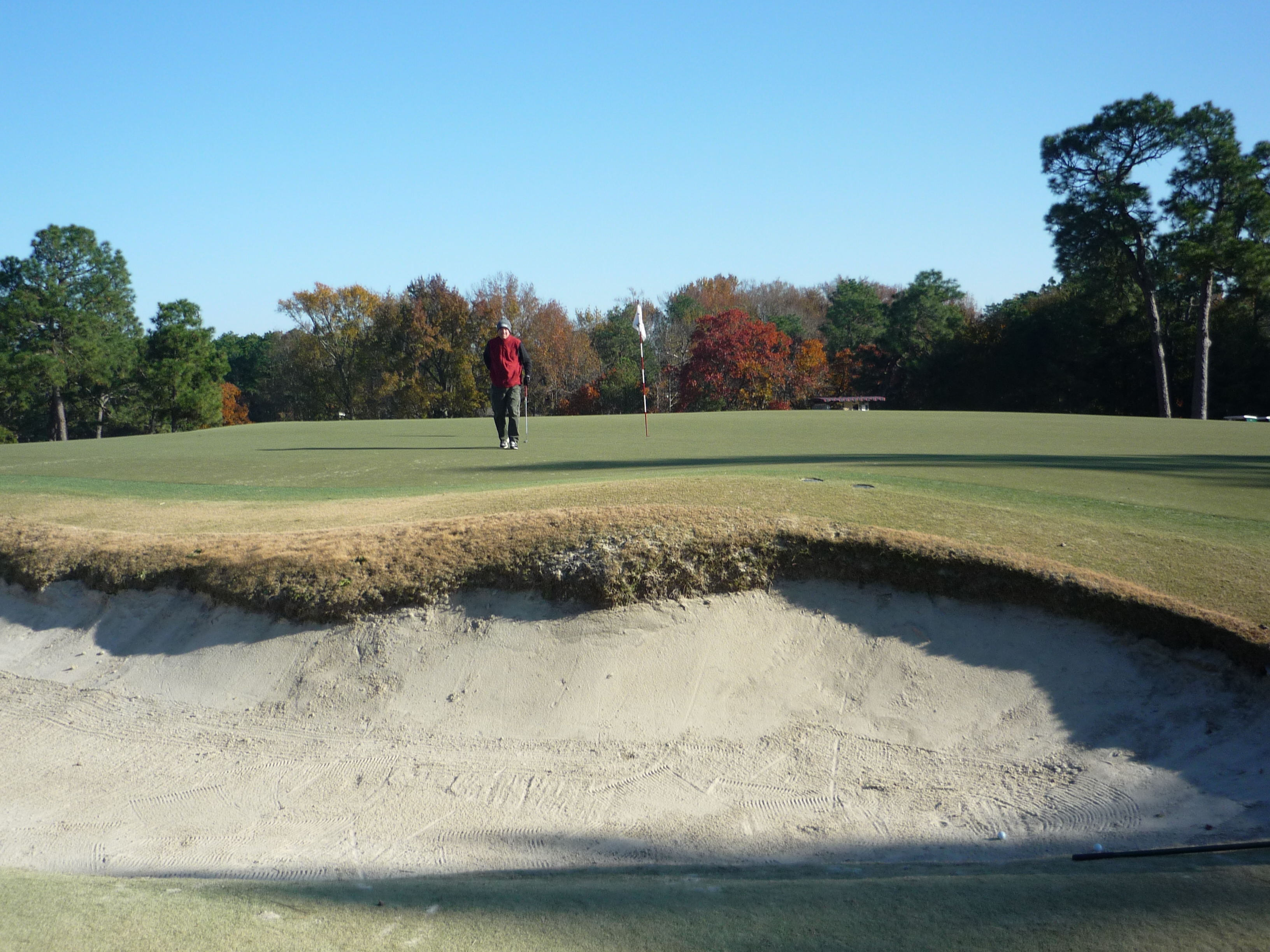
Hole 4 – 434 yards – Par 4
They have changed the pars of the fourth and fifth holes since I last played the course. This used to be a par five but now is a long, uphill par four. There is plenty of room in the fairway.
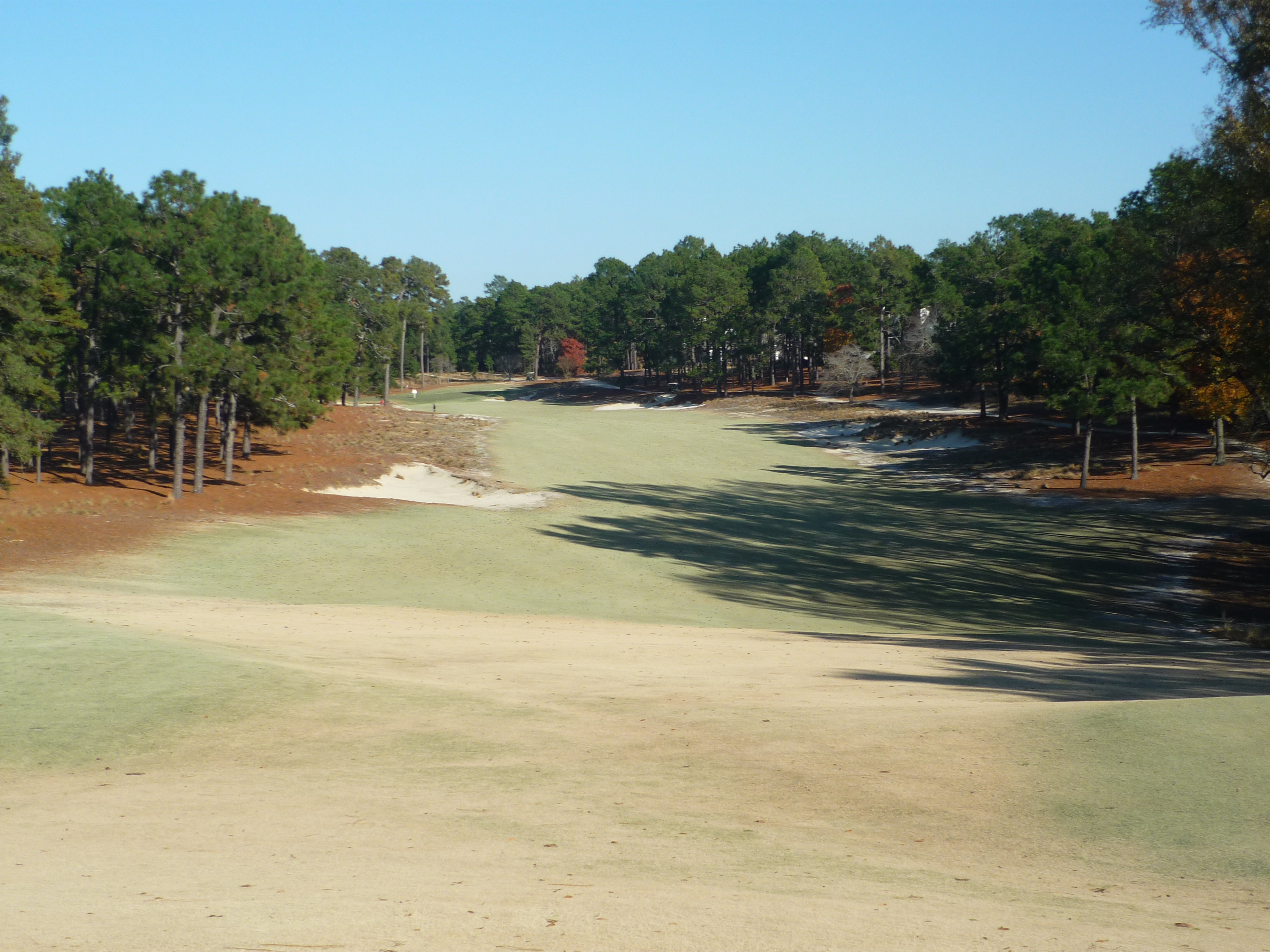
Here is the long approach shot.
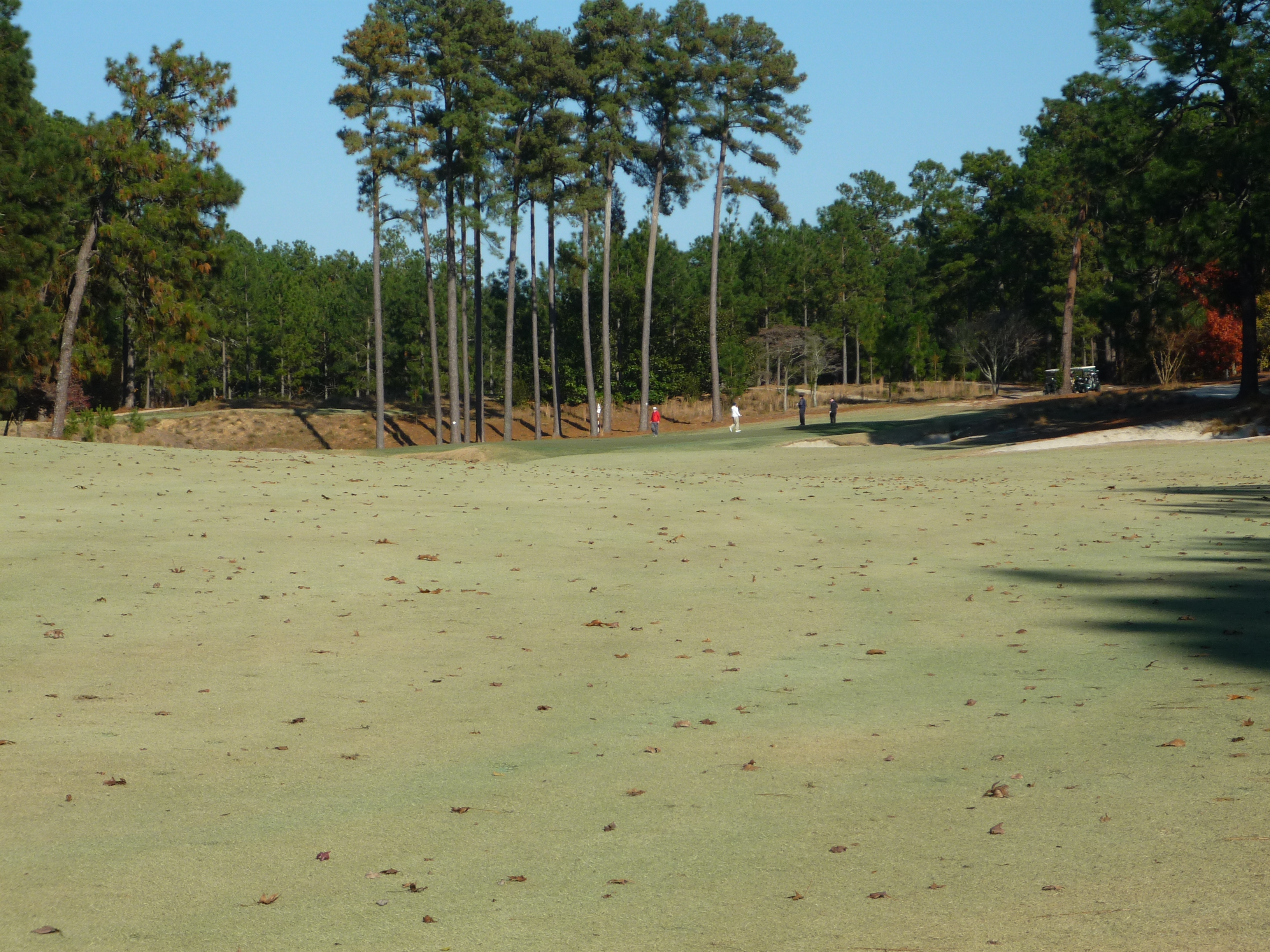
Hole 5 – 462 yards – Par 5
The fifth is now a short par five. The fairway cants to the left making a slinging draw up the right side the best play.
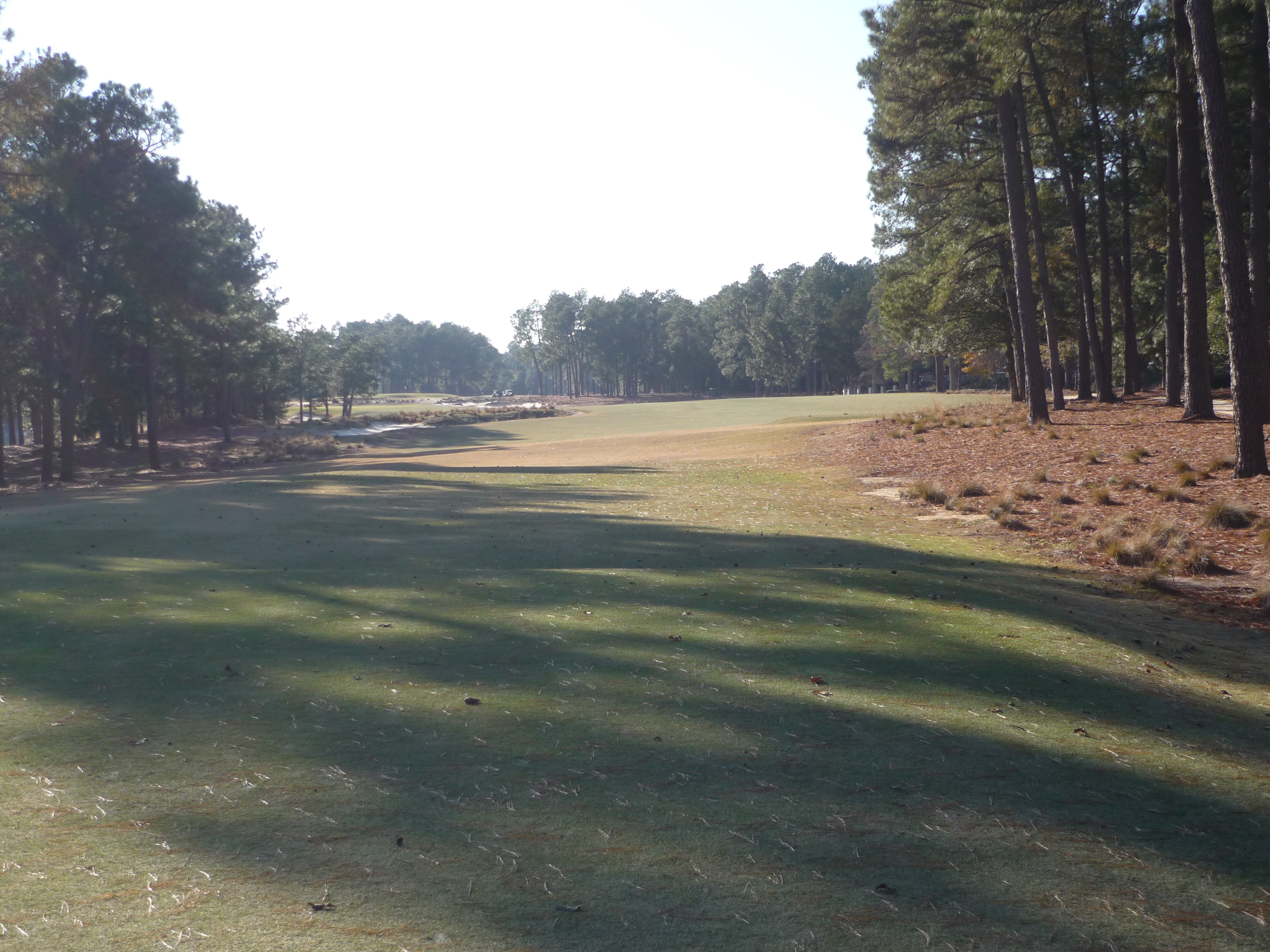
The approach plays up the hill and will also bound to the left. You do not want any part of the bunkers on the left. They are well below the putting surface.
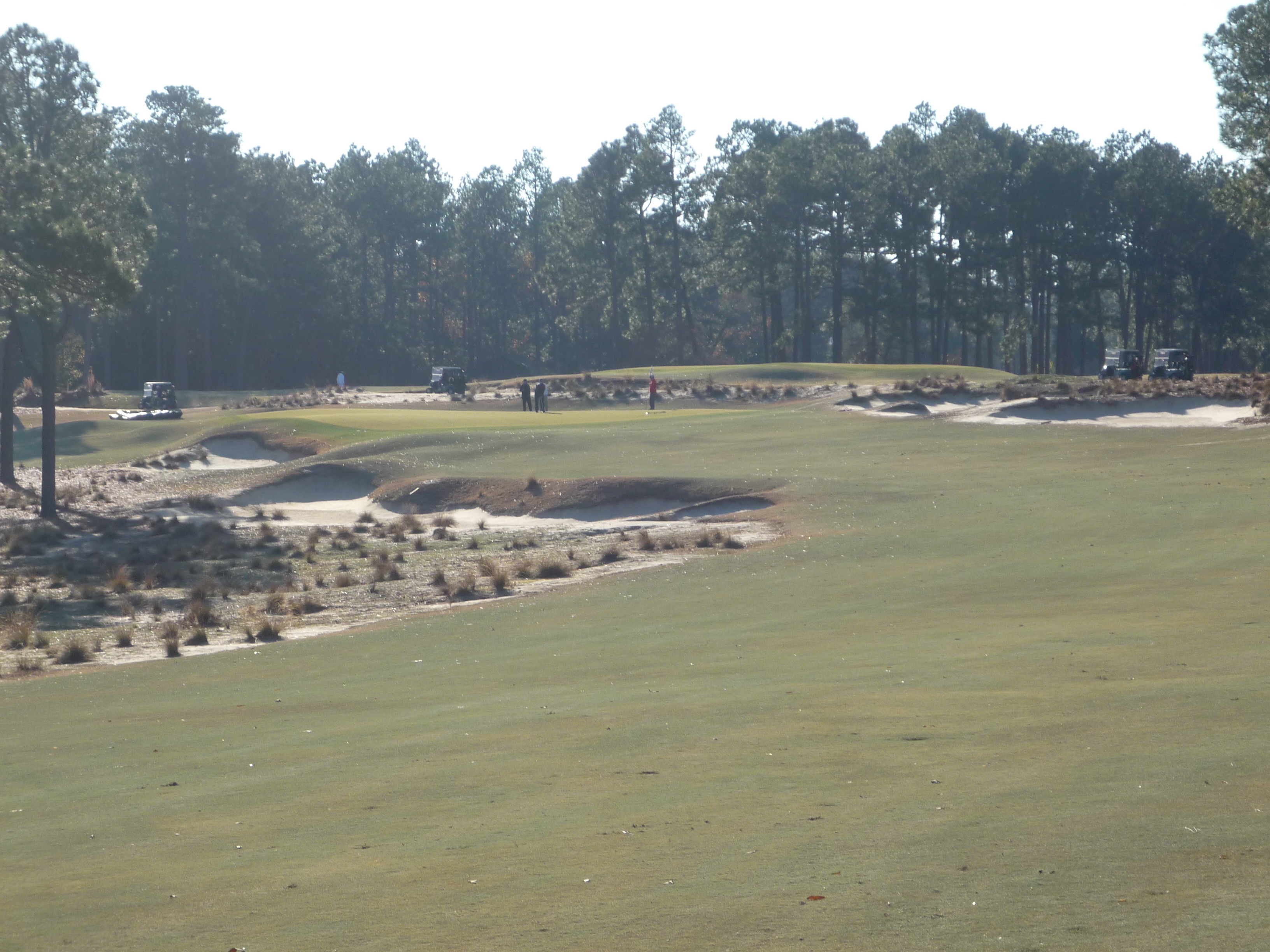
Here is the green from the right side.
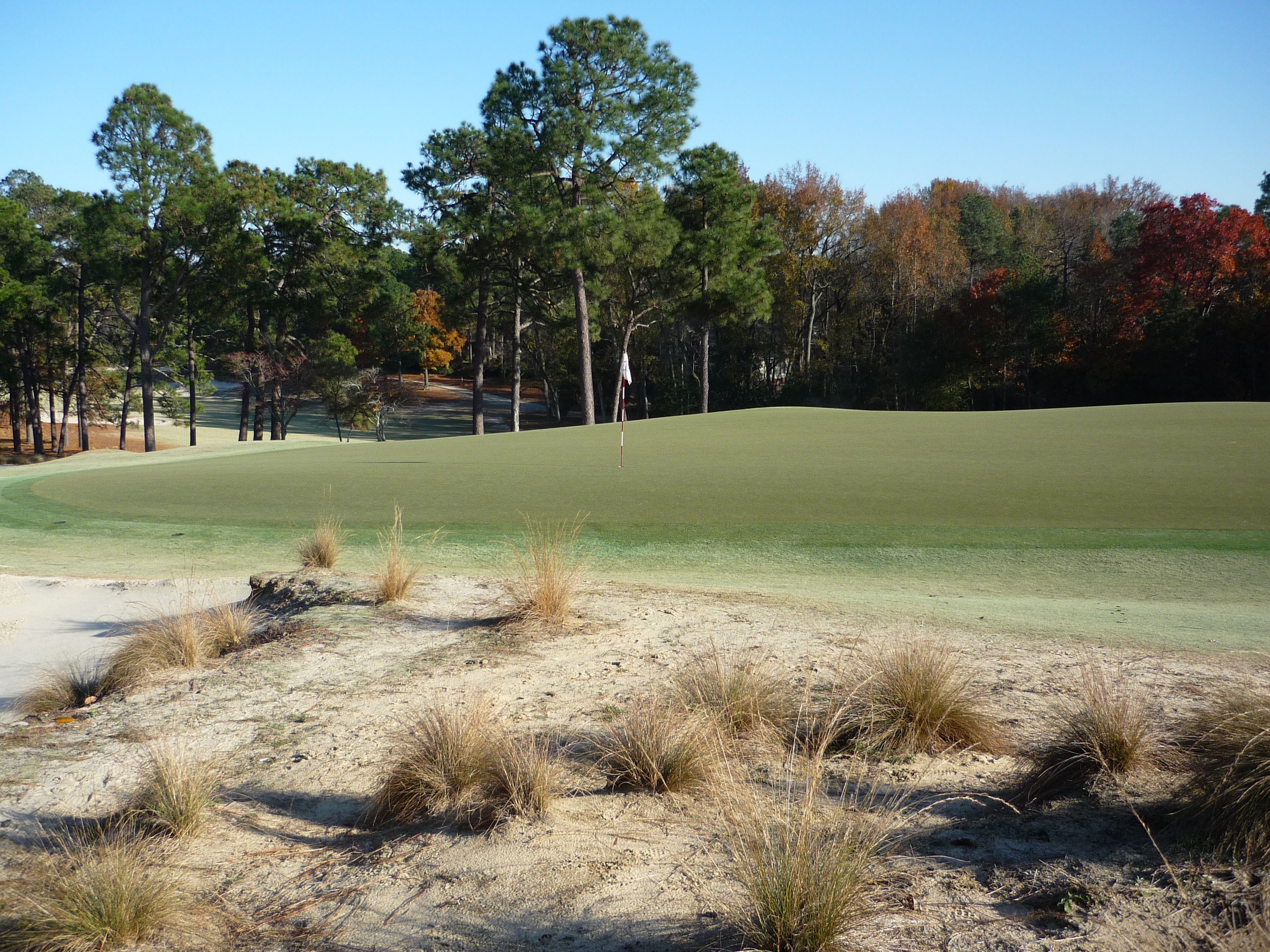
Here is another vantage point from short and right of the green. You can see the big fall off on the left.
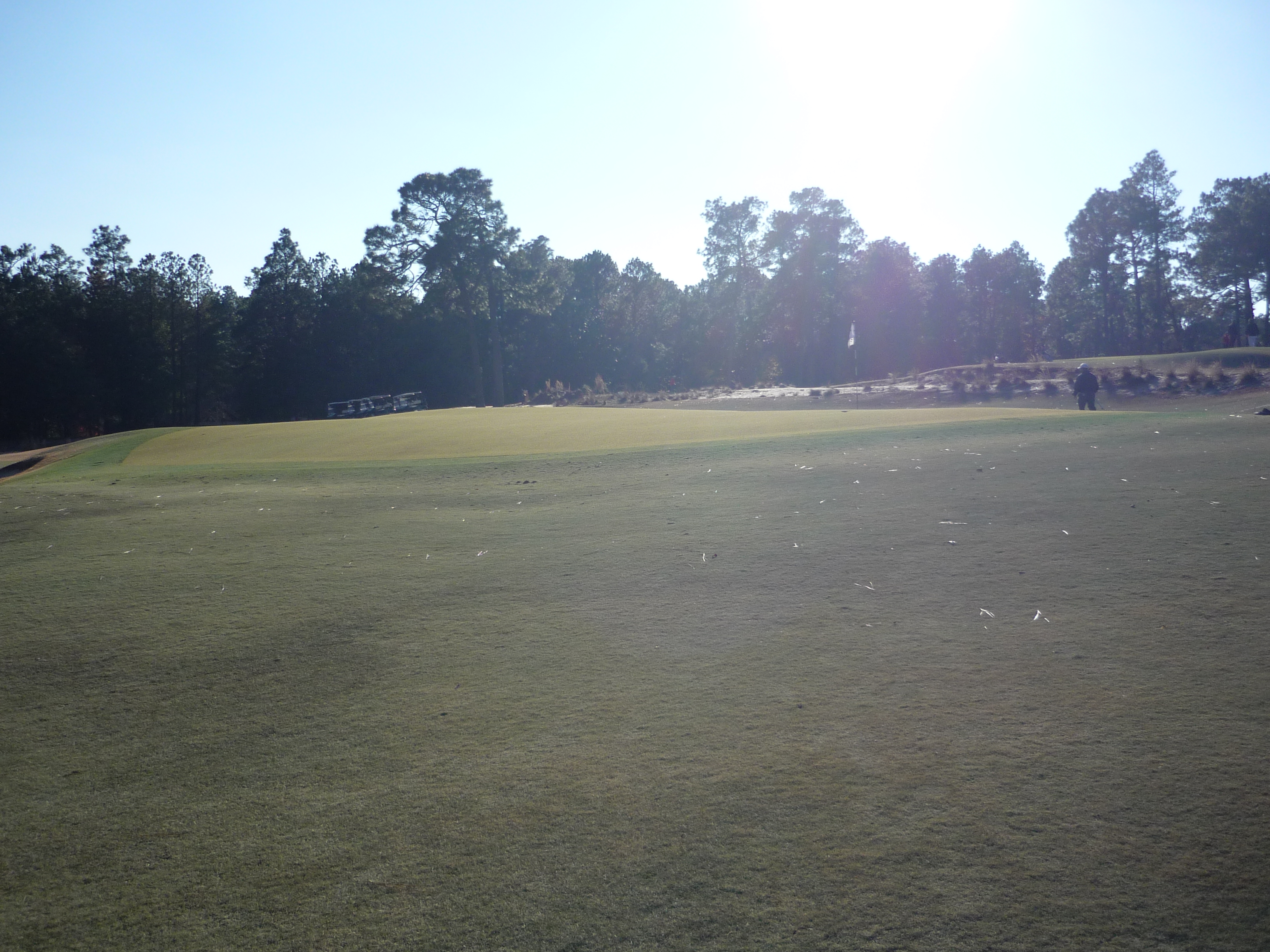
Hole 6 – 178 yards – Par 3
This hole is a mid-length one-shotter. The middle of the green is the best play here.
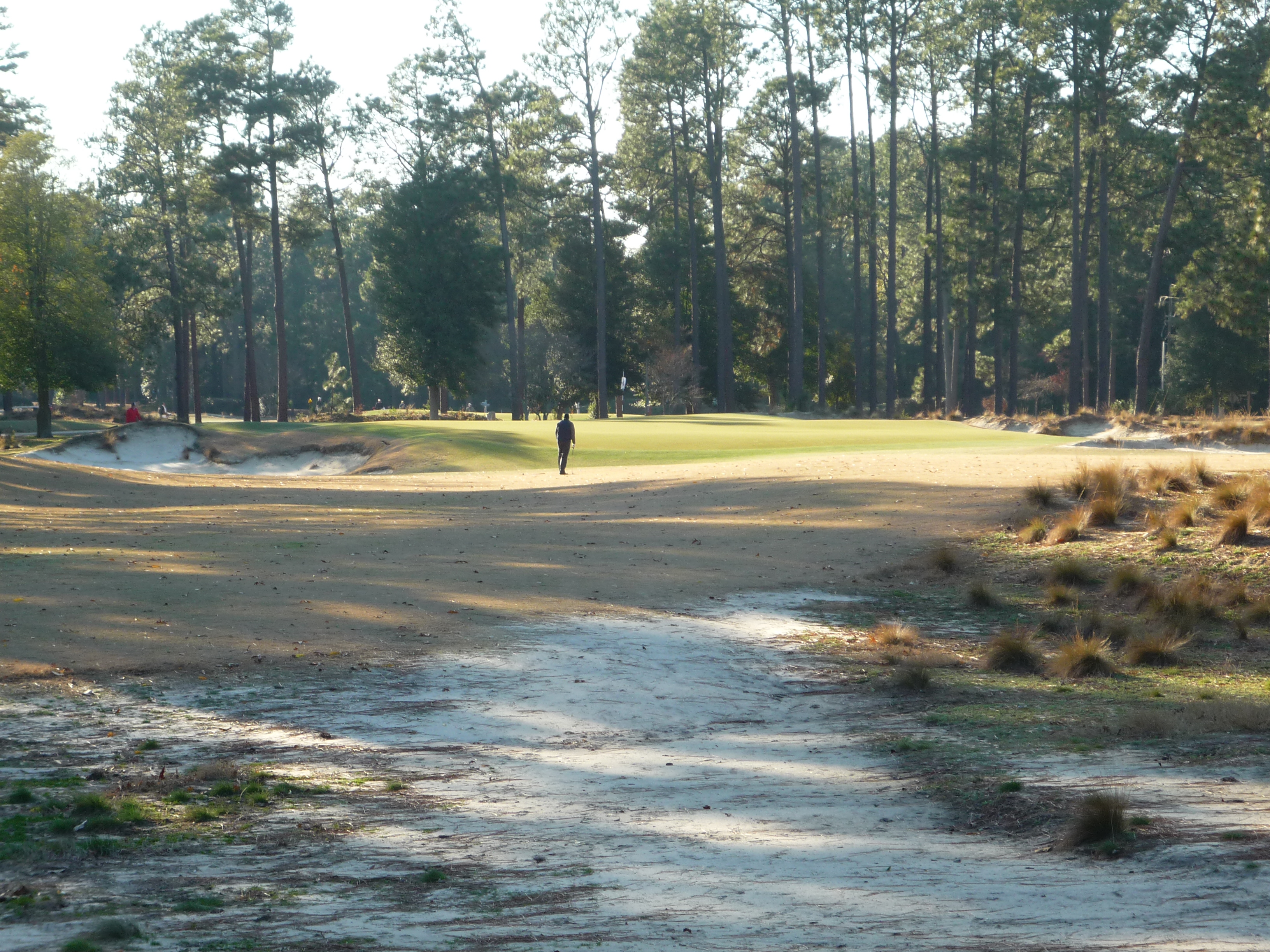
The green drops off as you can see in this shot.
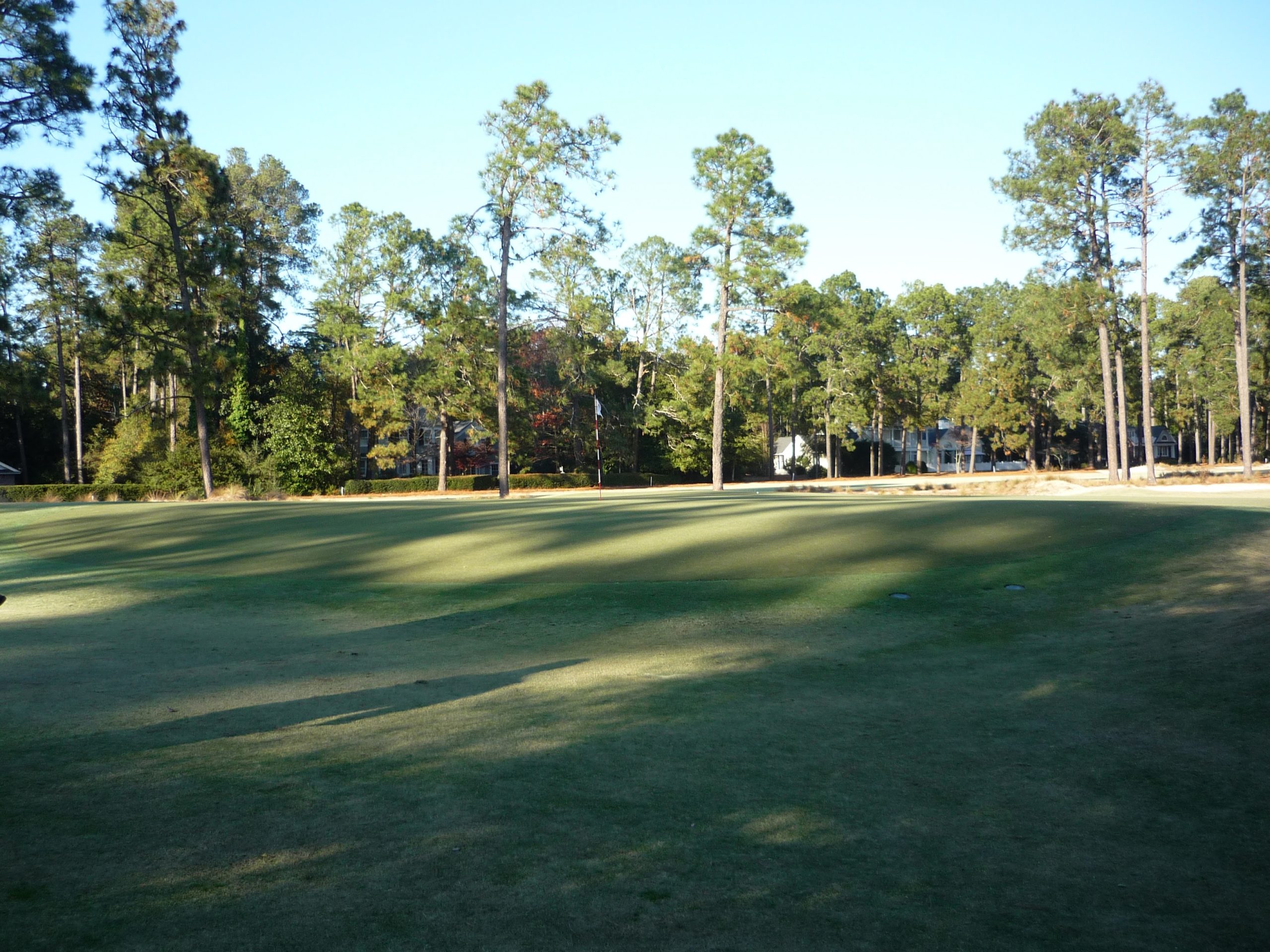
Hole 7 – 385 yards – Par 4
The tee shot here needs to be played right up the path. If you stray too far right the wiregrass comes into play. A fade is the best ball flight for this hole.
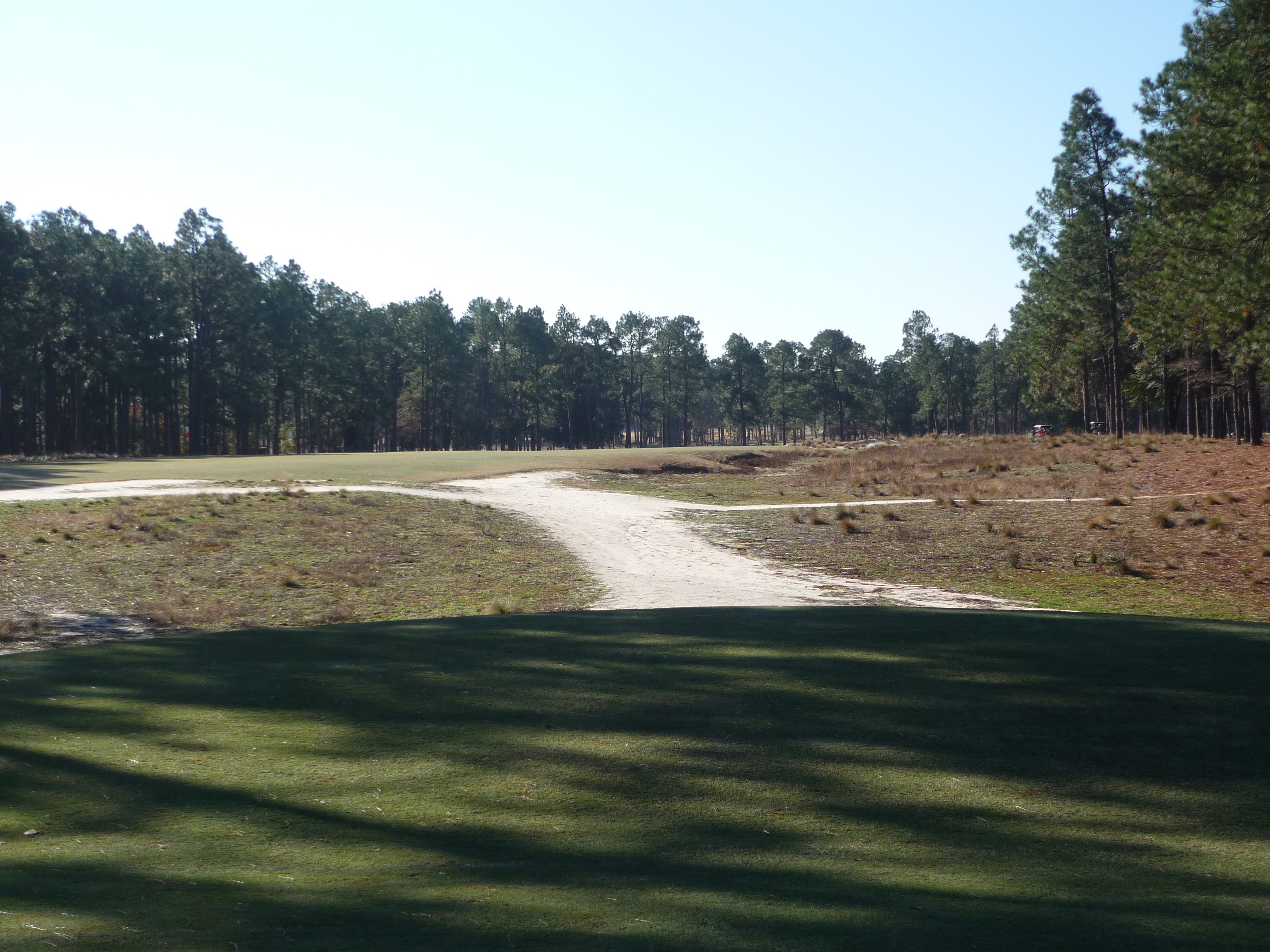
My tee shot was up the right side and this is the angle from that vantage point. You don’t want to miss right of this green.
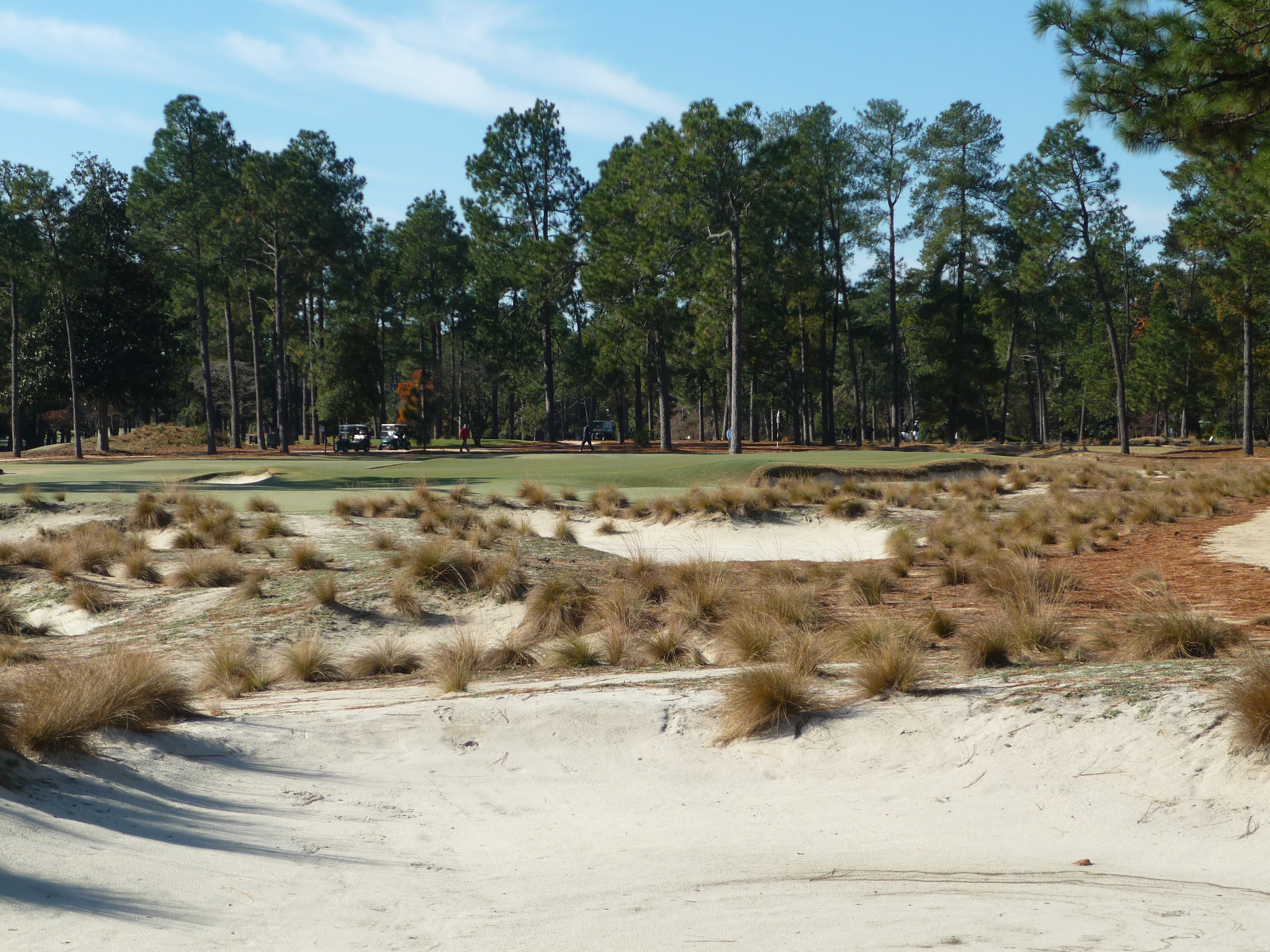
The photo below is from the right side of the green. The bunker runs about midway through the green and makes for a tough up and down.
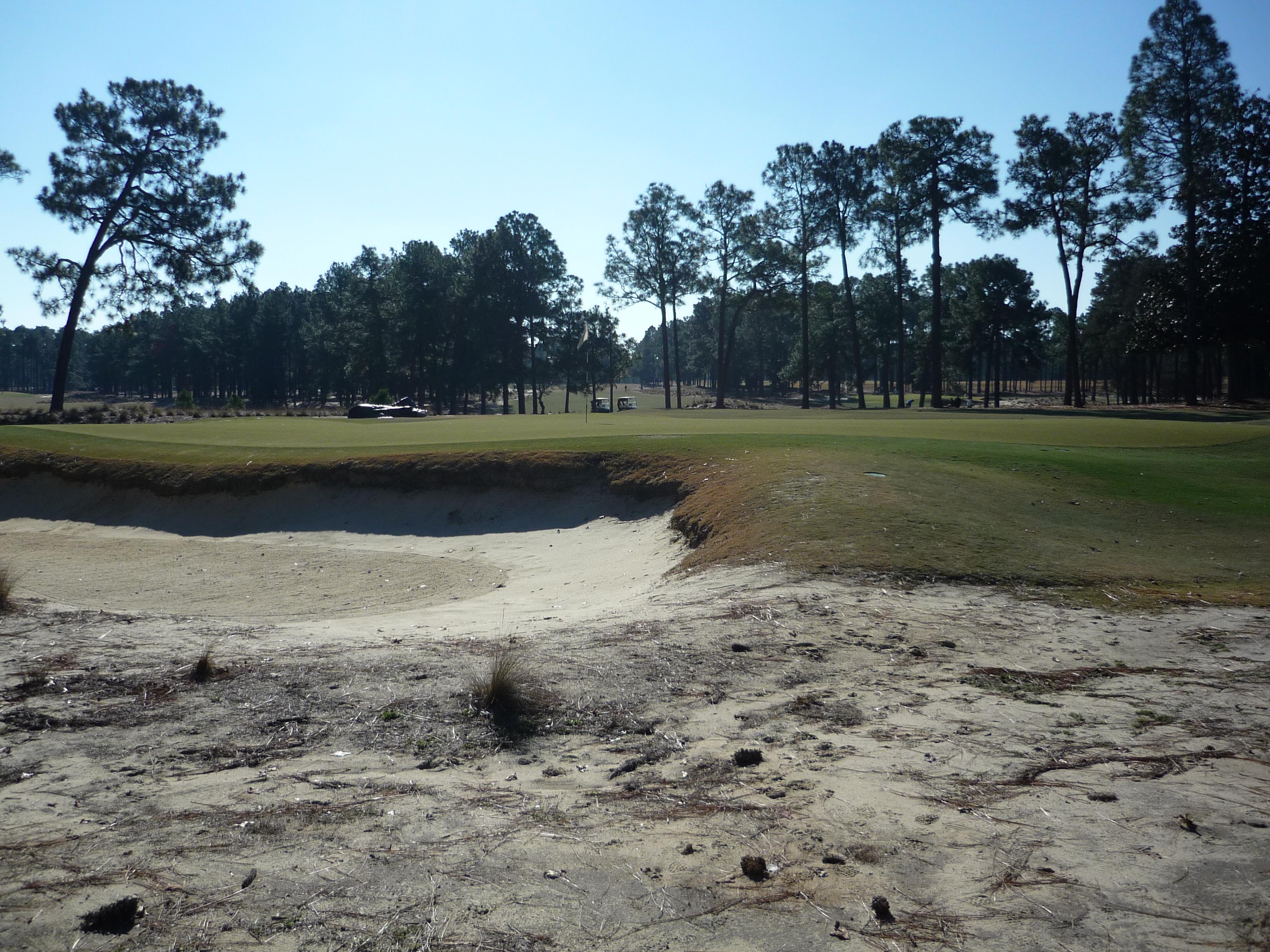
Here is another shot from behind the green. You can note all the runoffs.
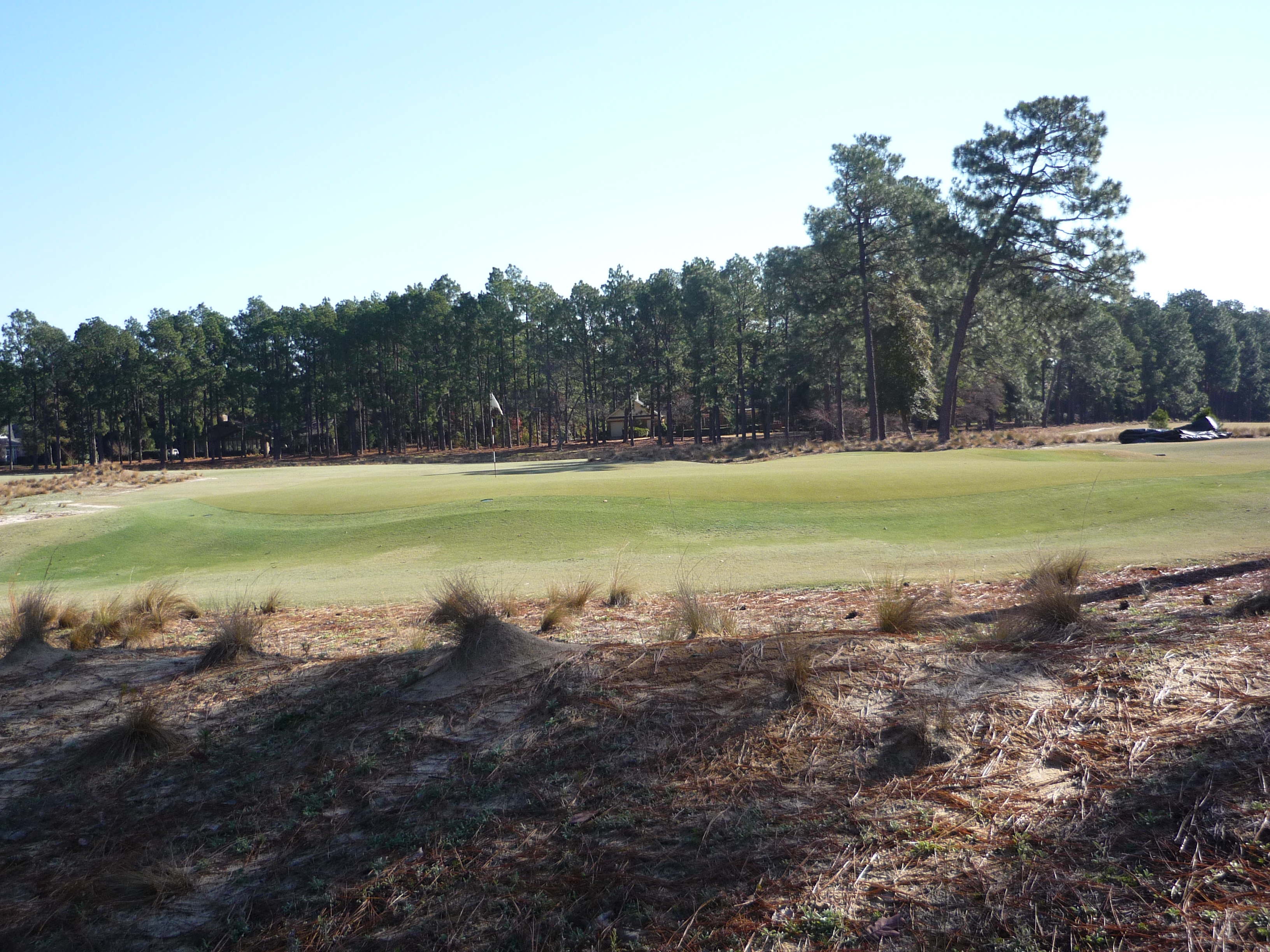
Hole 8 – 440 yards – Par 5
This is a very reachable hole in two, especially with the firm fairways. The fairway slopes to the left so be aware of that when picking your line.
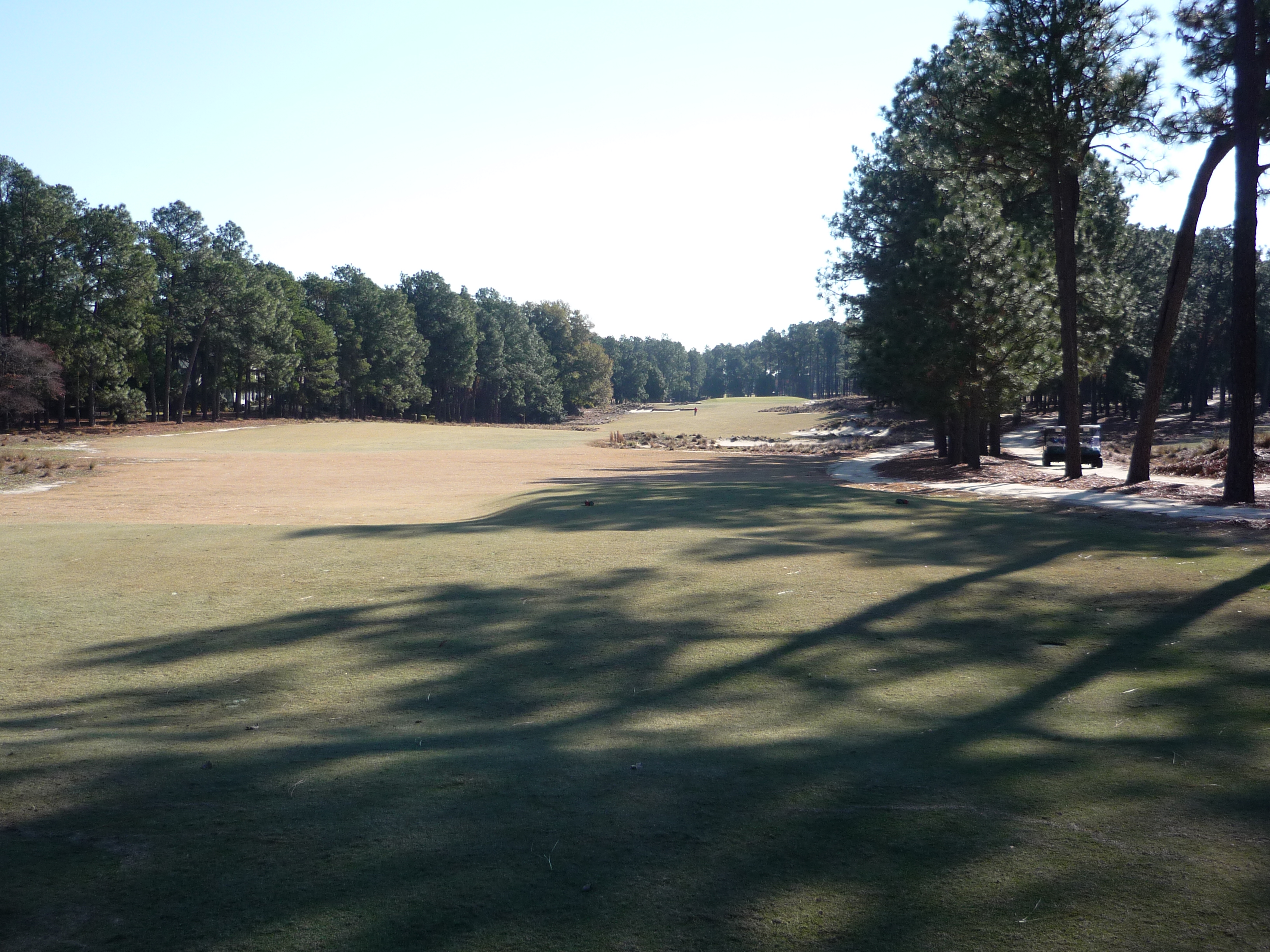
You can see from my second shot that it is reachable. I had a mid-iron in from here to the uphill green. You do not want to miss long.
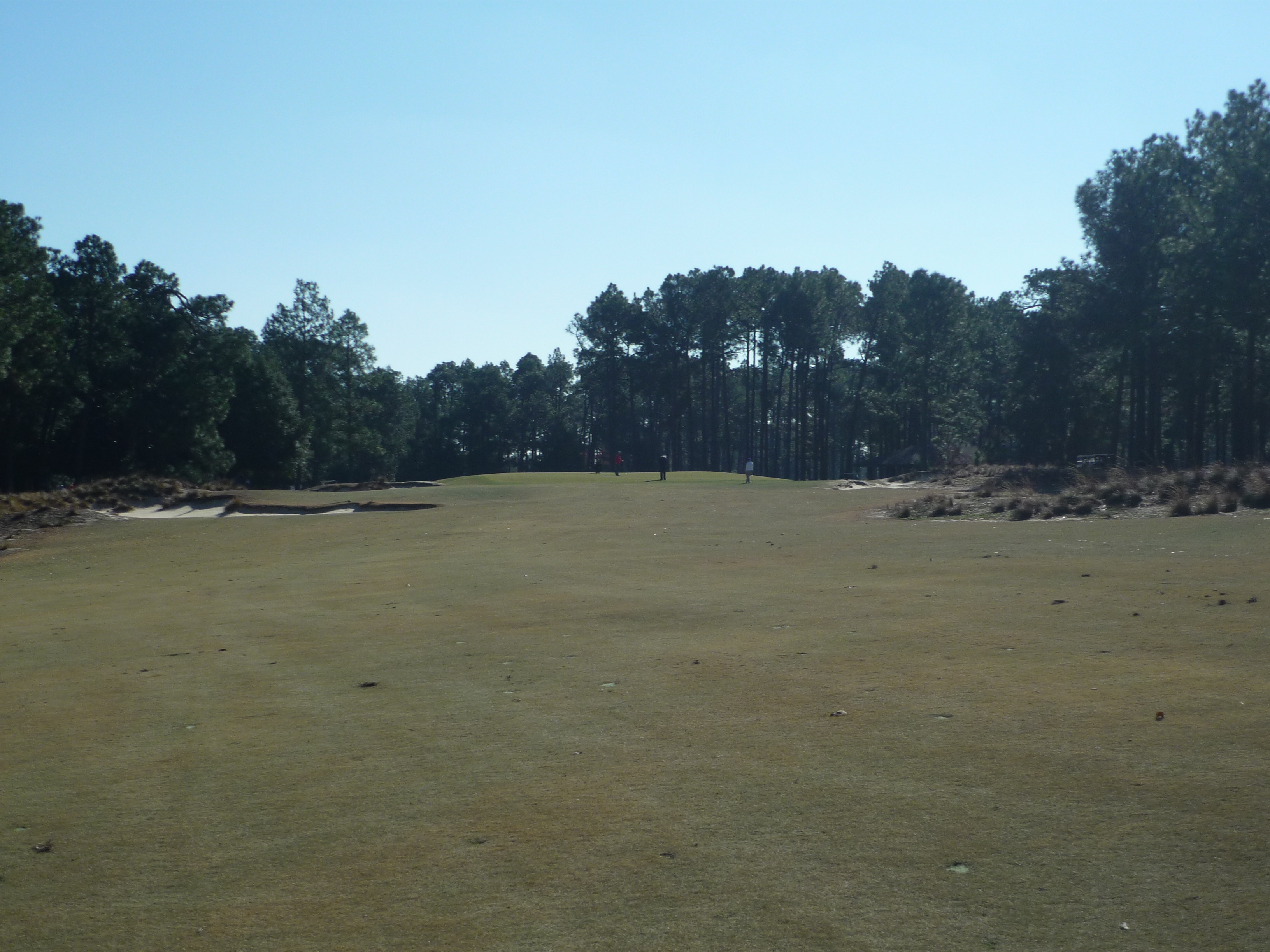
This is the putting surface from the right side. The slopes run away from the green all around.
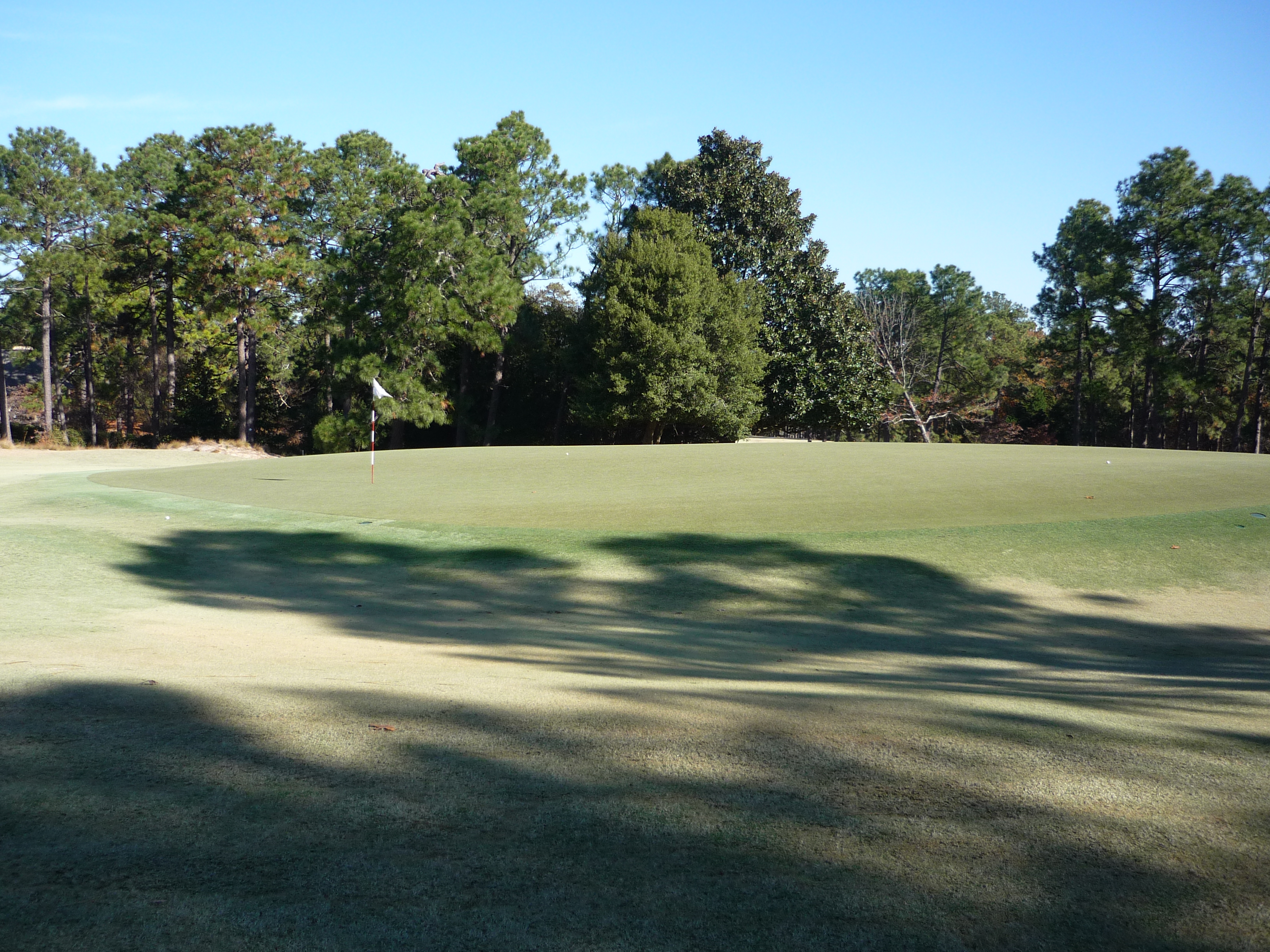
Hole 9 – 148 yards – Par 3
This is my favorite short hole on the course. There is plenty of defense with the bunkers and a large drop off behind the green. There are tiers to the green making shot direction critical.
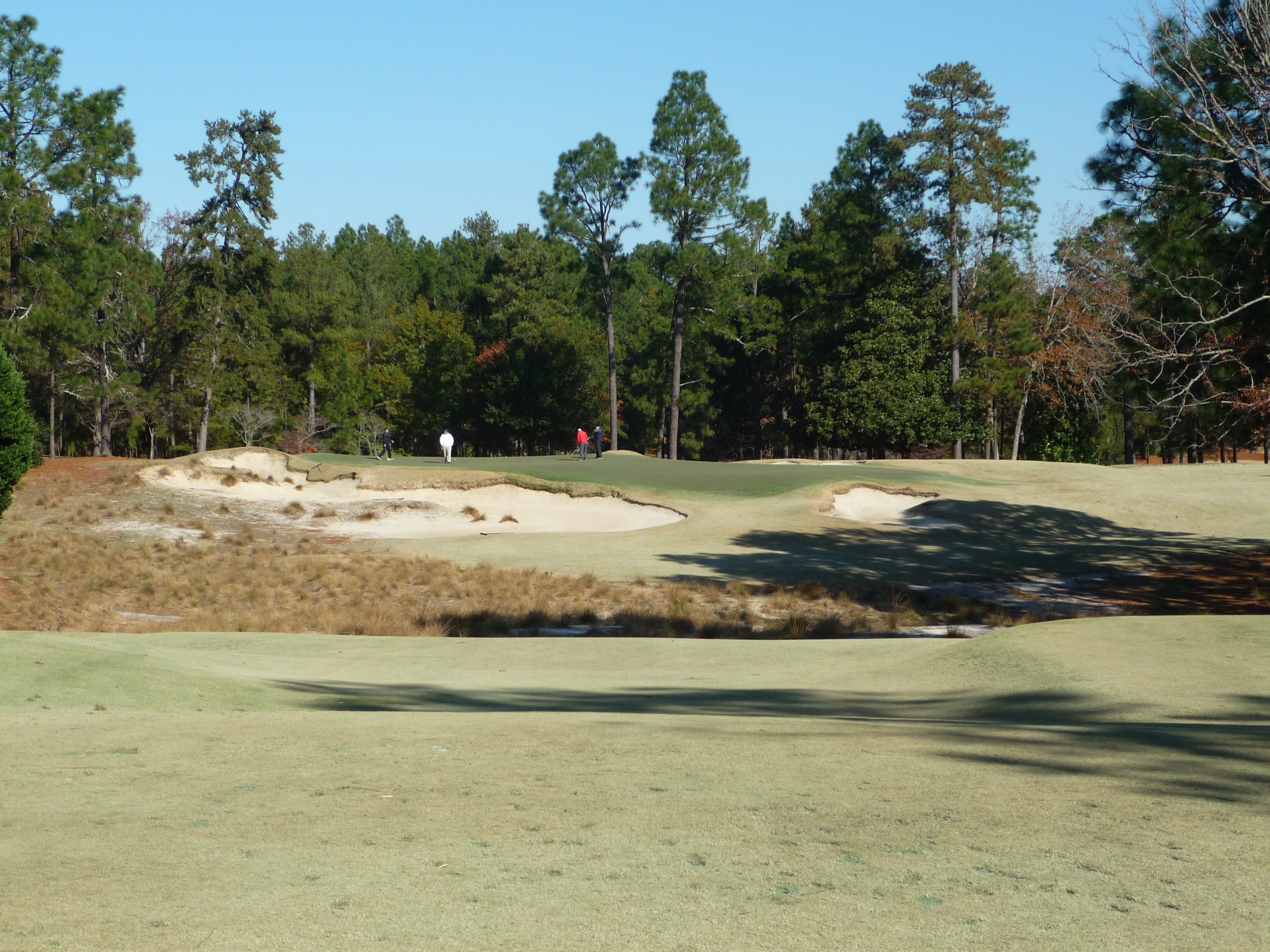
You can see the tier in the middle of the green. Putts across the green will have to be spot on with speed to make for an easy two-putt.
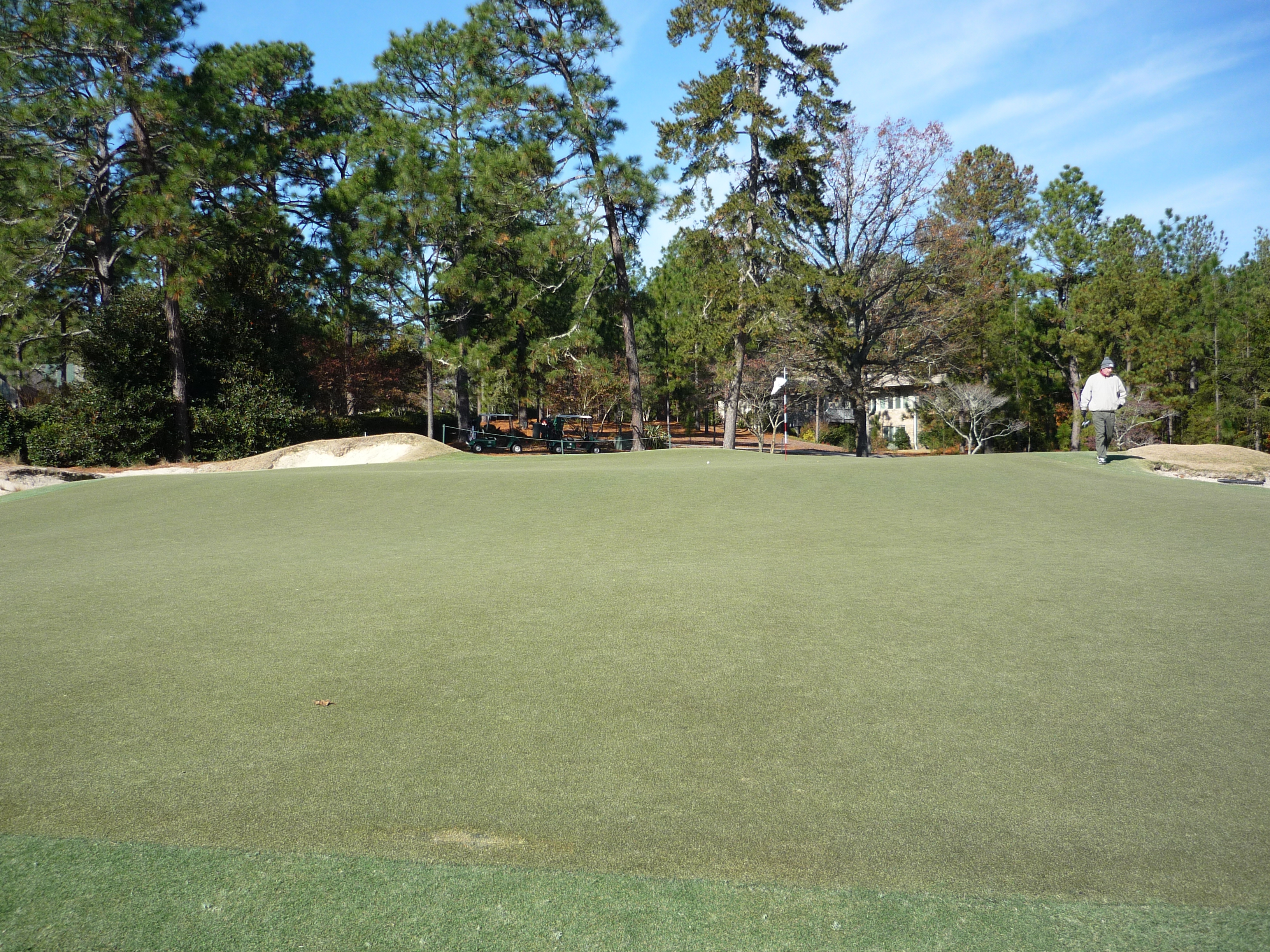
Hole 10 – 455 yards – Par 5
This hole plays much longer from the US Open tees, but for us is a short par five. No need for more thinking than a straight drive in the fairway.
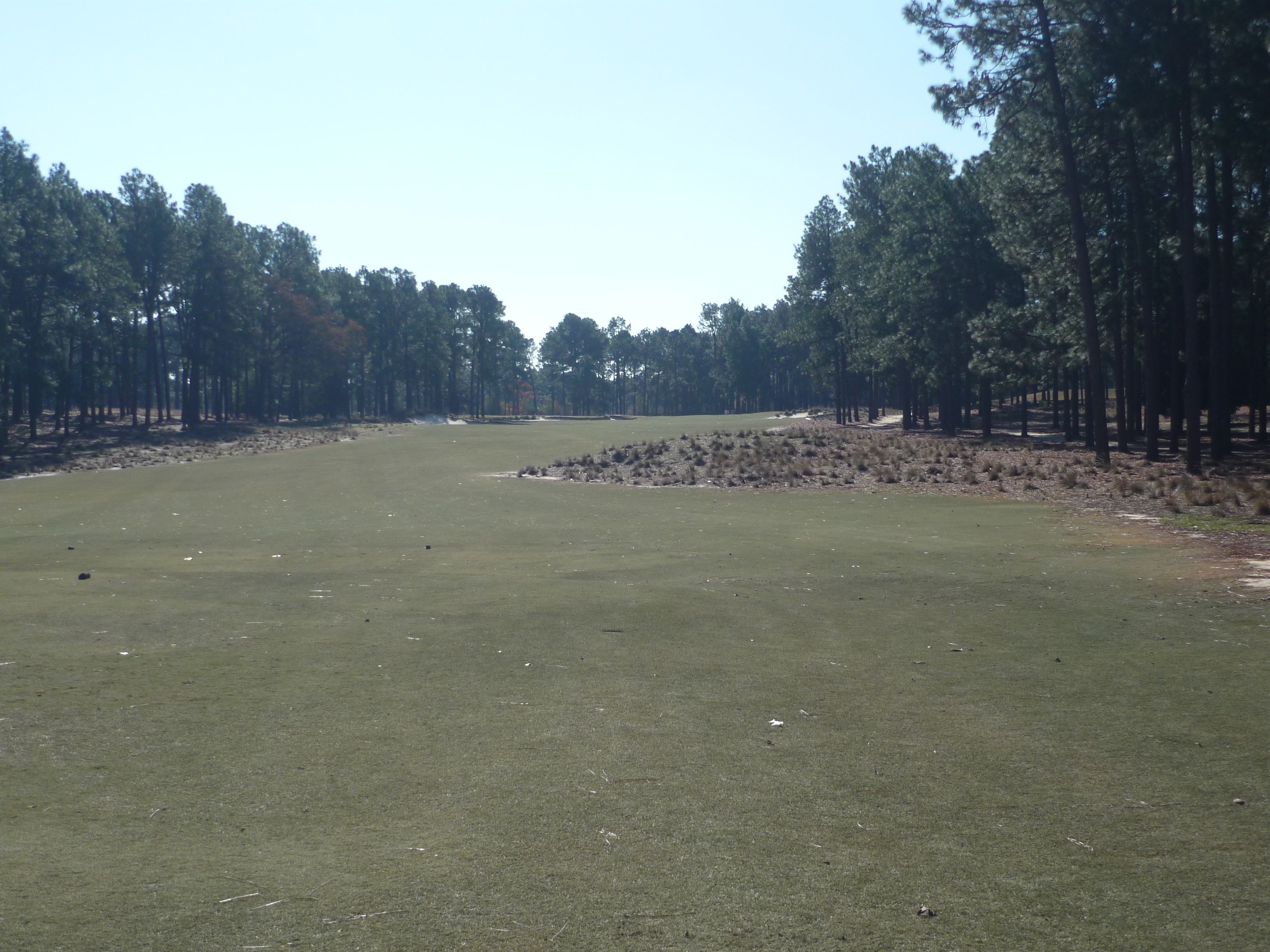
Here is a view of the second shot.
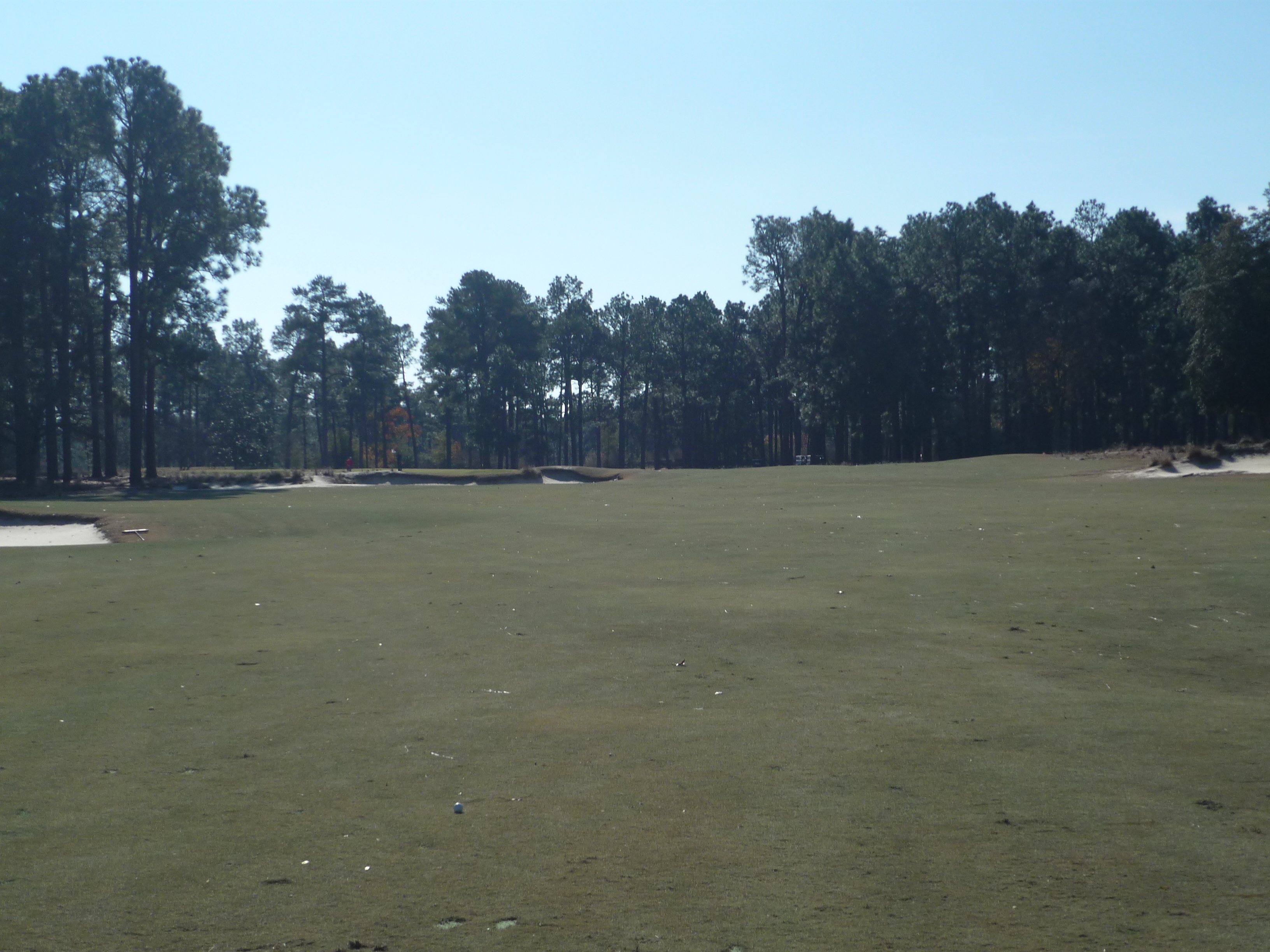
If you decide to layup the green is open and inviting for a wedge.
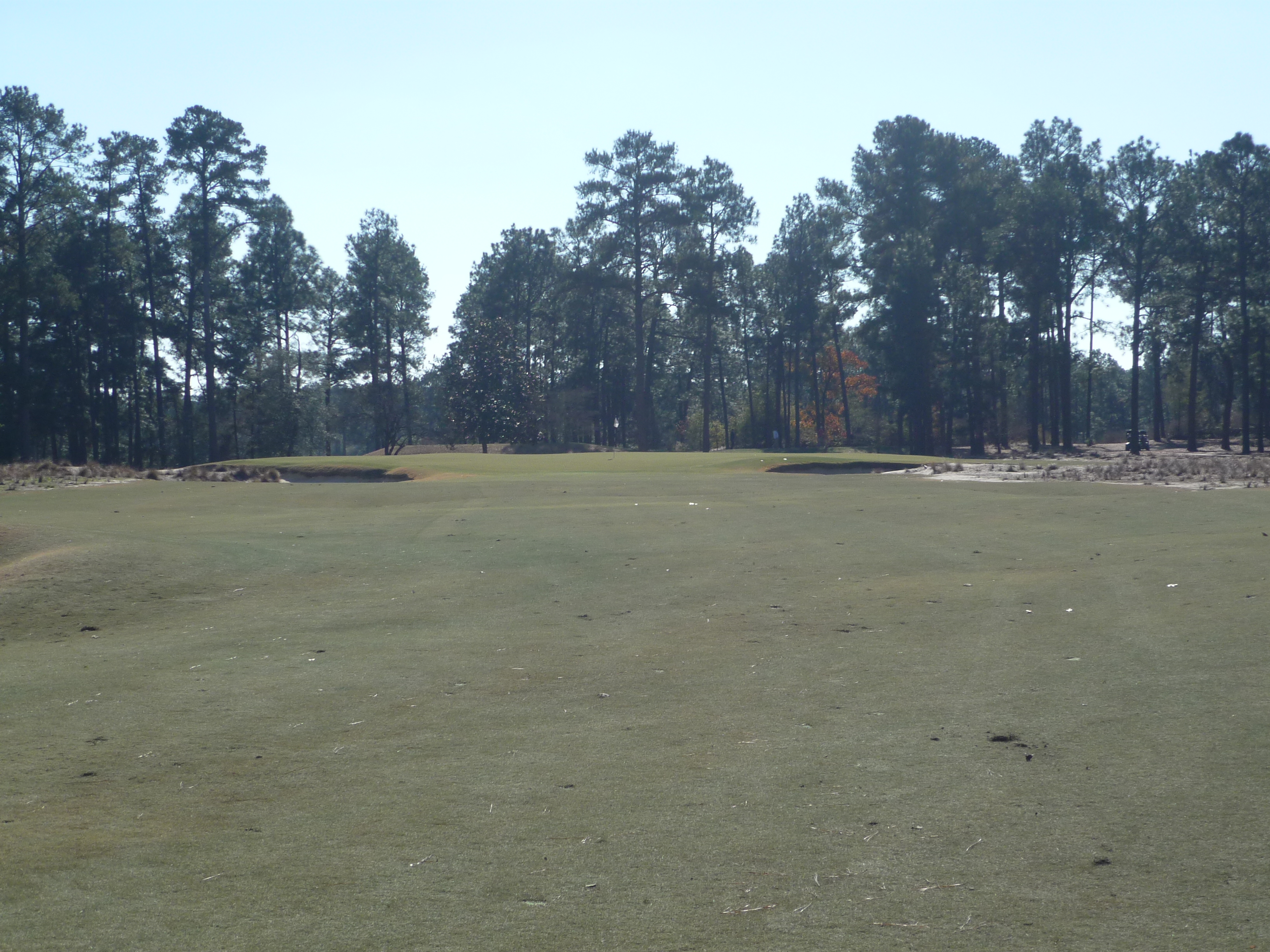
And a closer view of the putting surface.
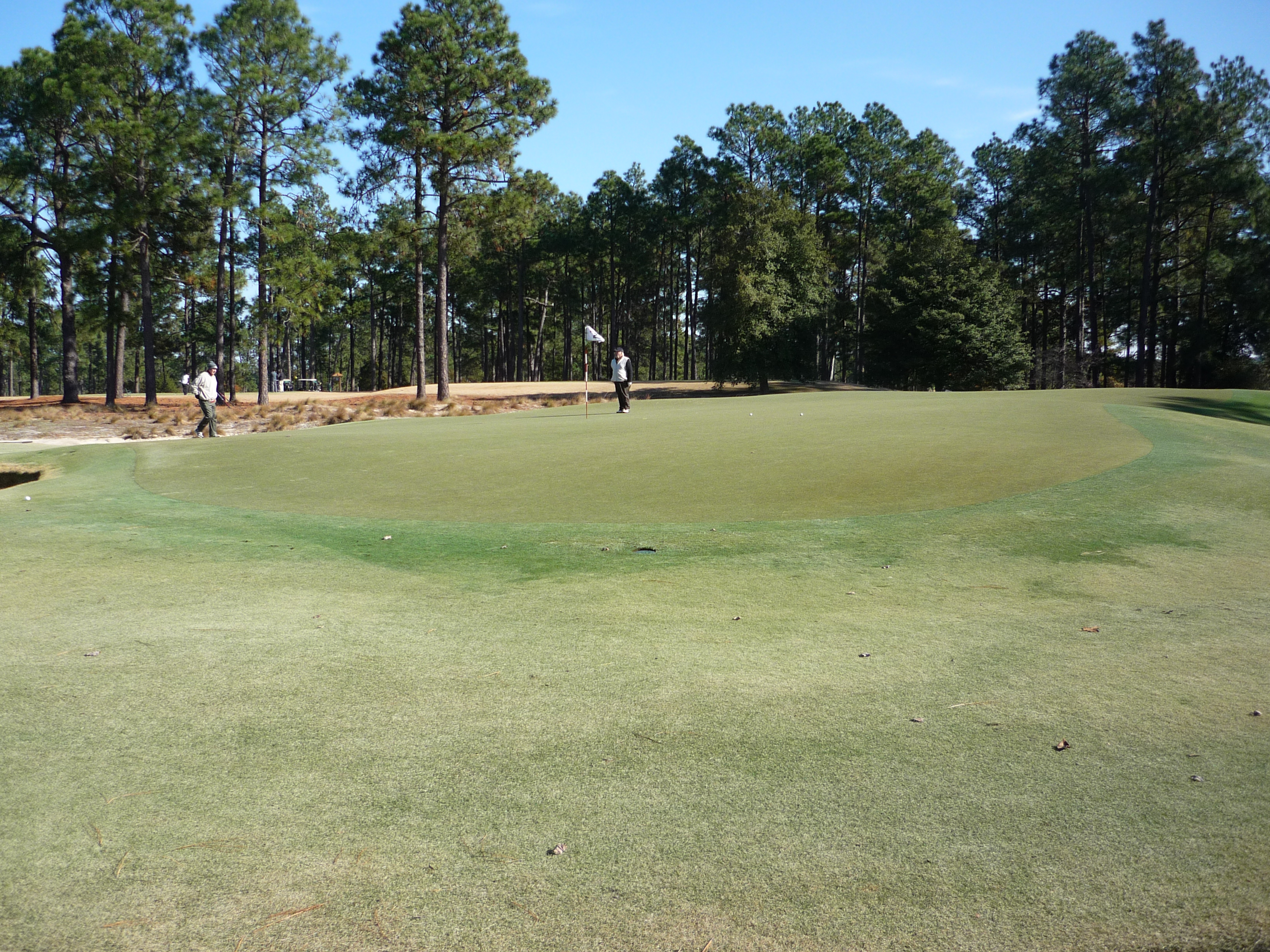
Hole 11 – 375 yards – Par 4
This hole visually favors a fade off the tee. I can attest that a draw can be played. You can get away with not hitting driver here due to the hard fairways.
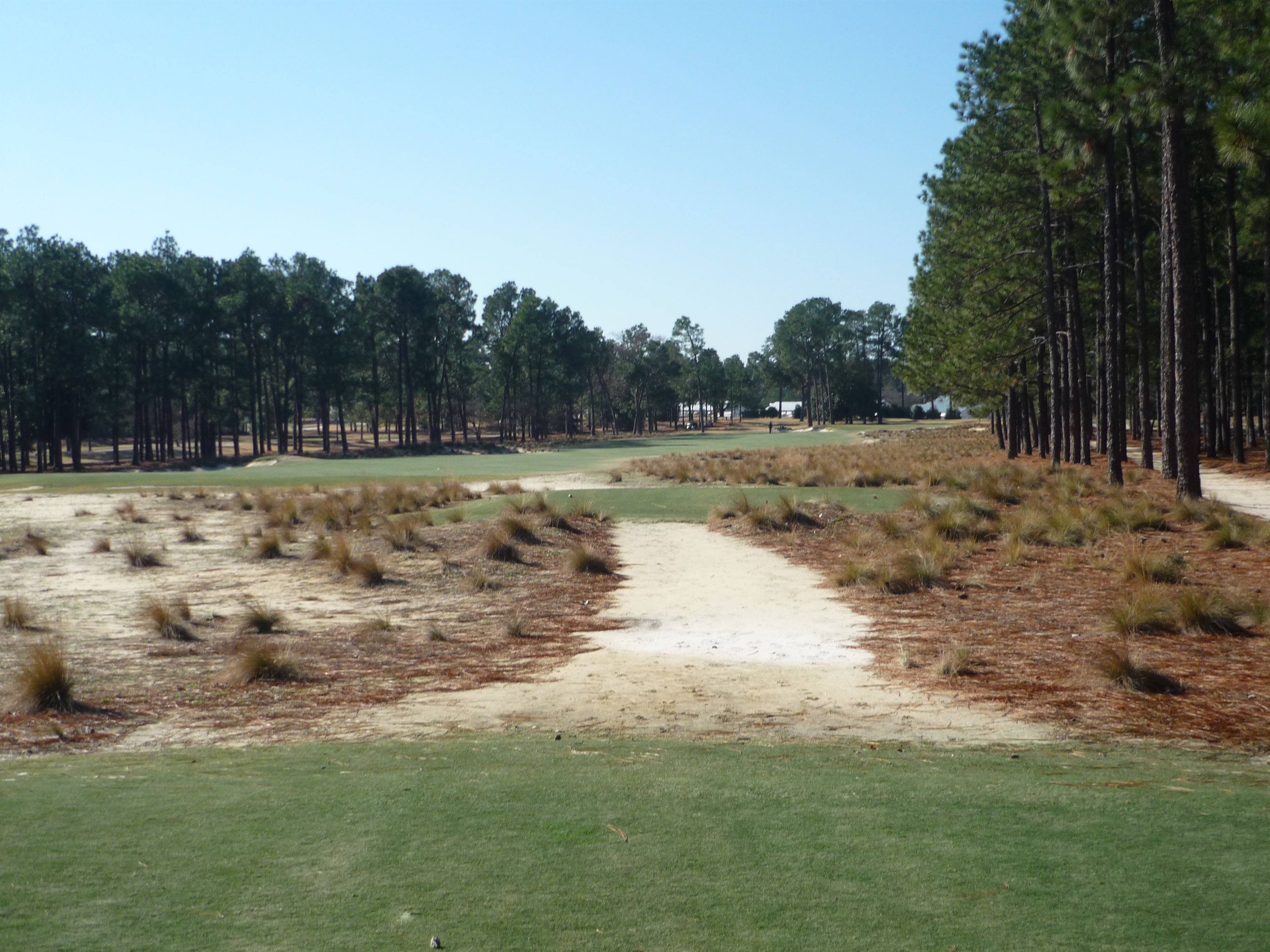
The approach is one of the more benign on the course. A shot to the middle of the green is the best strategy.
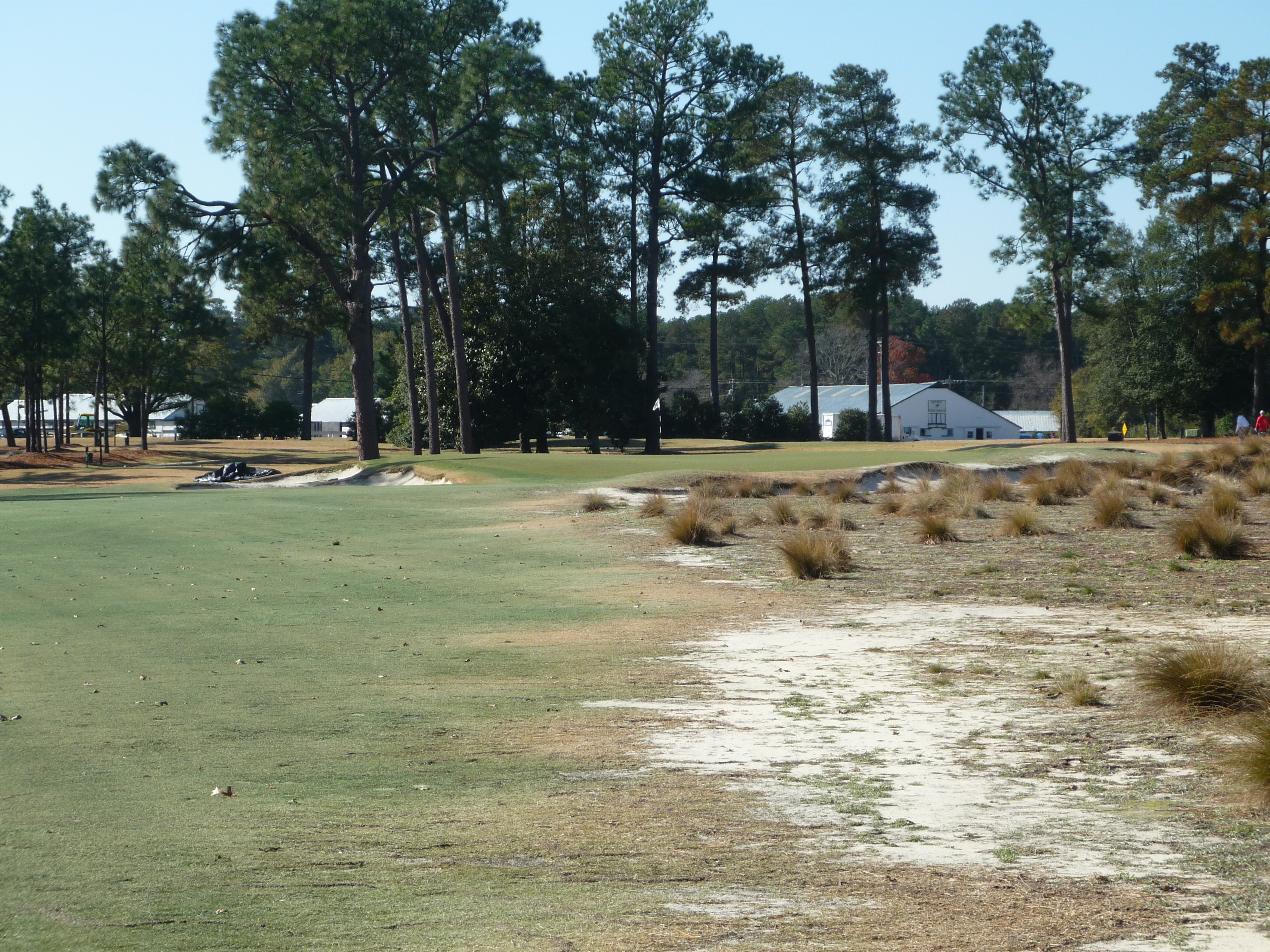
The photo below shows a massive greenside bunker and the green complex.
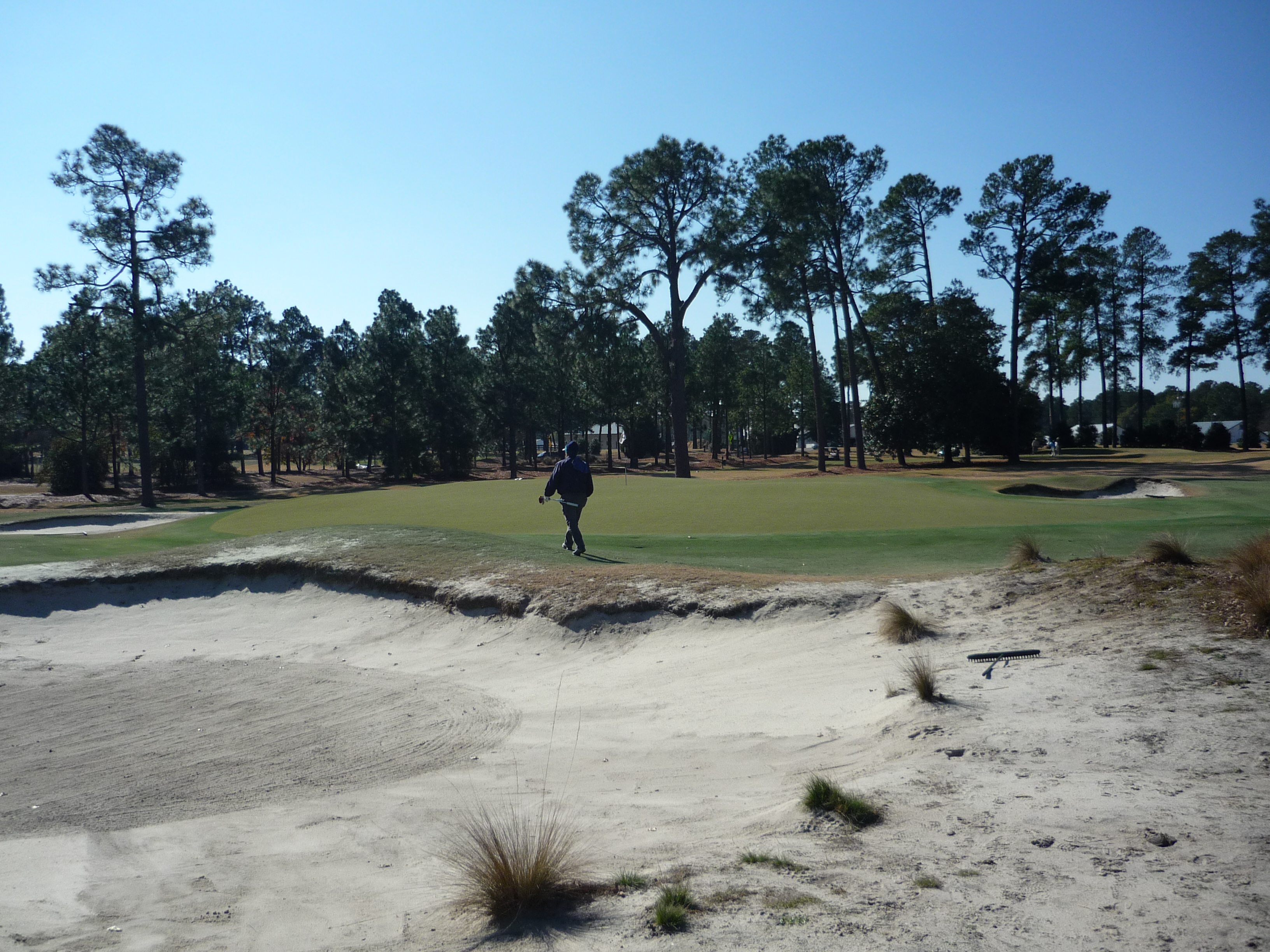
Hole 12 – 360 yards – Par 4
This tee shot is straightaway. Just pound one out there as far as you can.
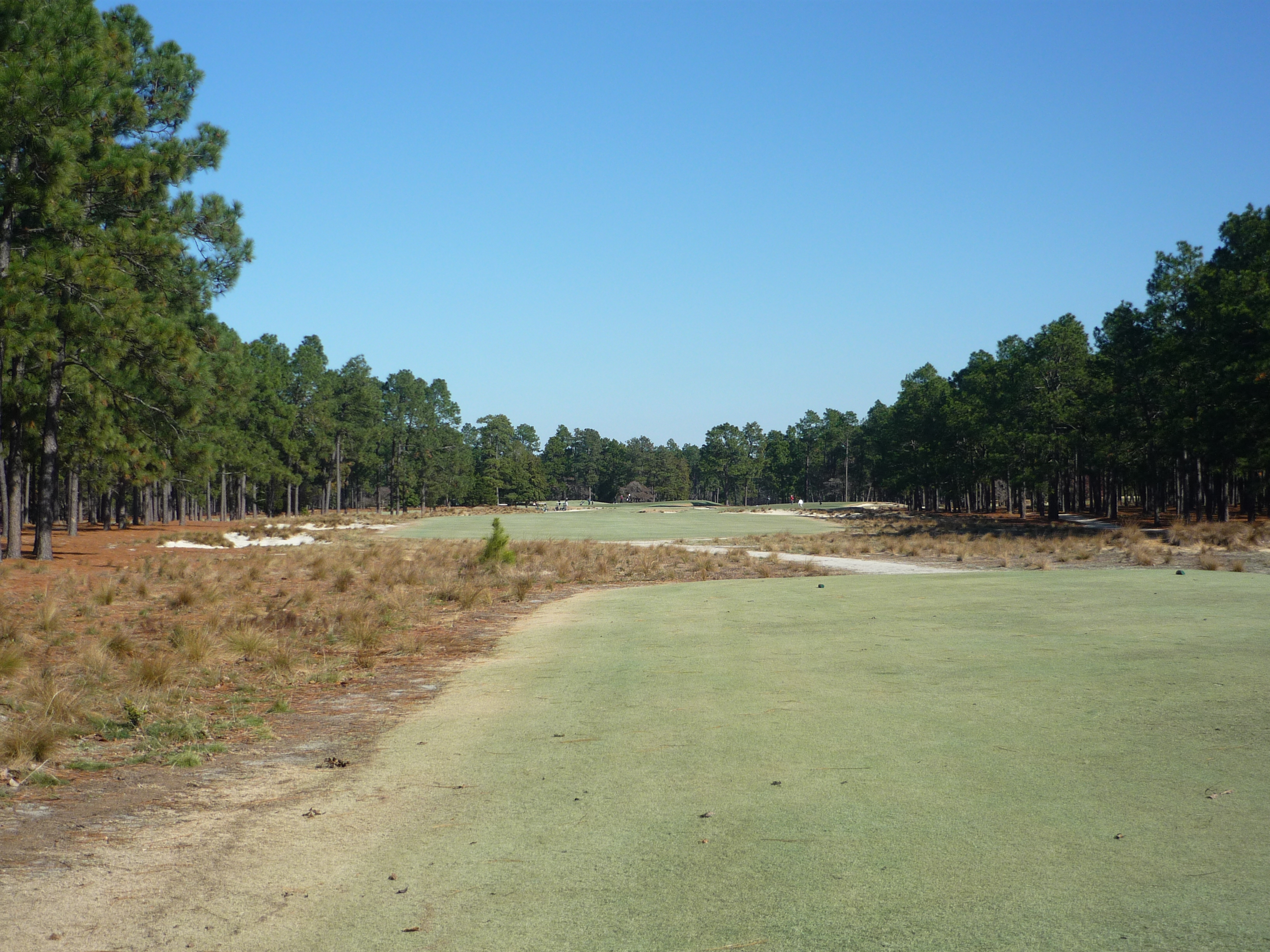
The approach will take a little more precision. Anything short or left will be repelled by the contours. Your ball needs to be played the correct direction and distance.
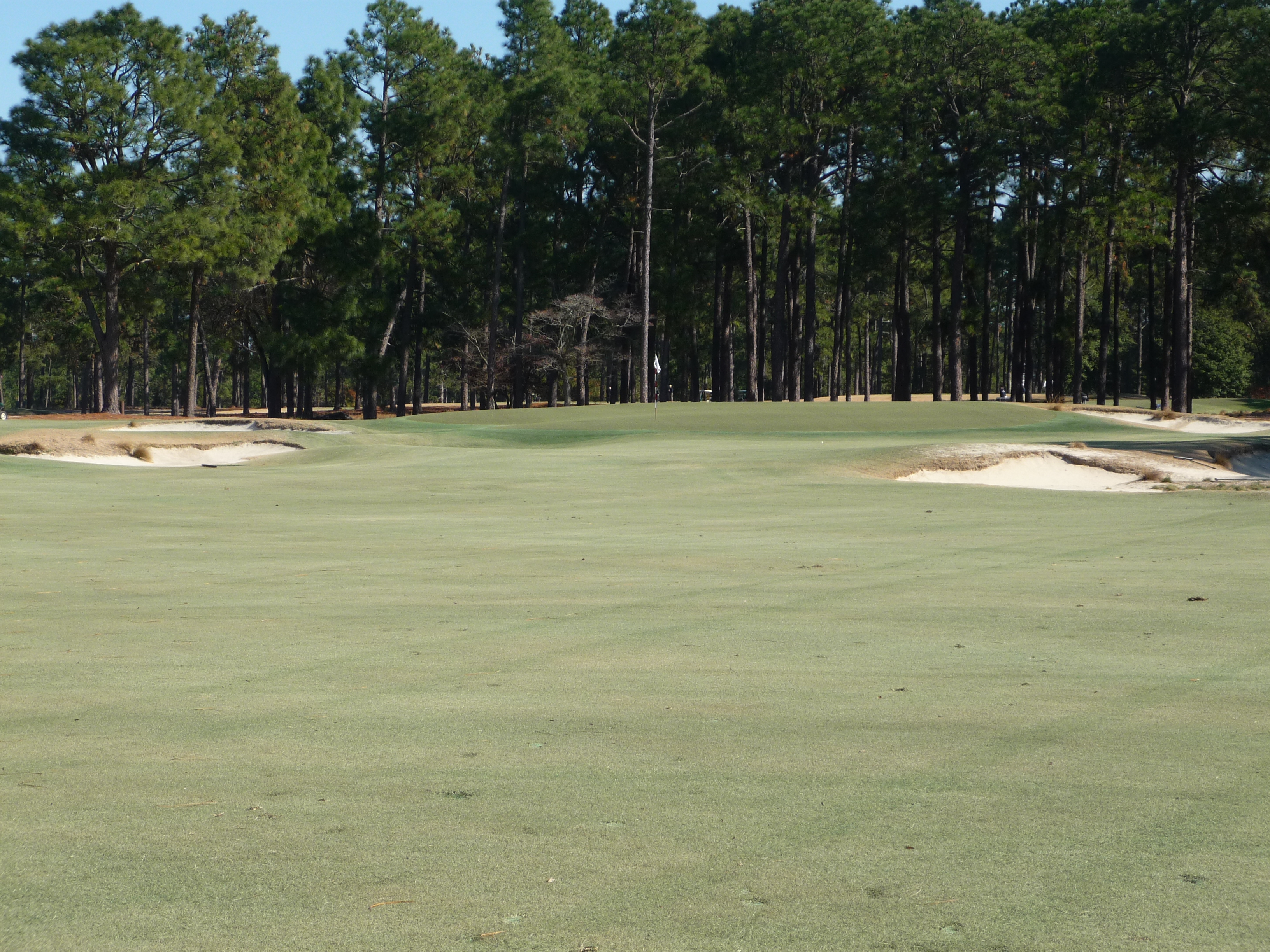
It may not be as visible in the photo below, but there is plenty of slope around this green.
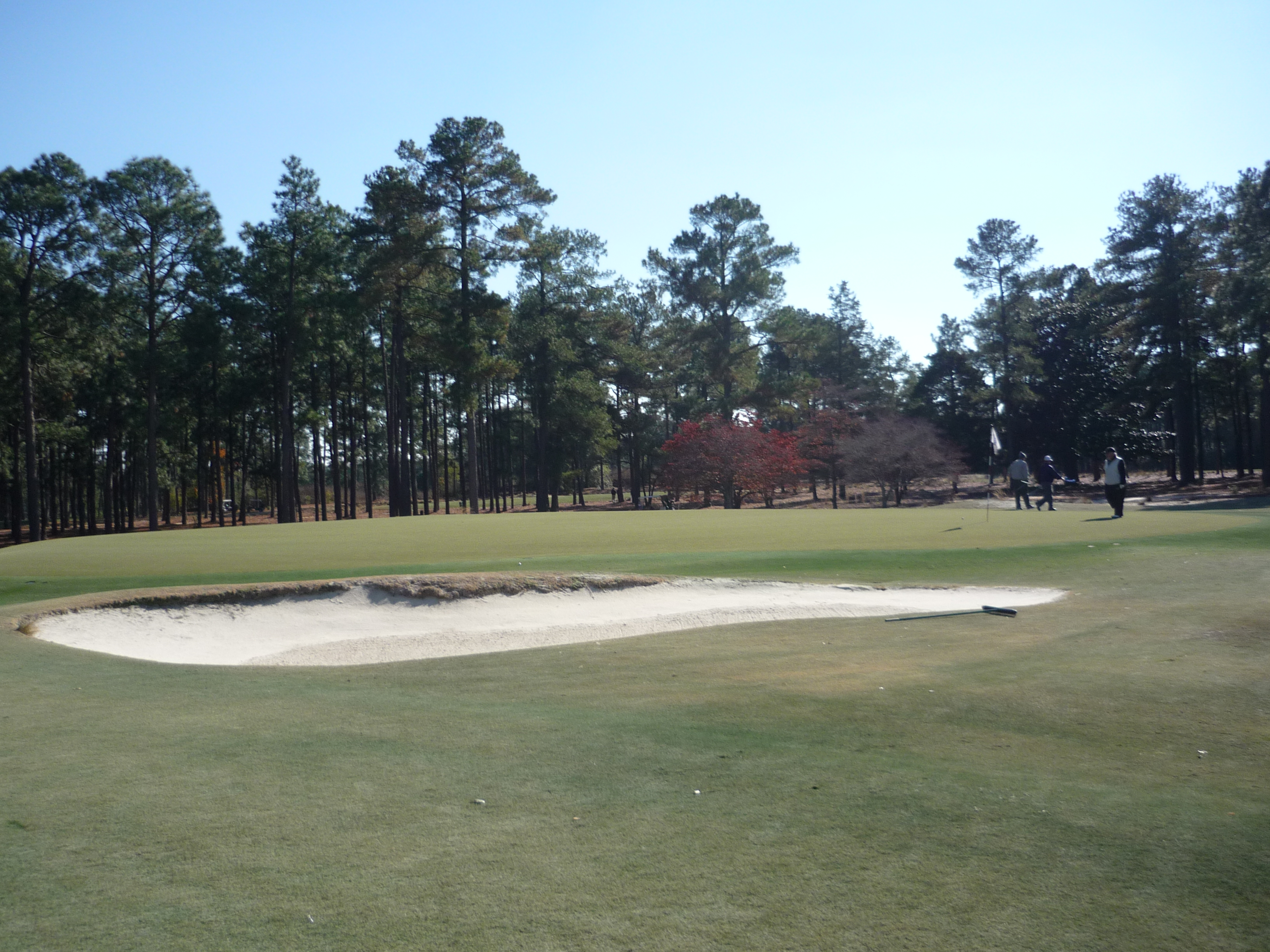
Here is a close up from the front of the green. There was a lot of slope around this pin placement.
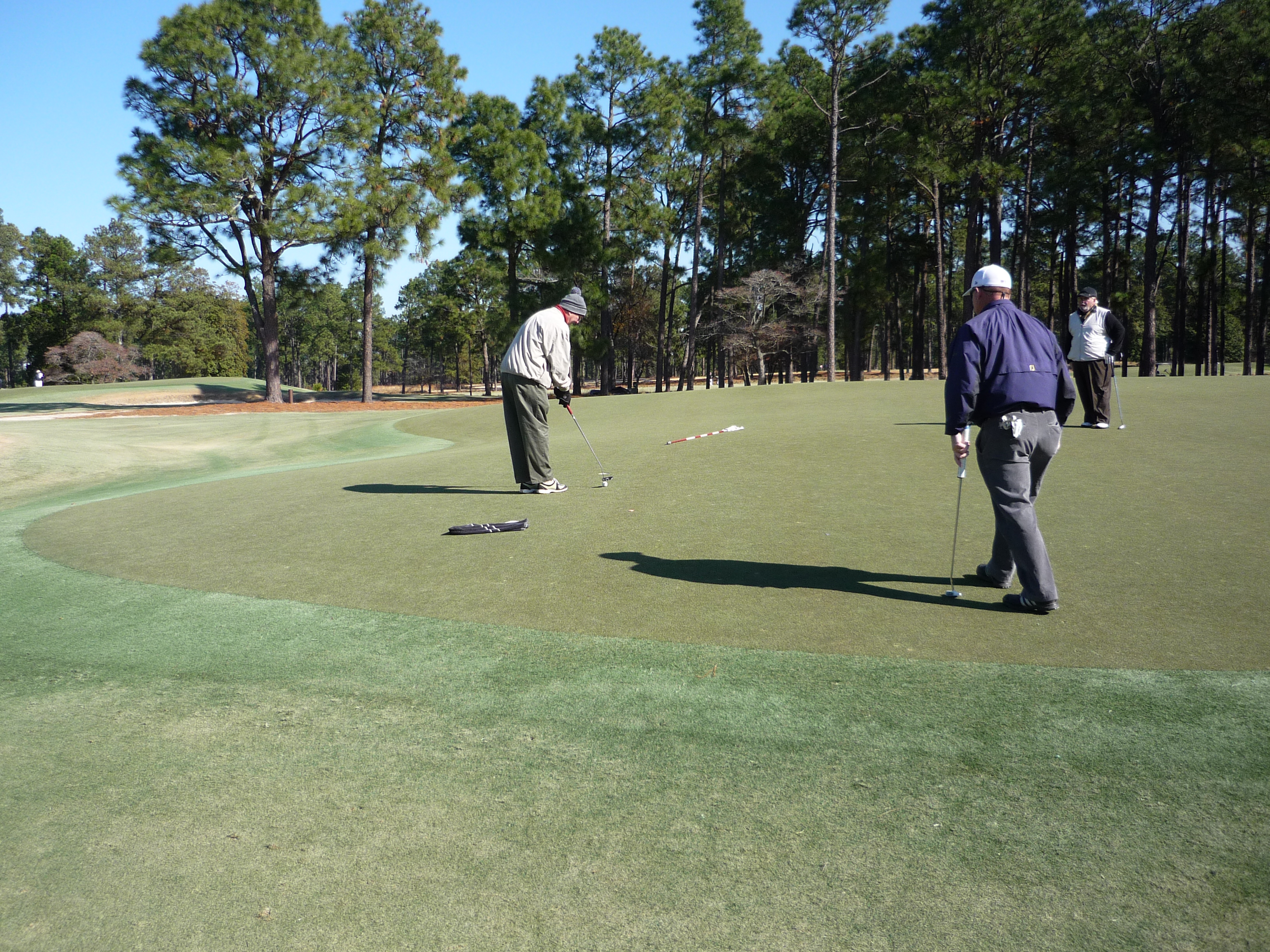
Hole 13 – 358 yards – Par 4
This tee ball must negotiate some trouble up the right side. You can definitely hit something about 200-210 yards here and be in great shape.
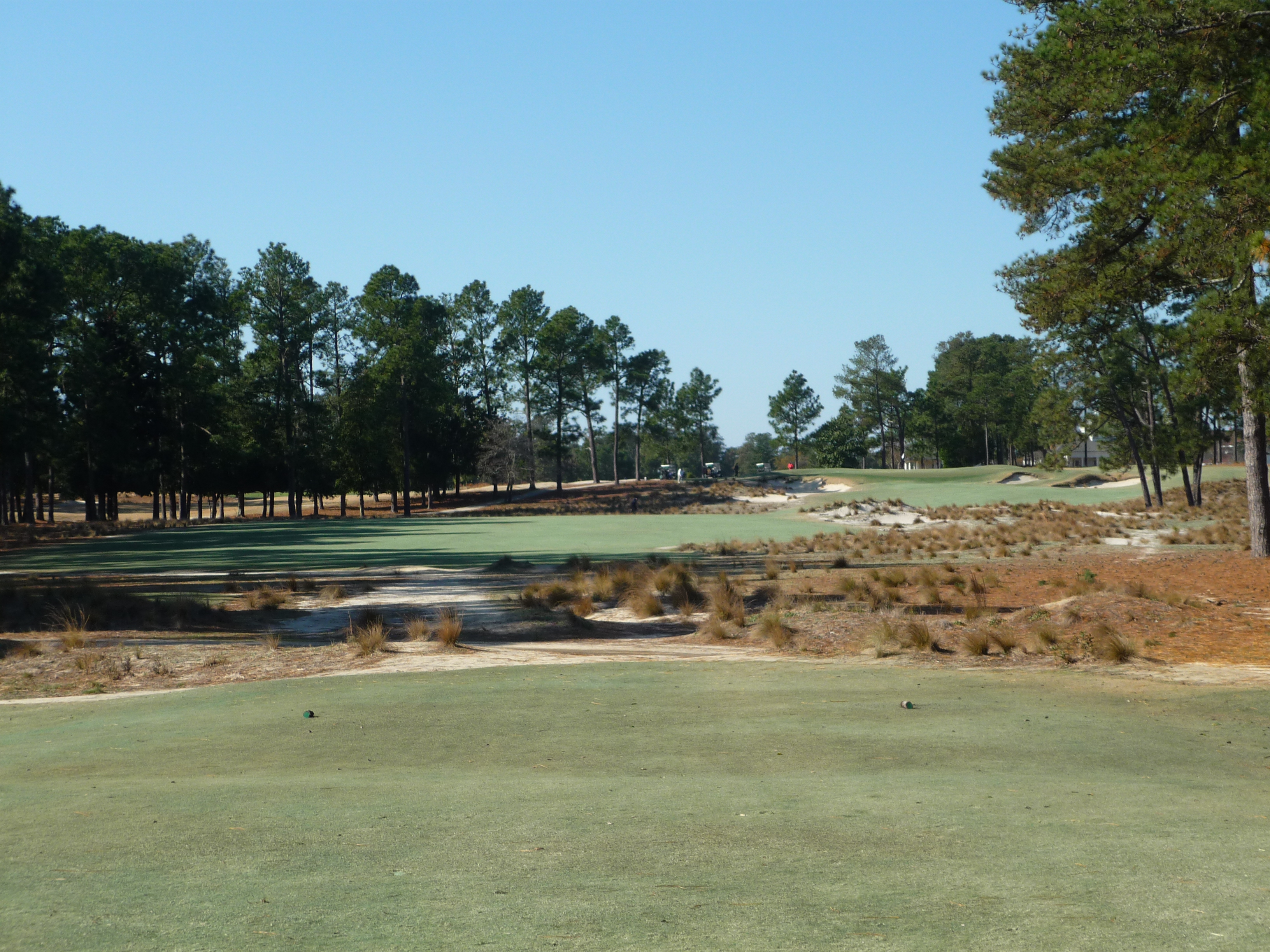
The second shot will play more than the yardage due to the slope. You do not want to be short or you run the risk of a long pitch shot. The bunkers are no picnic either.
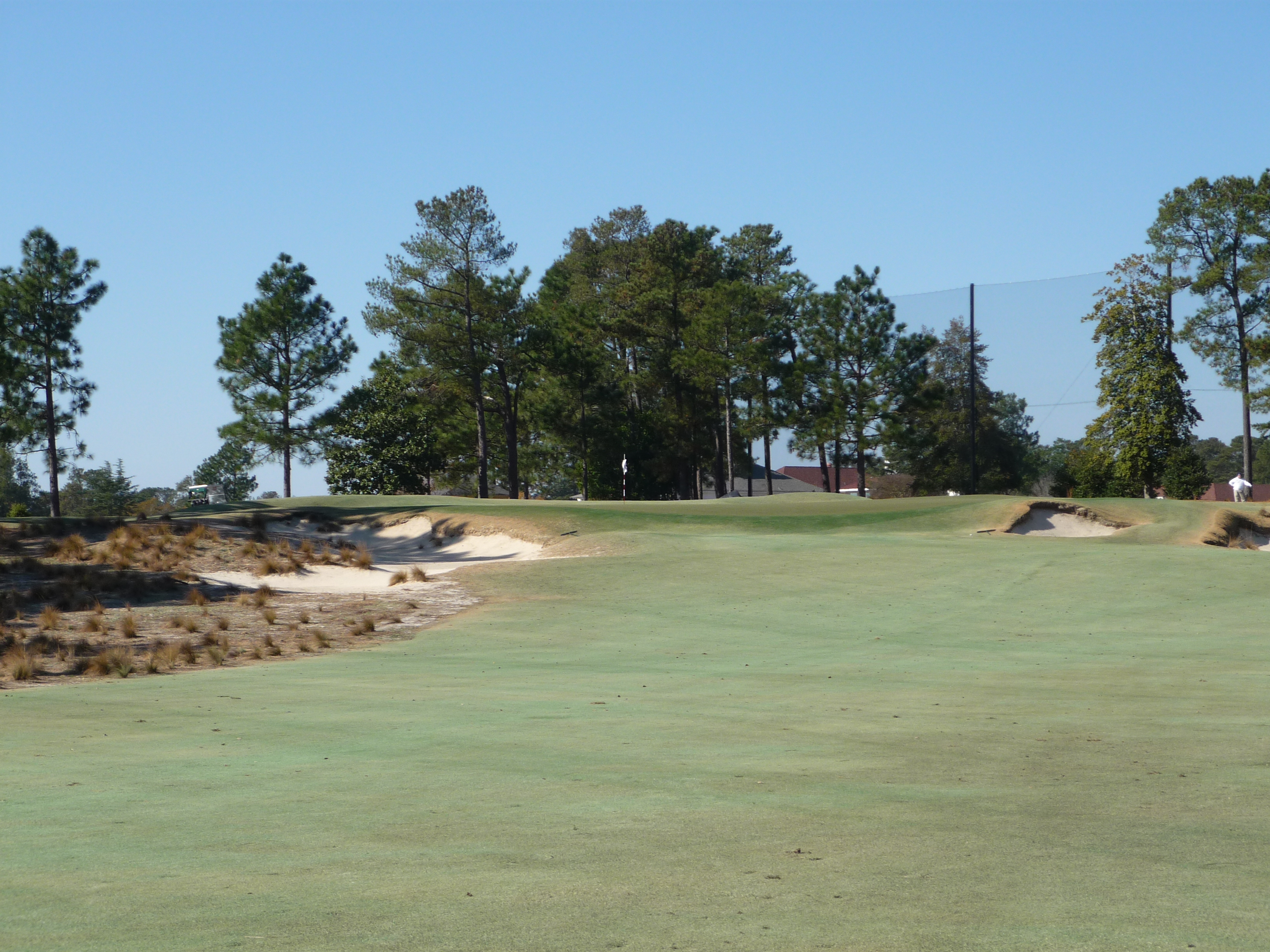
Here is a photo of the green.
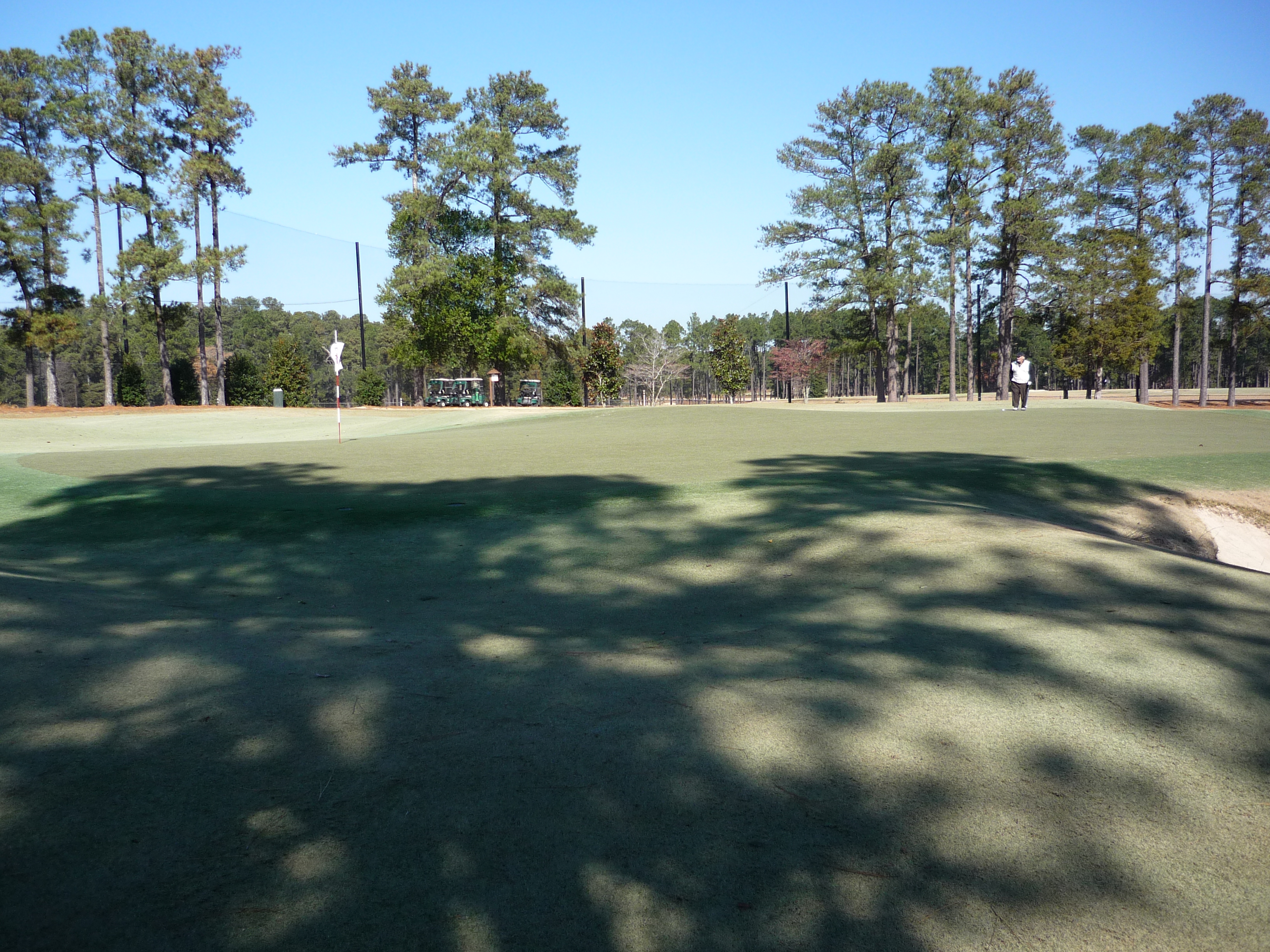
And here is another to show the contouring.
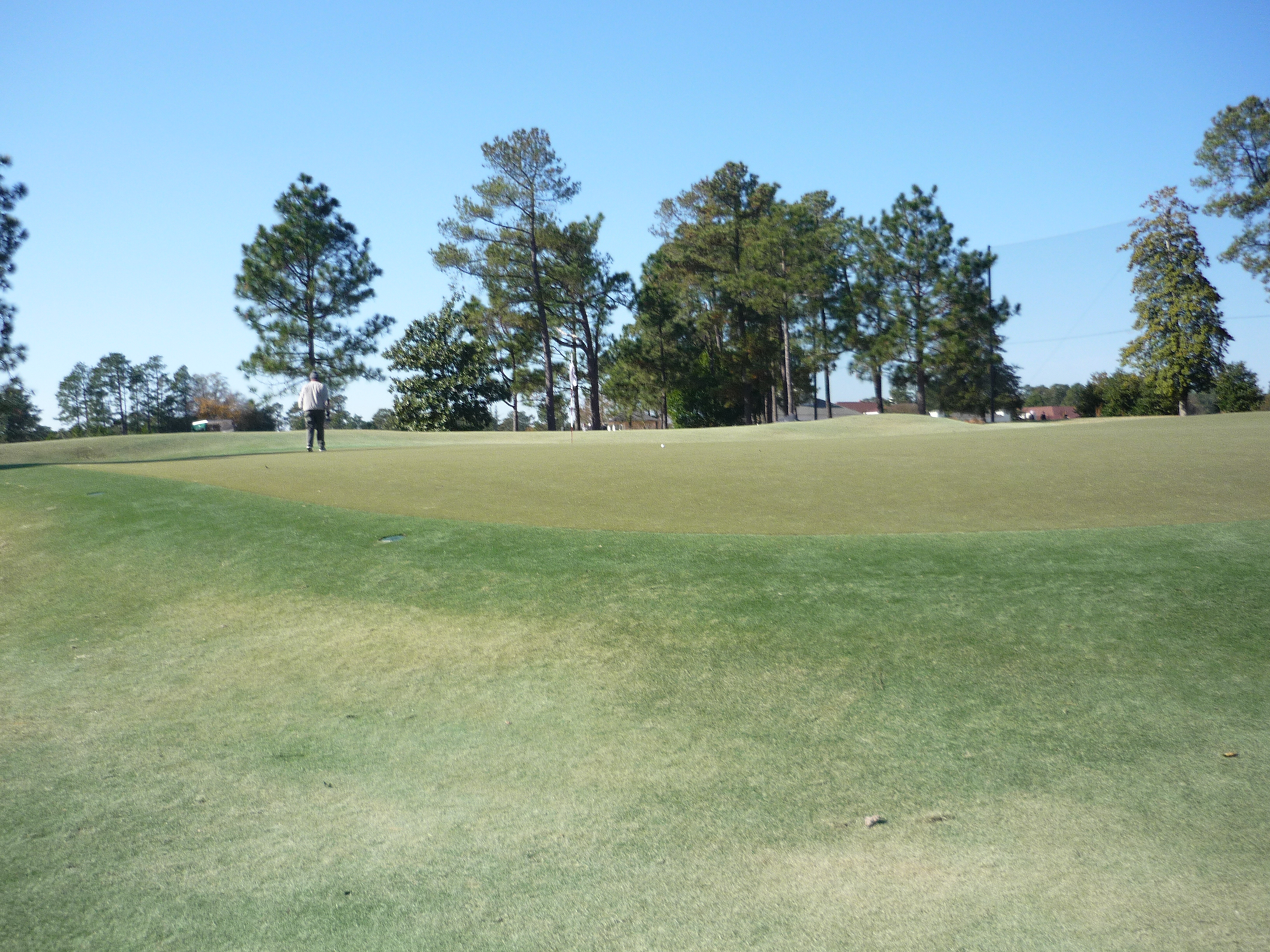
Hole 14 – 419 yards – Par 4
This is one of the longer par fours on the course, but it does play a bit downhill. We were playing into the wind so the hill wasn’t much help. A long, power draw is a good play here.
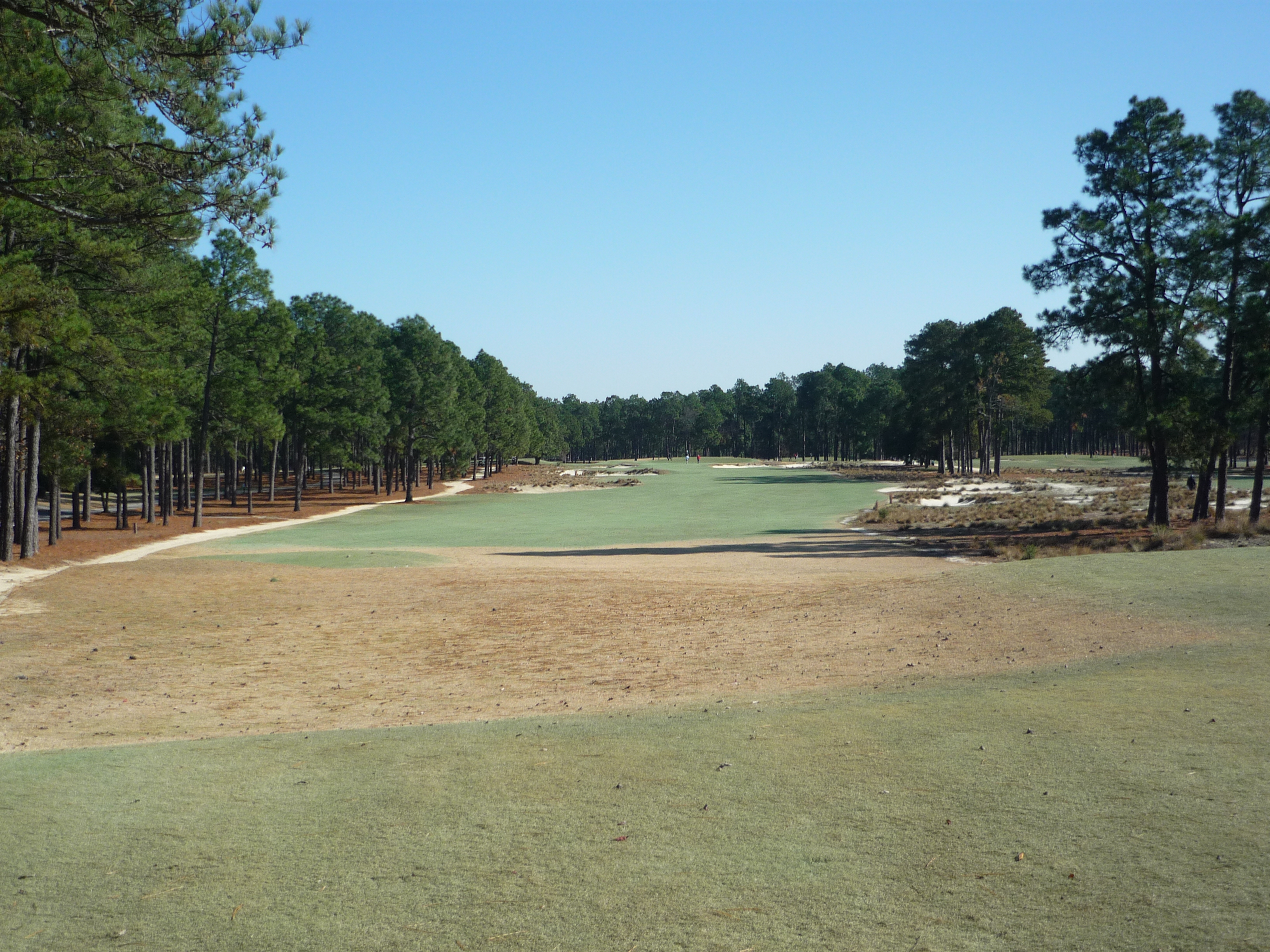
The approach plays up the hill and long. A left miss is no good here.
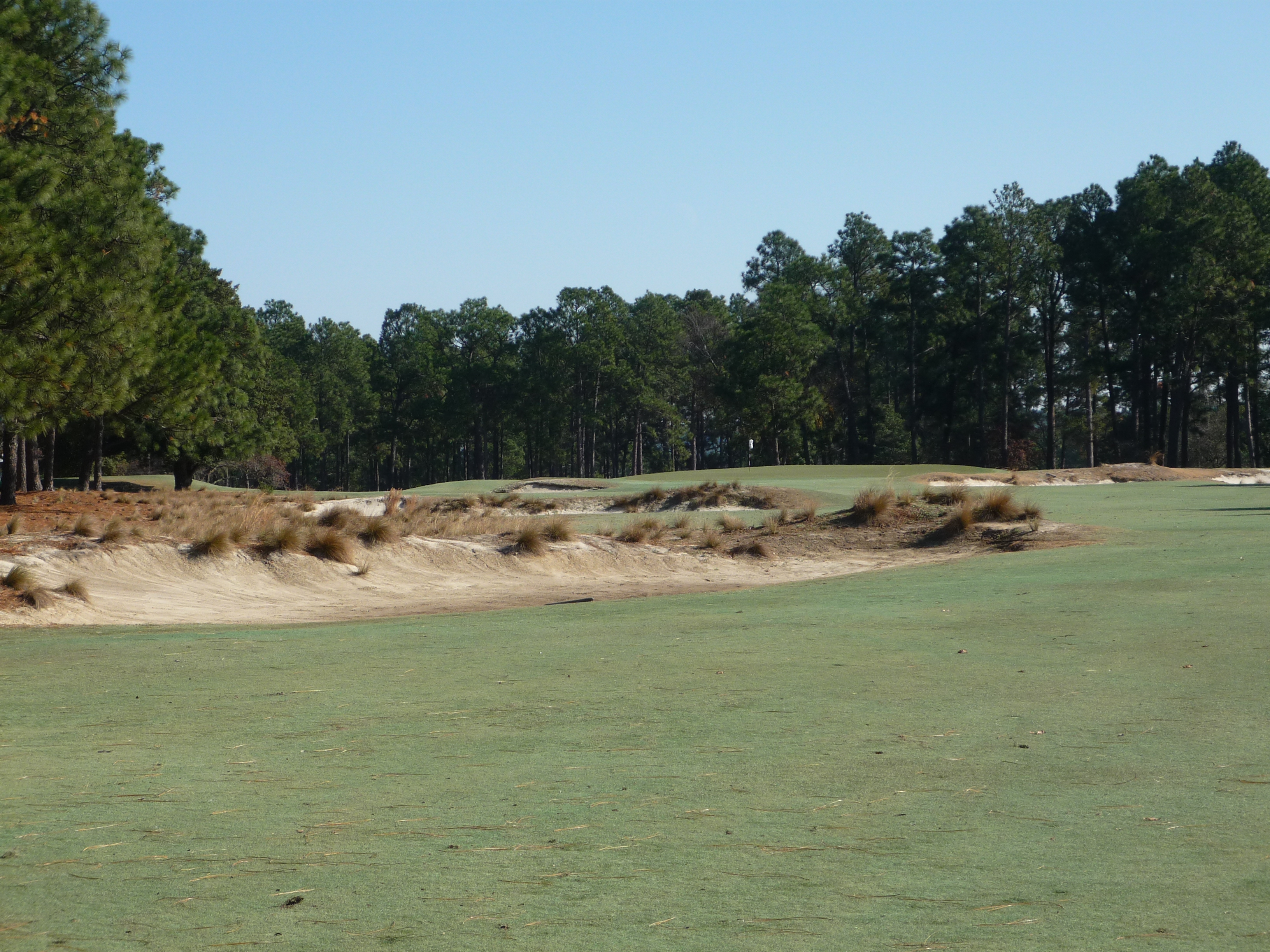
Here is a closer view of the green.

Hole 15 – 170 yards – Par 3
This is probably the most ordinary hole of the eighteen. It is not overly long or short and is guarded by a few bunkers.
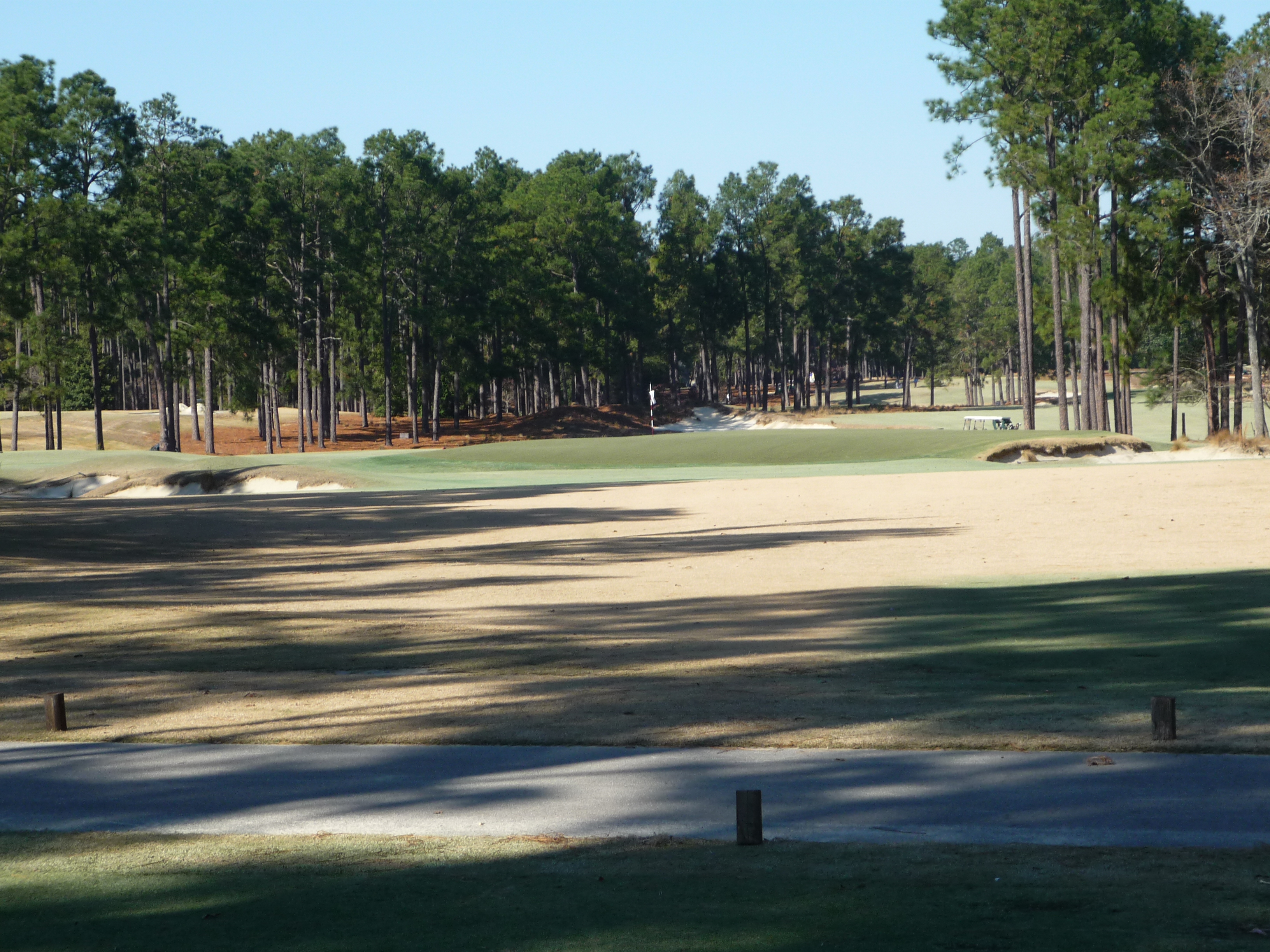
The green is relatively flat for Pinehurst standards.
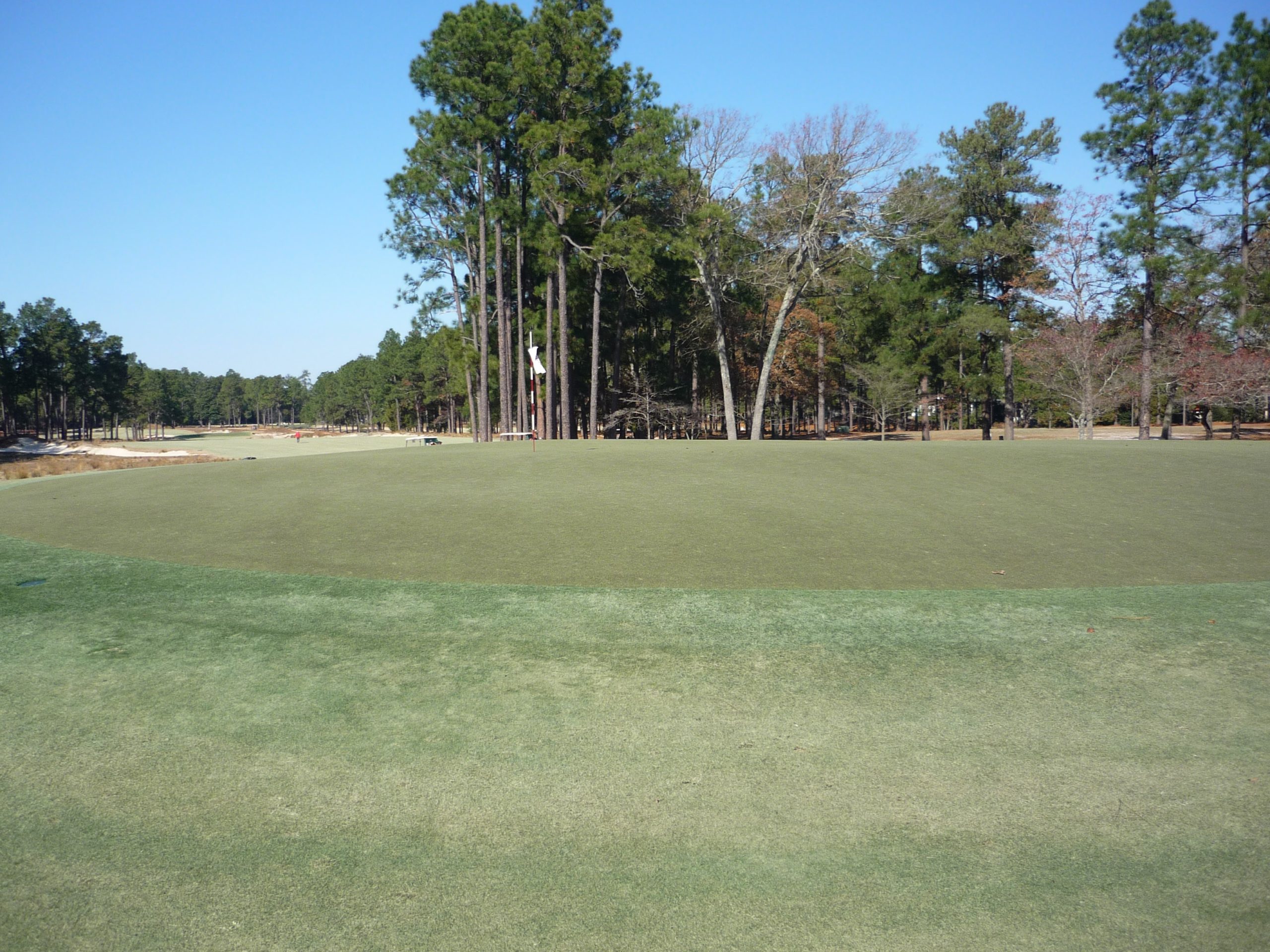
Hole 16 – 478 yards – Par 5
This photo features a view of the only water hazard on the course. Unless a drive is absolutely topped the water is not in play. This fairway favors a slinging draw that will run a long way.
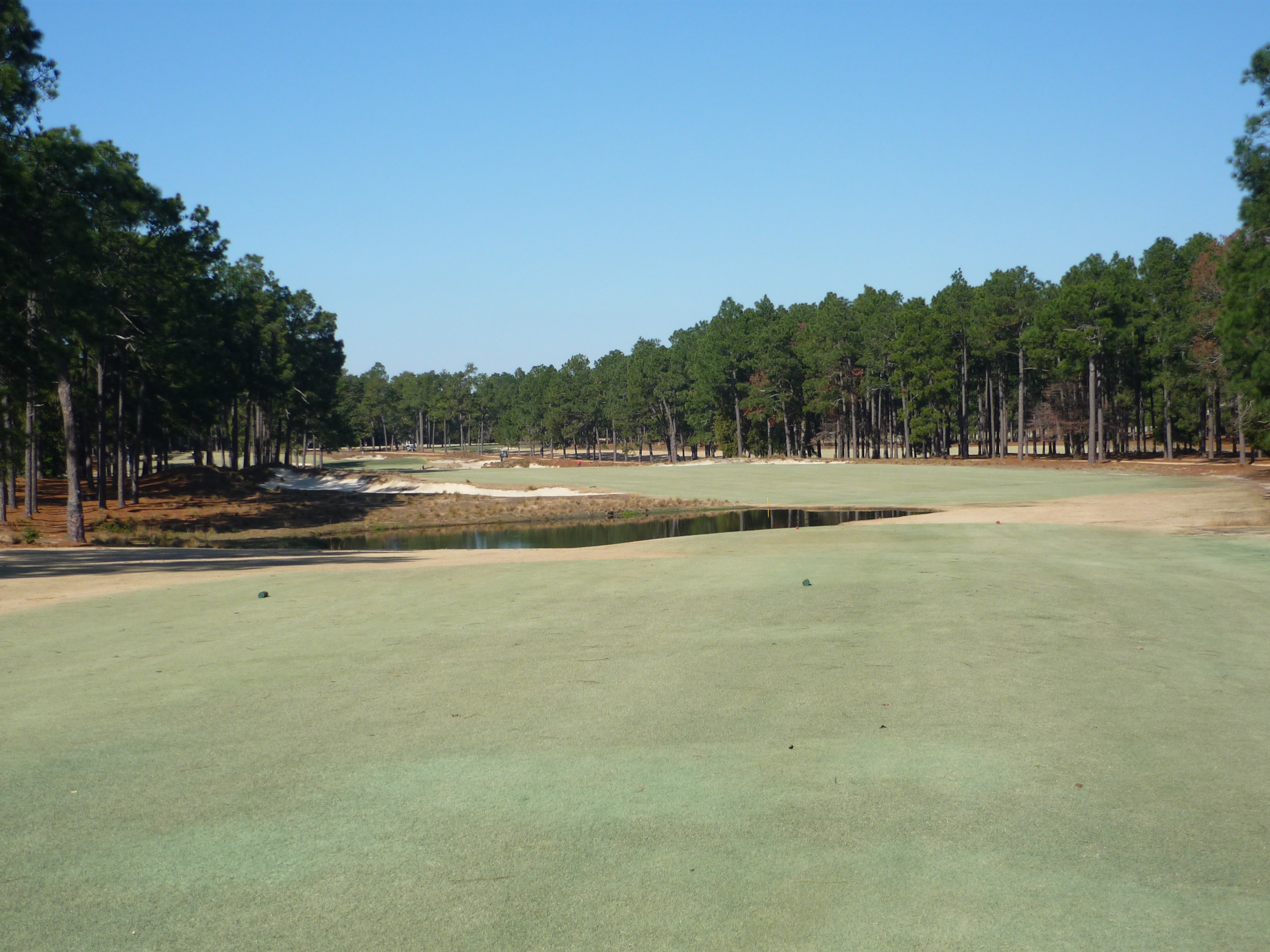
The approach plays over a little dip in the fairway and to a green guarded by bunkers.
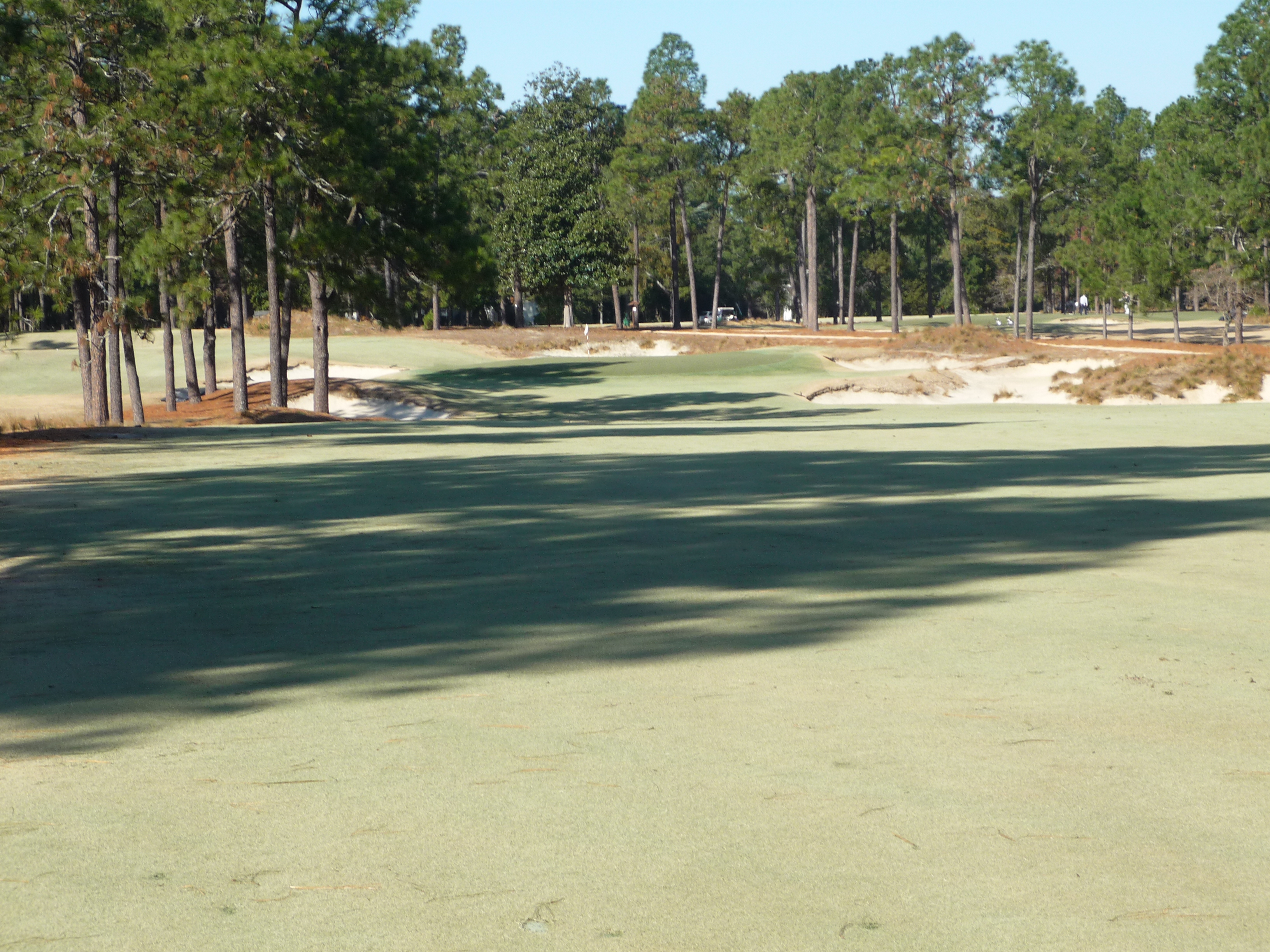
Here is the side view of the putting surface.
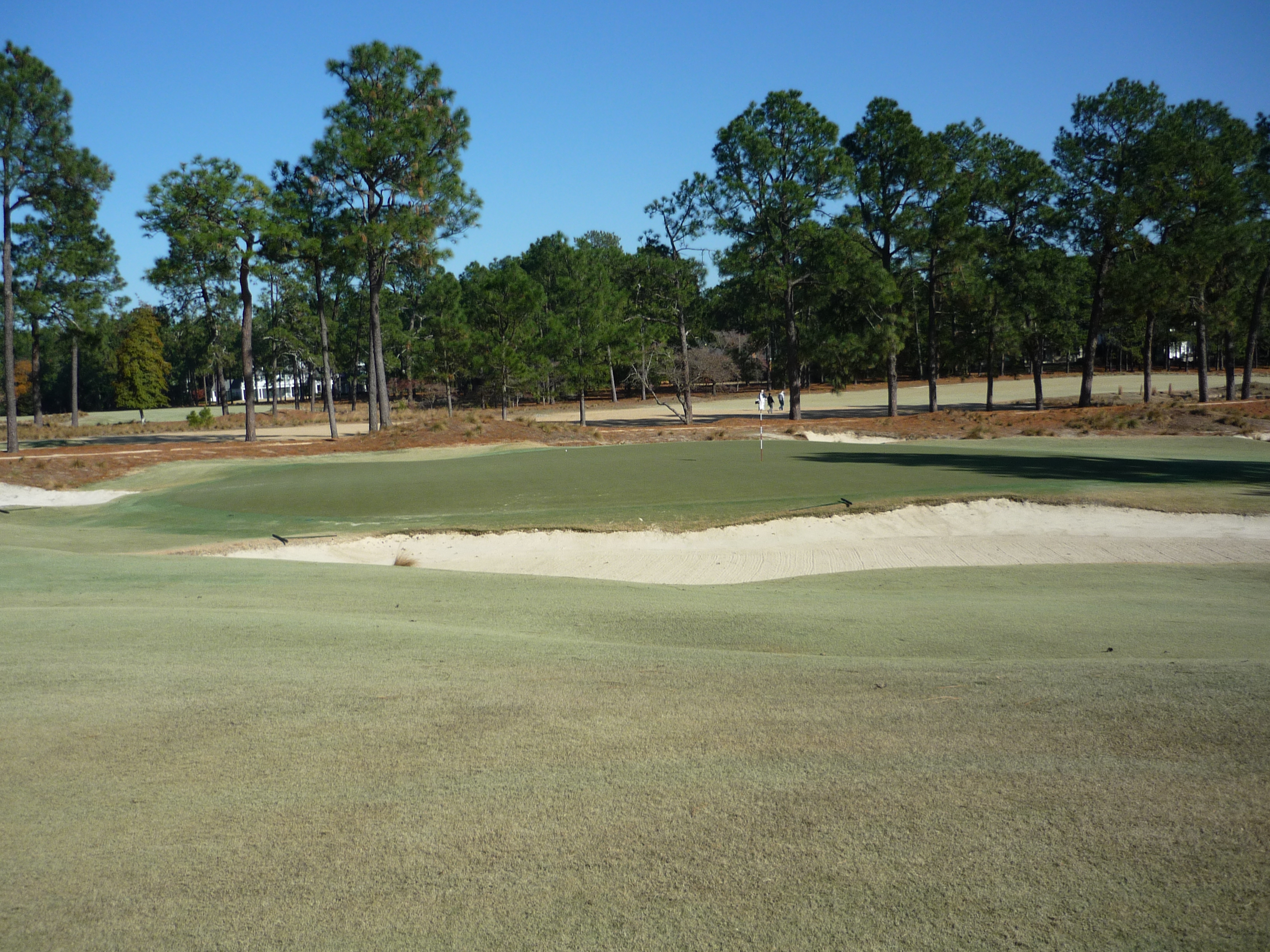
Hole 17 – 162 yards – Par 3
This hole has plenty of good history with Payne Stewart and Phil Mickelson hitting shots stiff in the final round of the 1999 US Open. Distance control is crucial with the bunkers guarding short and long.

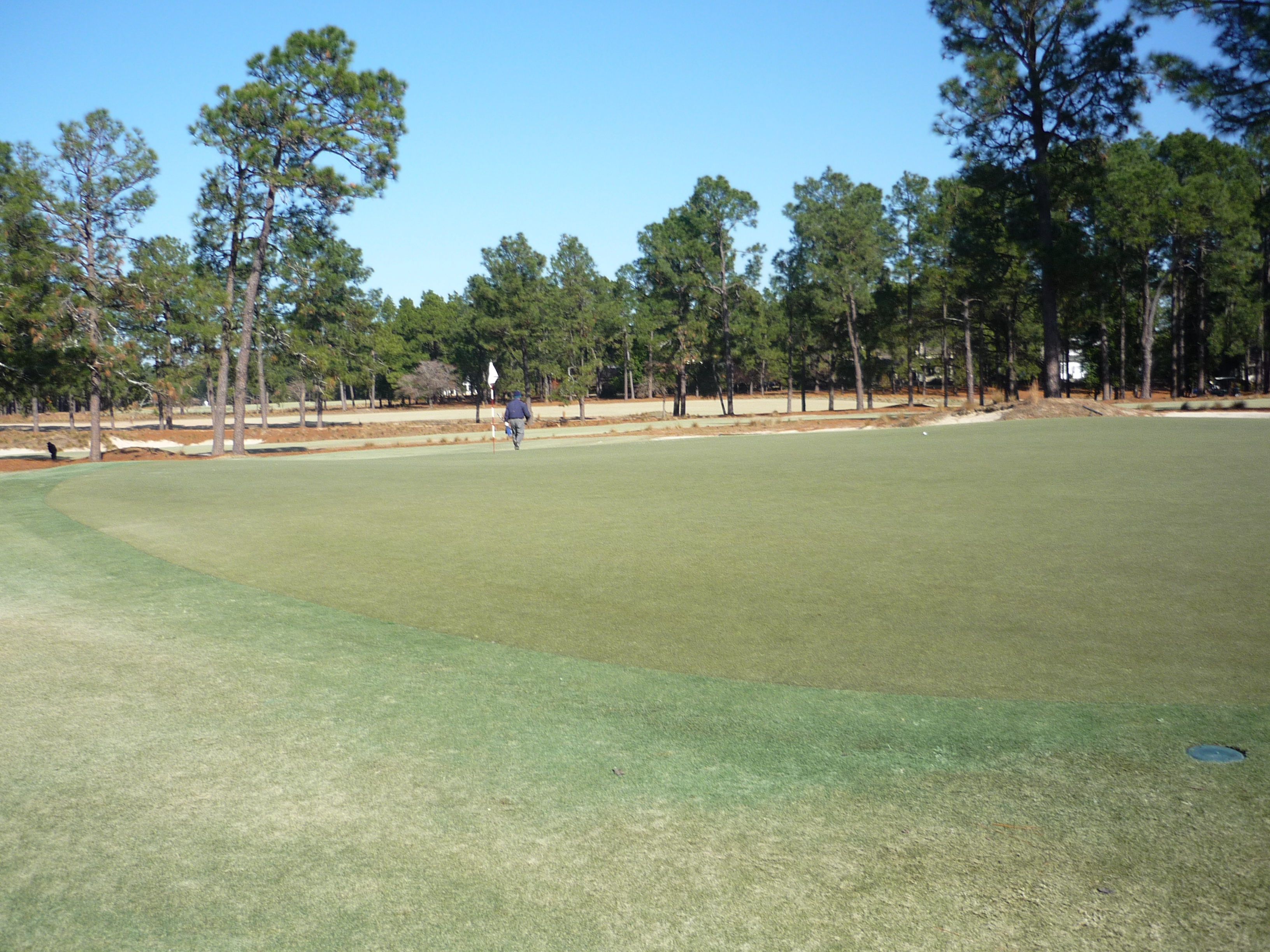
And a little more zoomed in version.
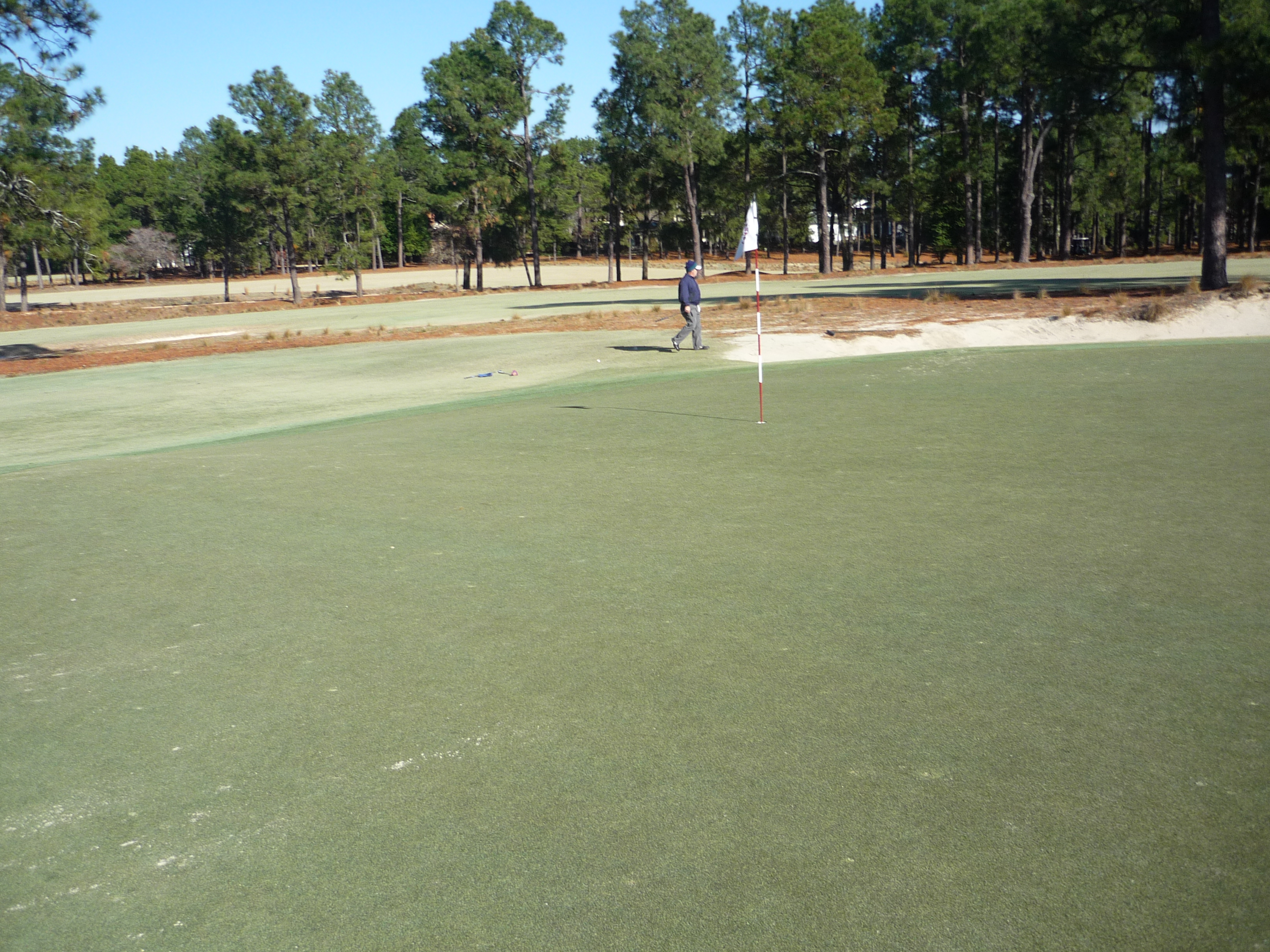
Hole 18 – 366 yards – Par 4
The famous finishing hole at Pinehurst No. 2 is much different from when Stewart won in 1999. There is no rough at all. A slight fade aimed up the middle of the fairway will leave you with a great look at the green.
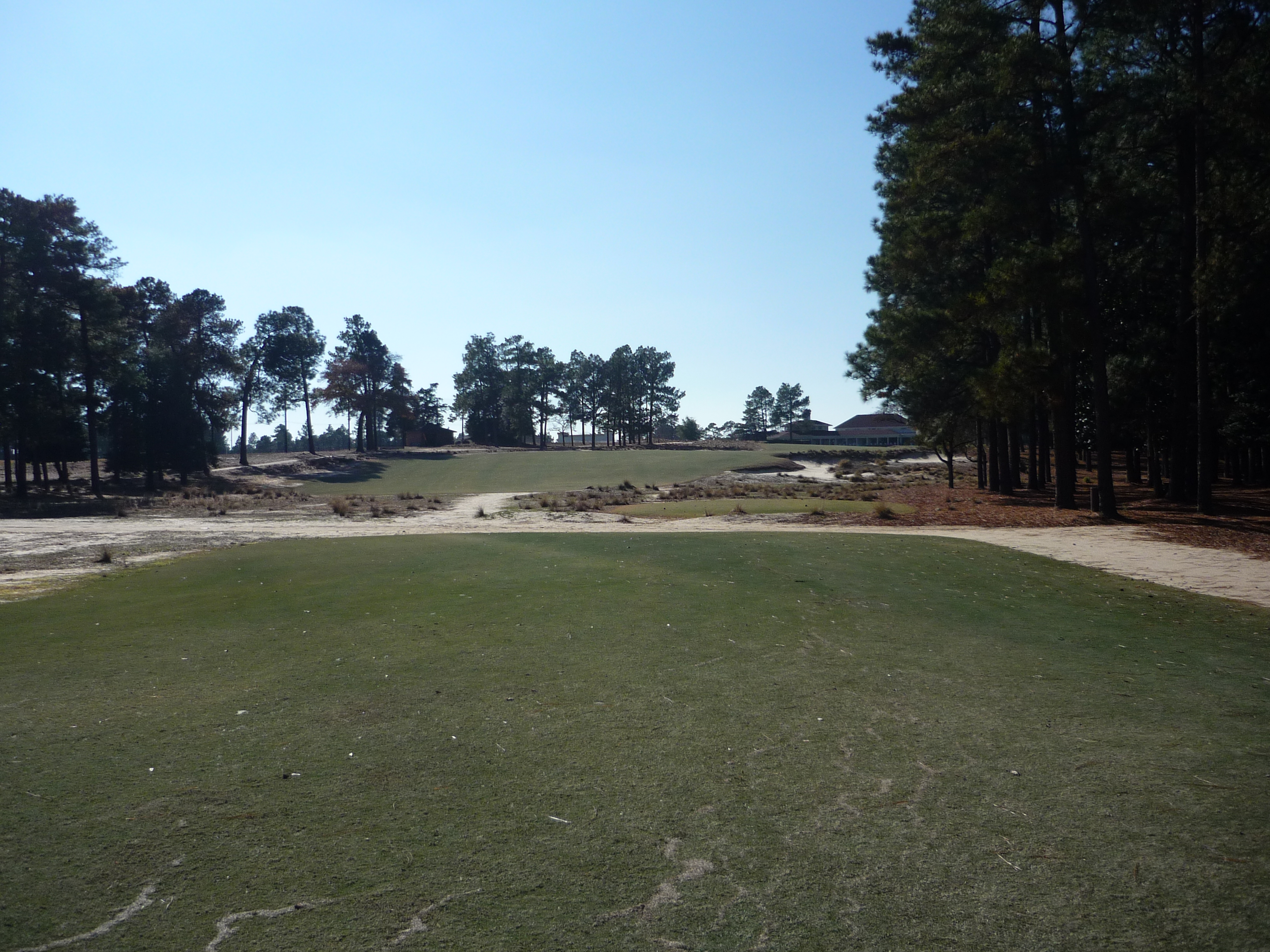
The green is quite large. You will not want to go too far with your shot as a cart path comes into play behind the green.
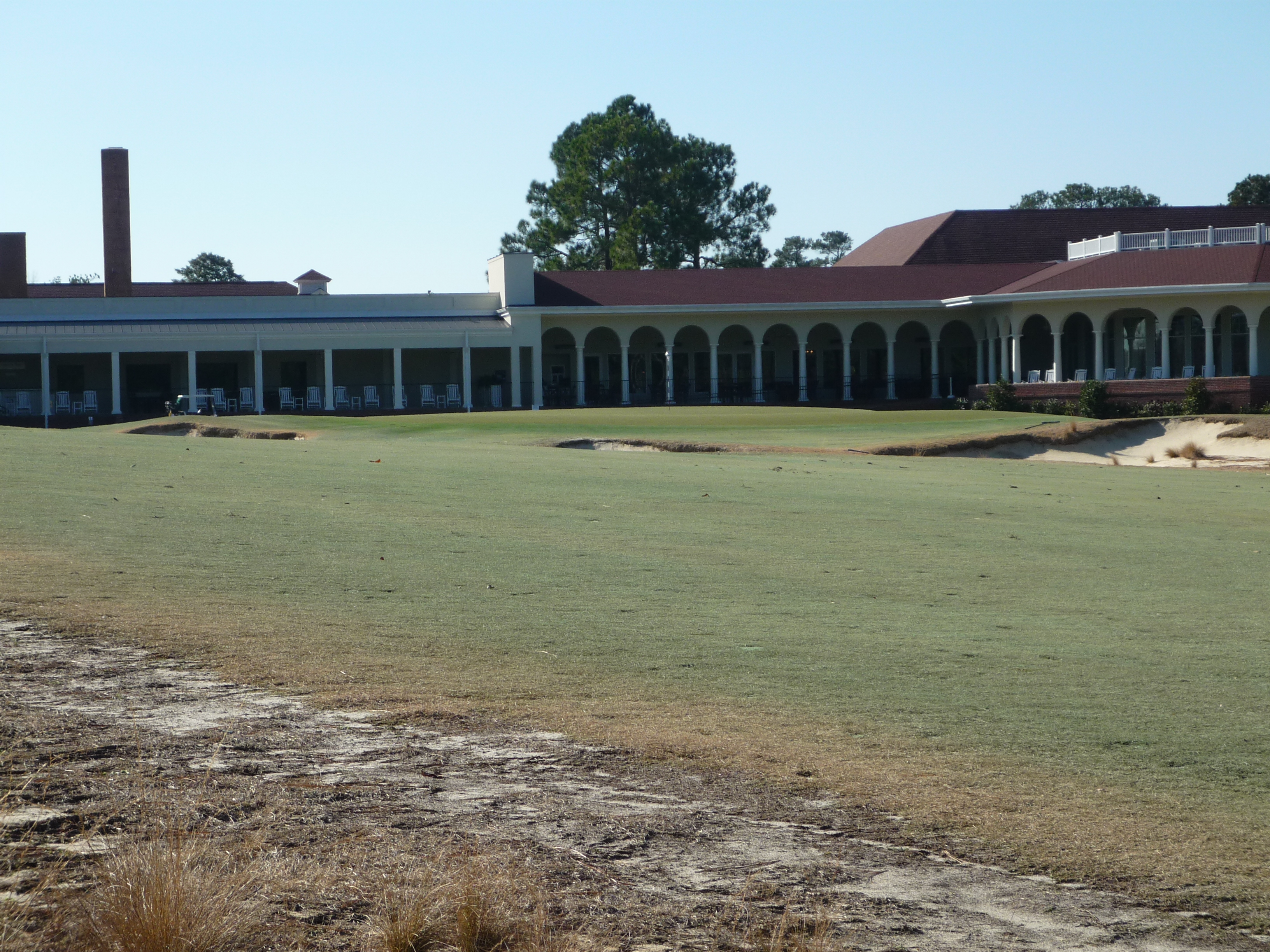
Here is the green as seen from that cart path. The slopes go away from the putting surface and make for slippery chips. The middle of the green is a good play.
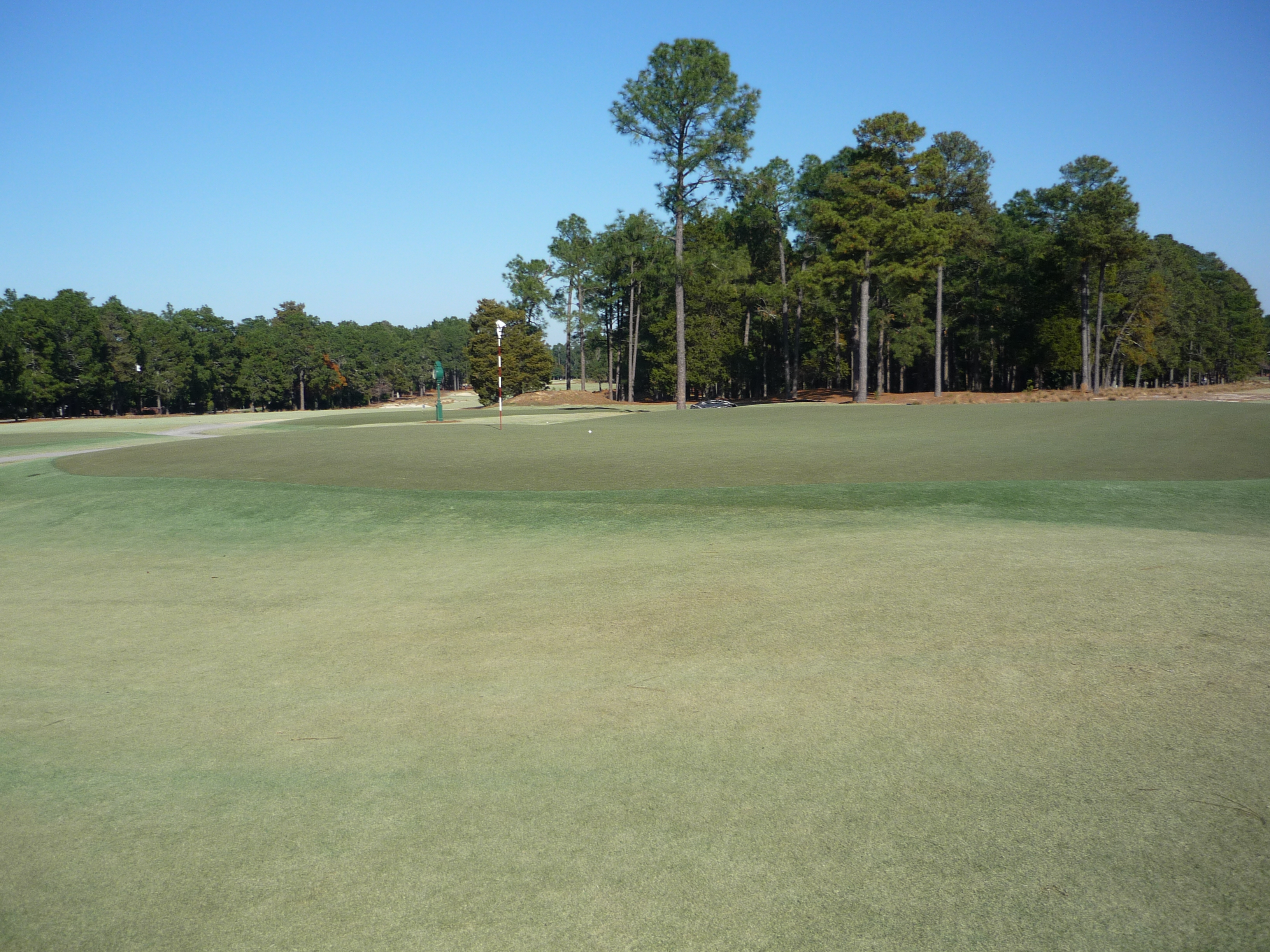
The clubhouse, built in 1899, is one of the iconic buildings in the game. As you saw earlier it features a lot of memorabilia. It is also home to some good eating and drinking with the Donald Ross Grill and 91st Hole.
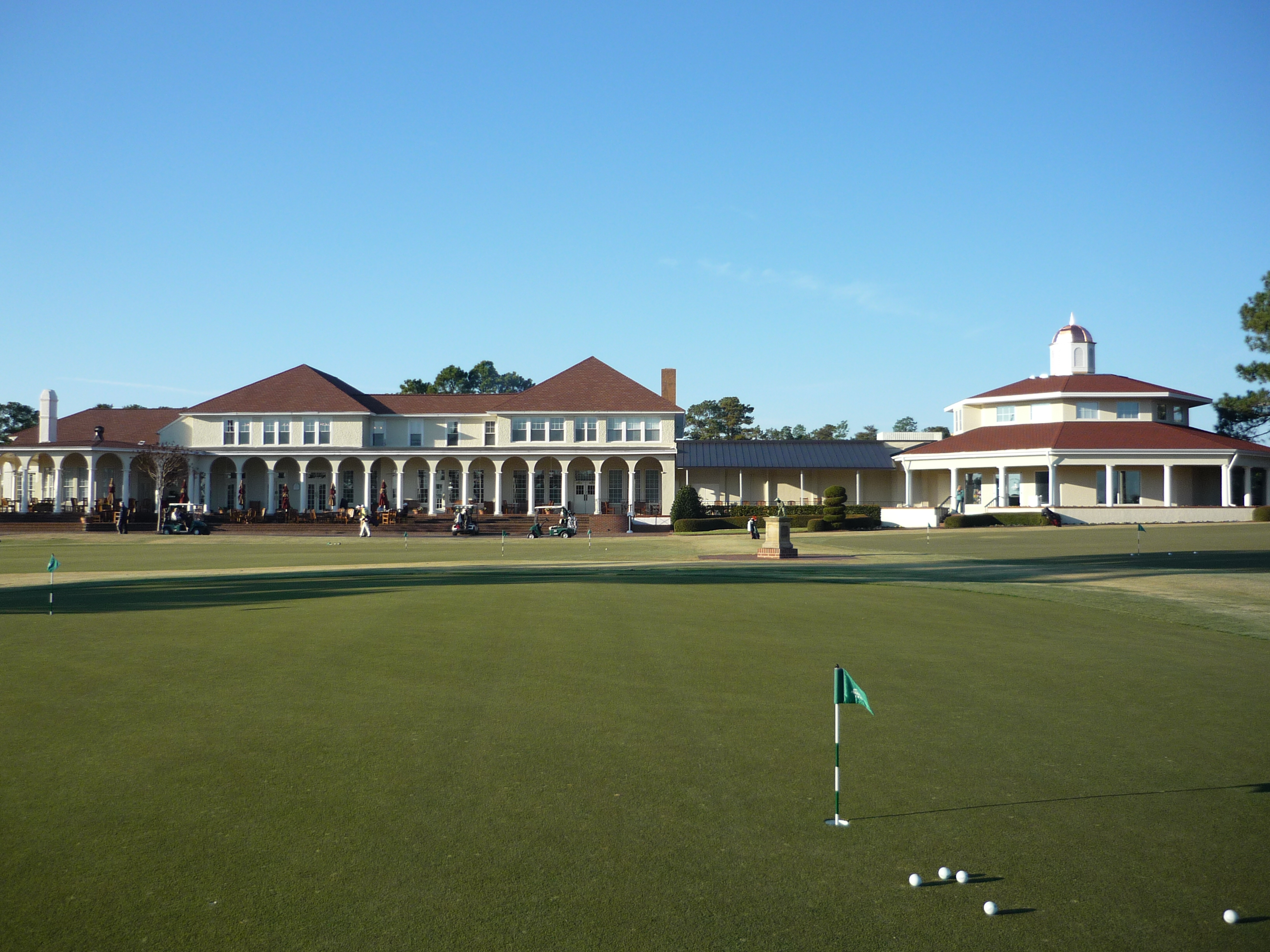
Off to the right side of the clubhouse, if you are standing on the putting green, is the Learning Center. This building houses some clubs for sale as well as video equipment. The driving range is right behind this building.
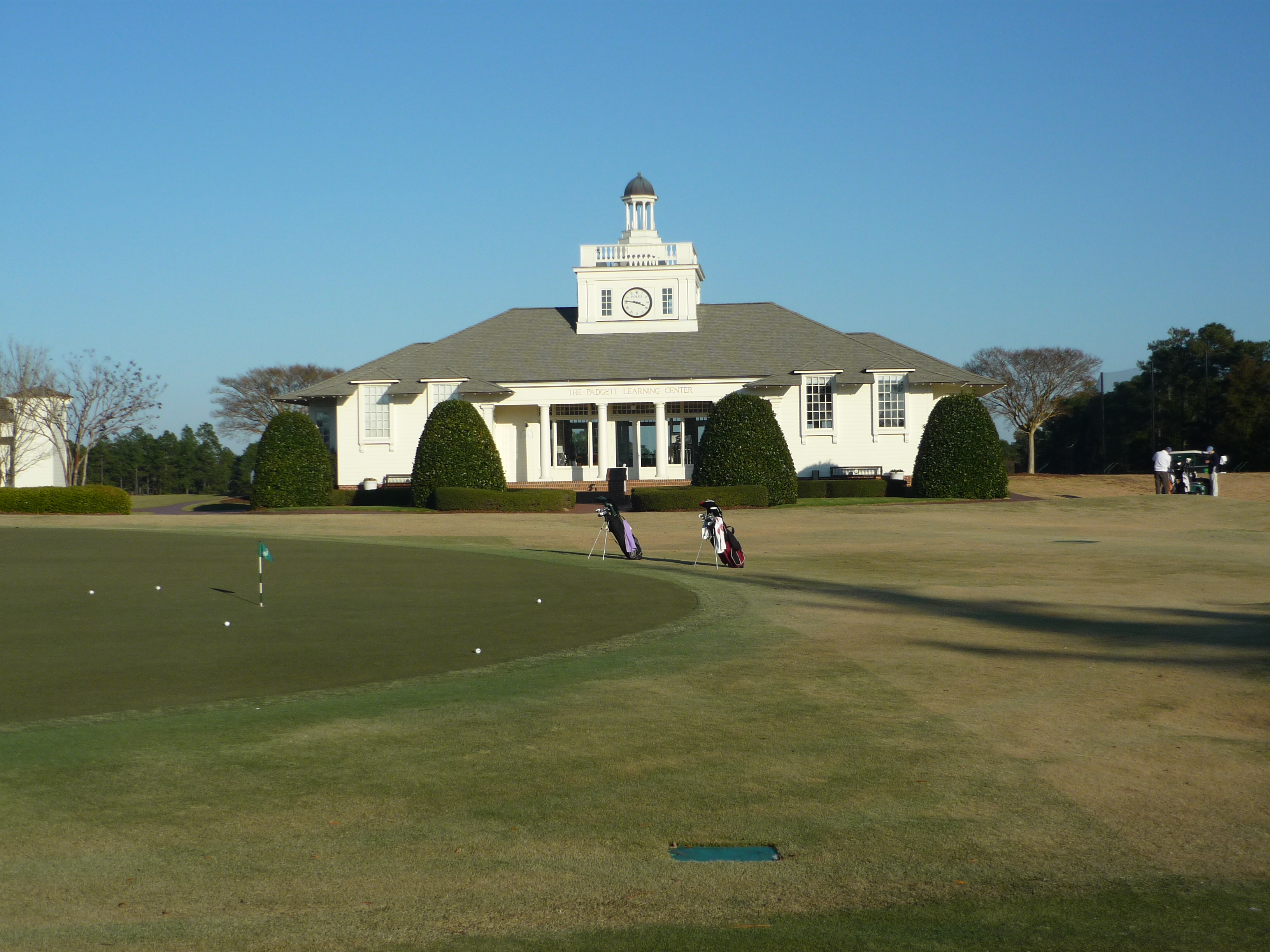
The indelible mascot of the resort, Putter Boy, resides next to the putting and chipping greens constantly practicing his stroke.
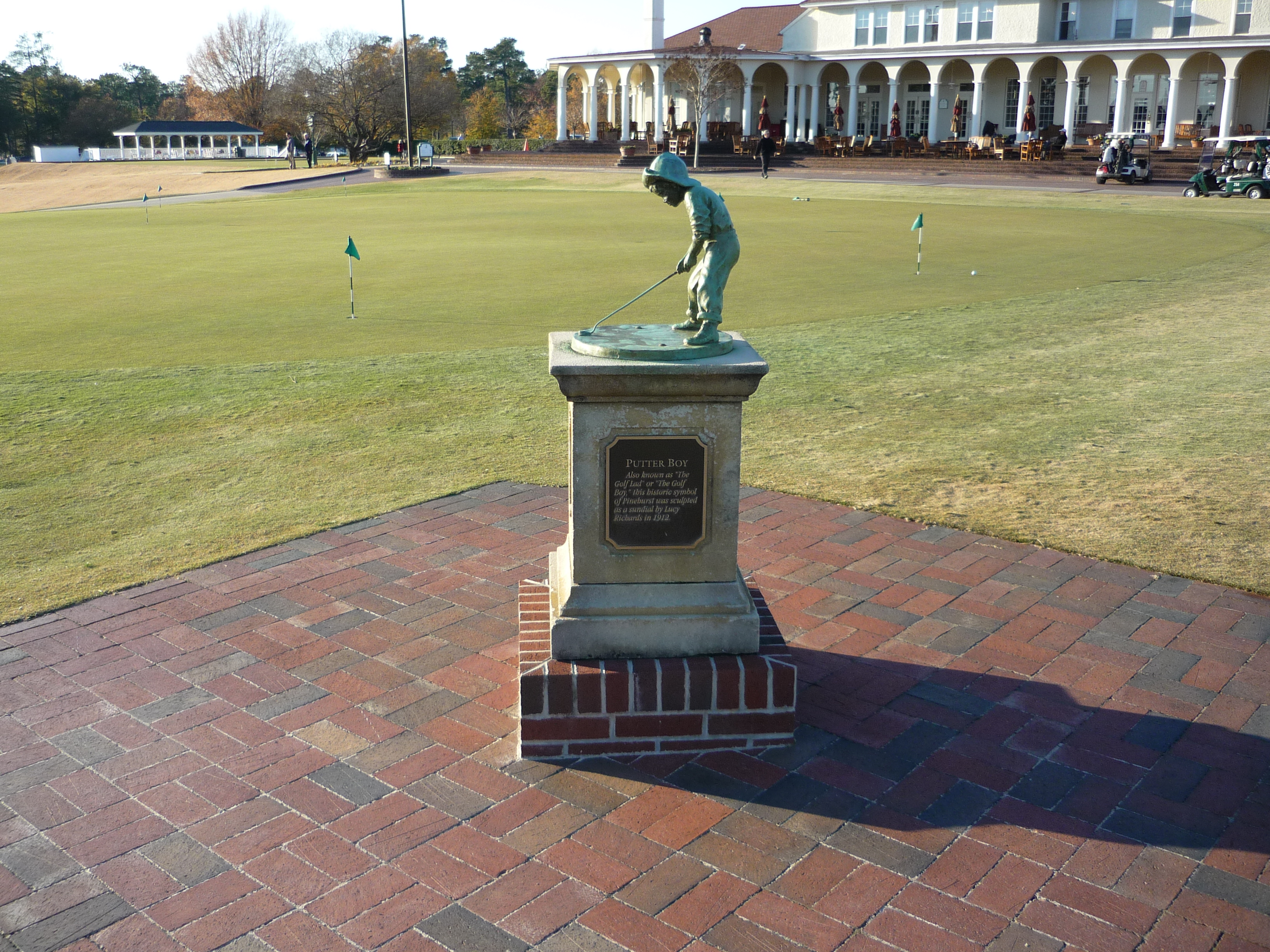
Here you can read his plaque.
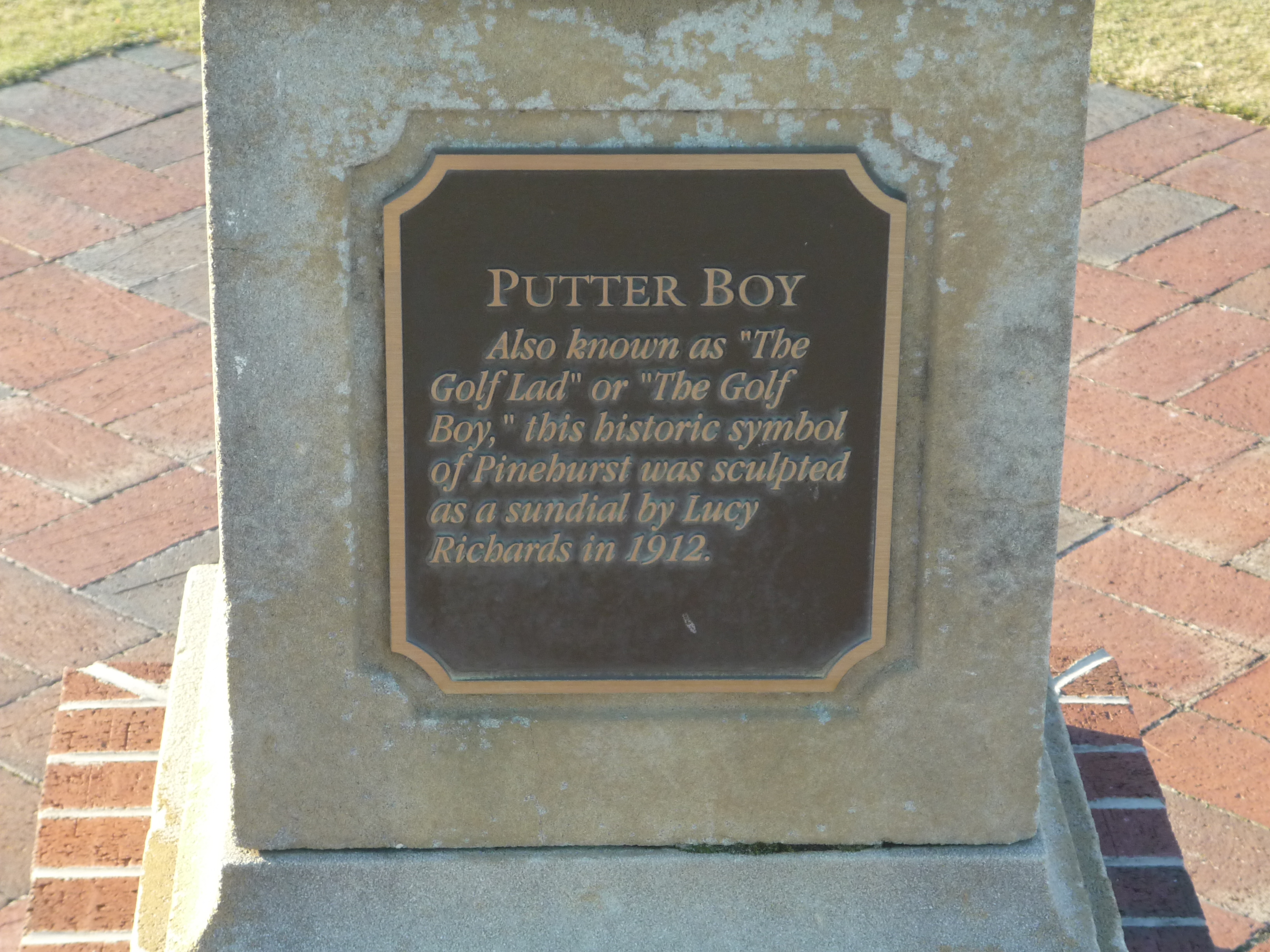
Behind the 18th green of Pinehurst No. 2 sits the statues of Donald Ross and Richard Tufts. Here they uphold the amateur’s creed.
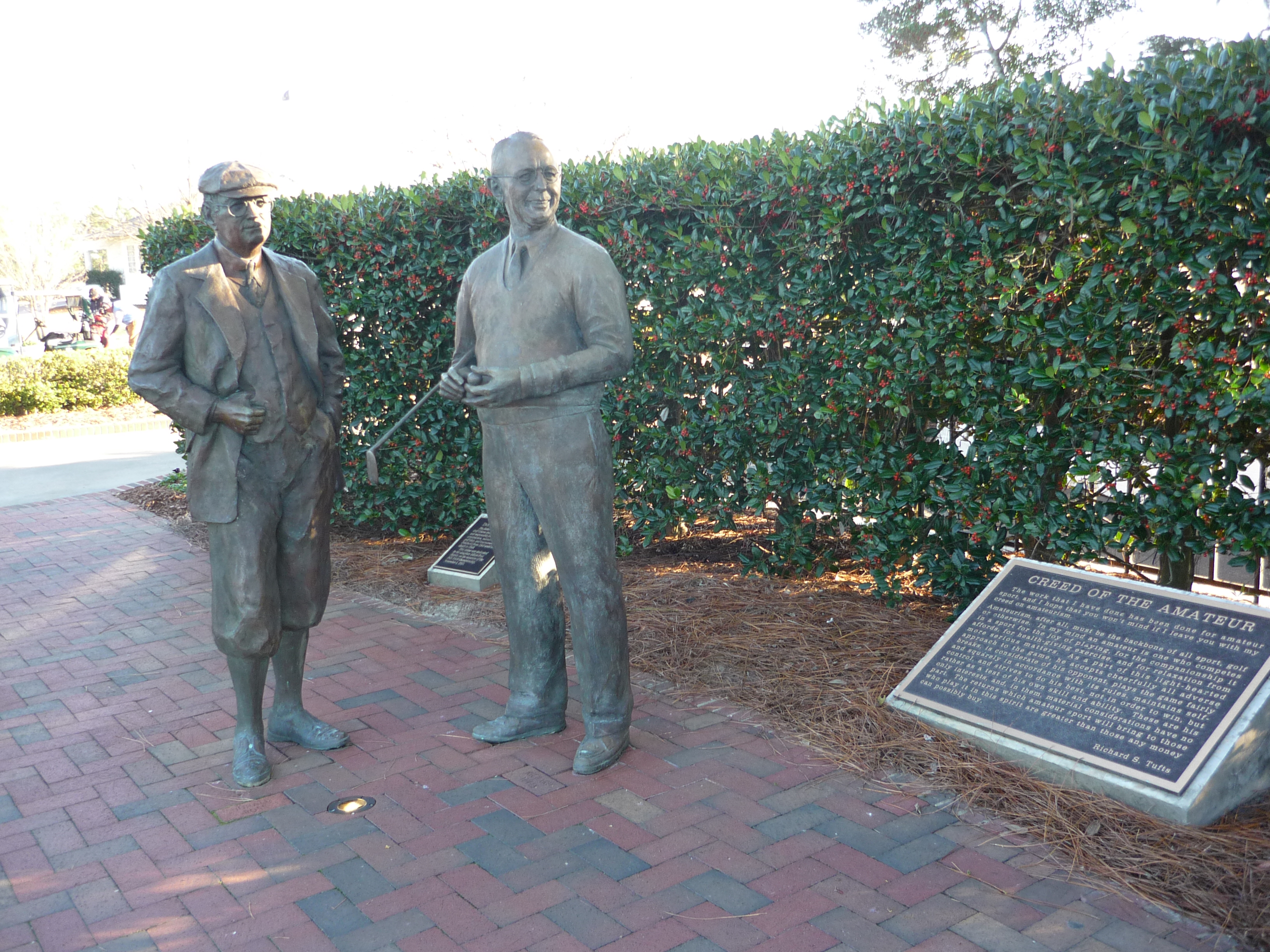
Here is that creed. I particularly like the part about companionship.
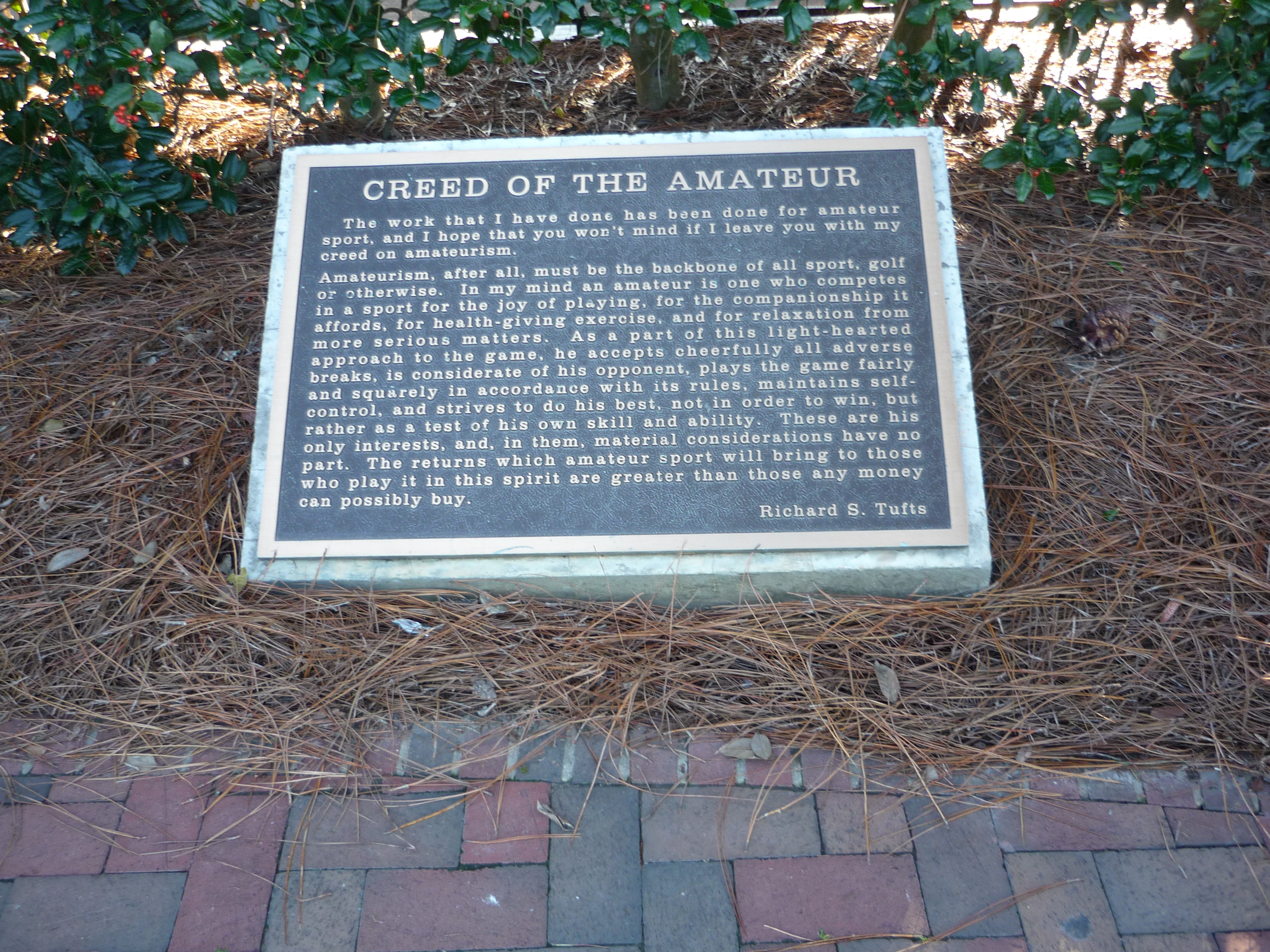
I don’t believe you can go to Pinehurst and not take a picture with Payne. I remember so much about that final round and will always remember his pose in victory. He must have been pretty tall!
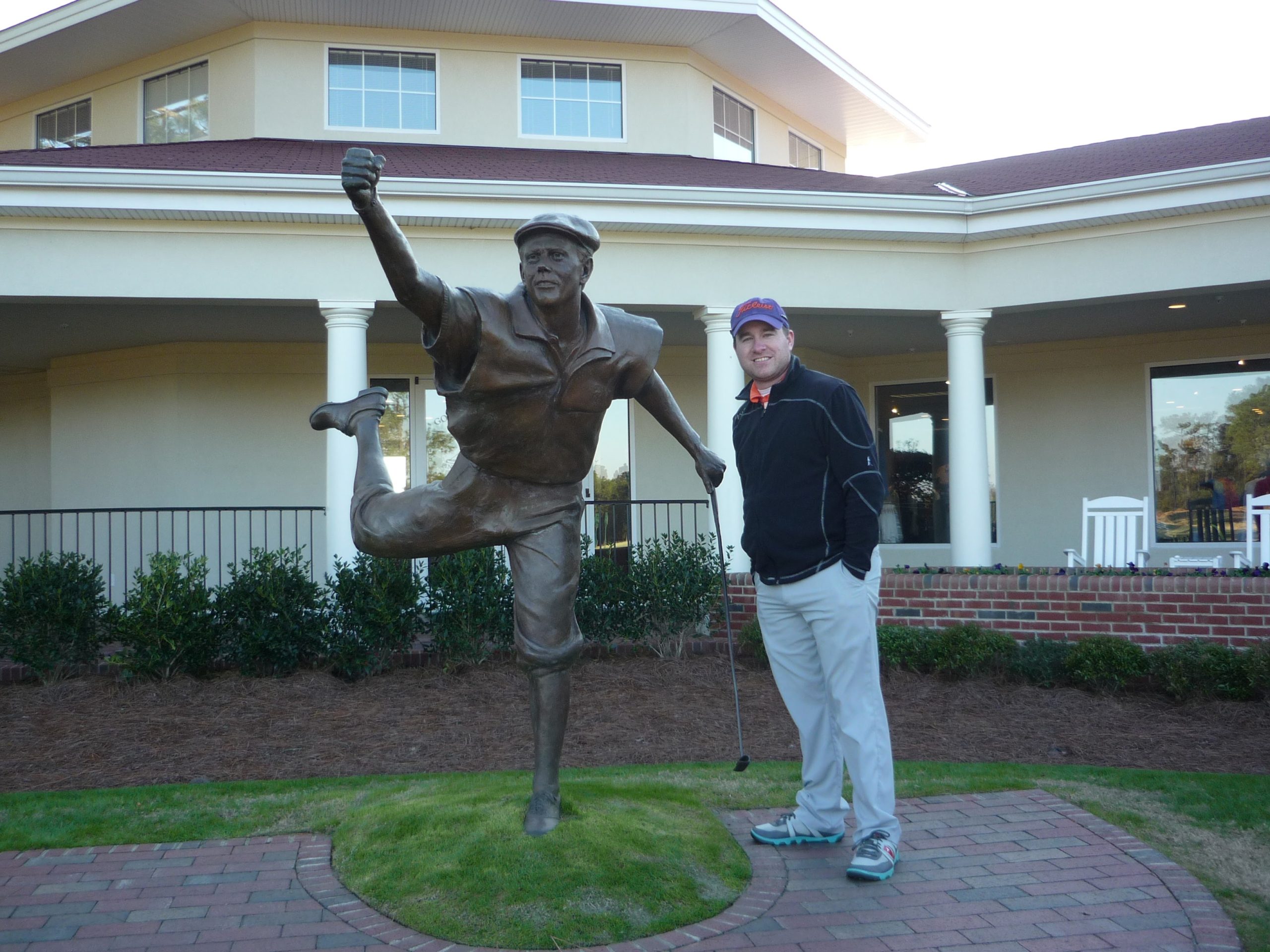
The resort at Pinehurst has wonderful accommodations and world-class golf. If you have the chance to go, do it. Don’t think twice, just book it. Pinehurst No. 2 post-renovation is awesome and a throwback to a different kind of golf architecture. I highly recommend it.

Jimmy,
Awesome photos! I can’t wait to get the chance to visit Pinehurst. Thanks for sharing.
Cheers
Josh
Glad you enjoyed it!